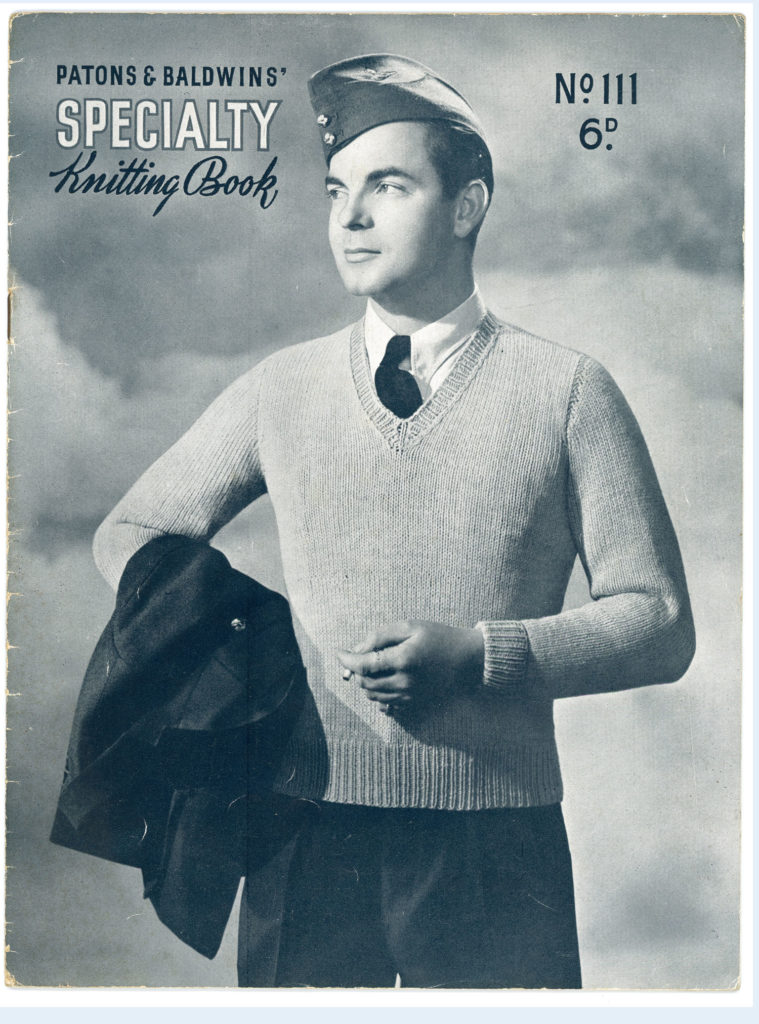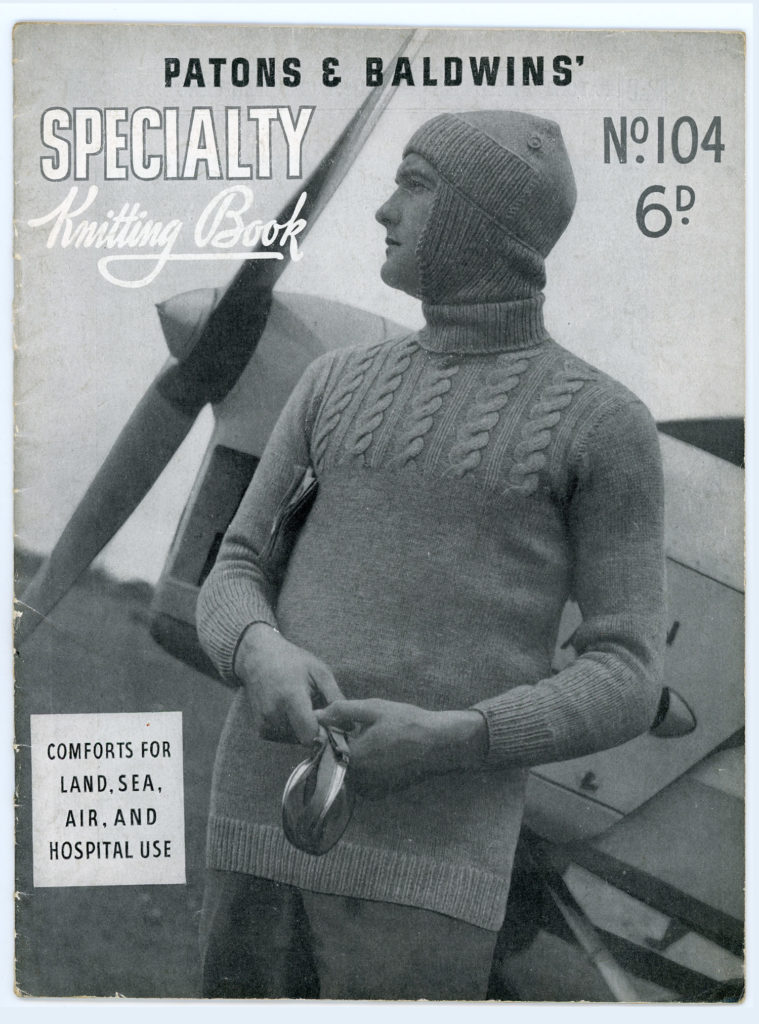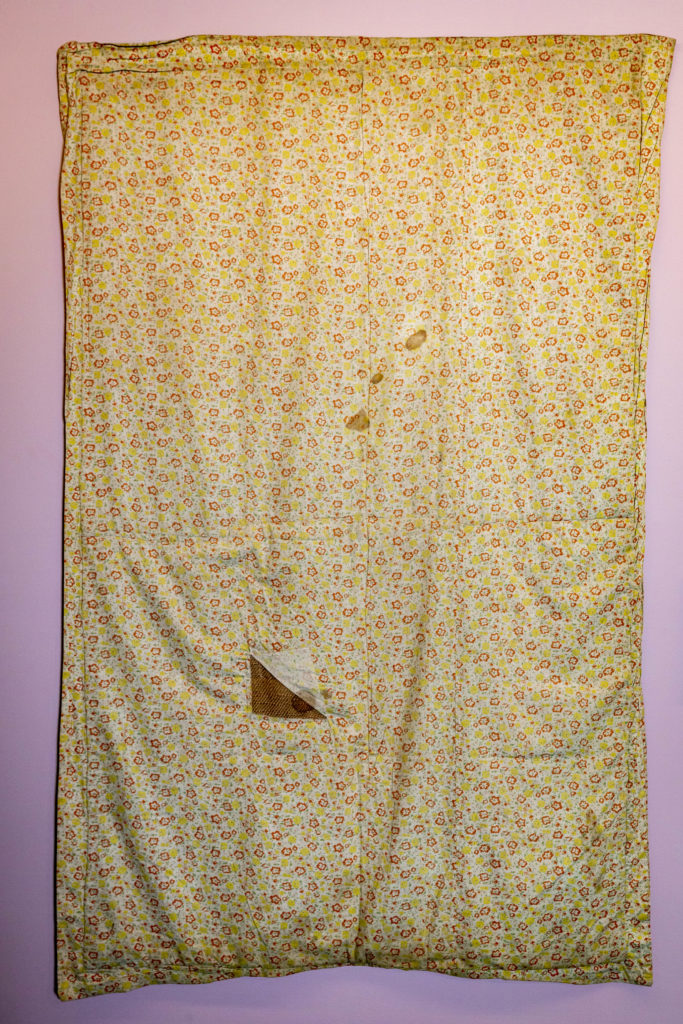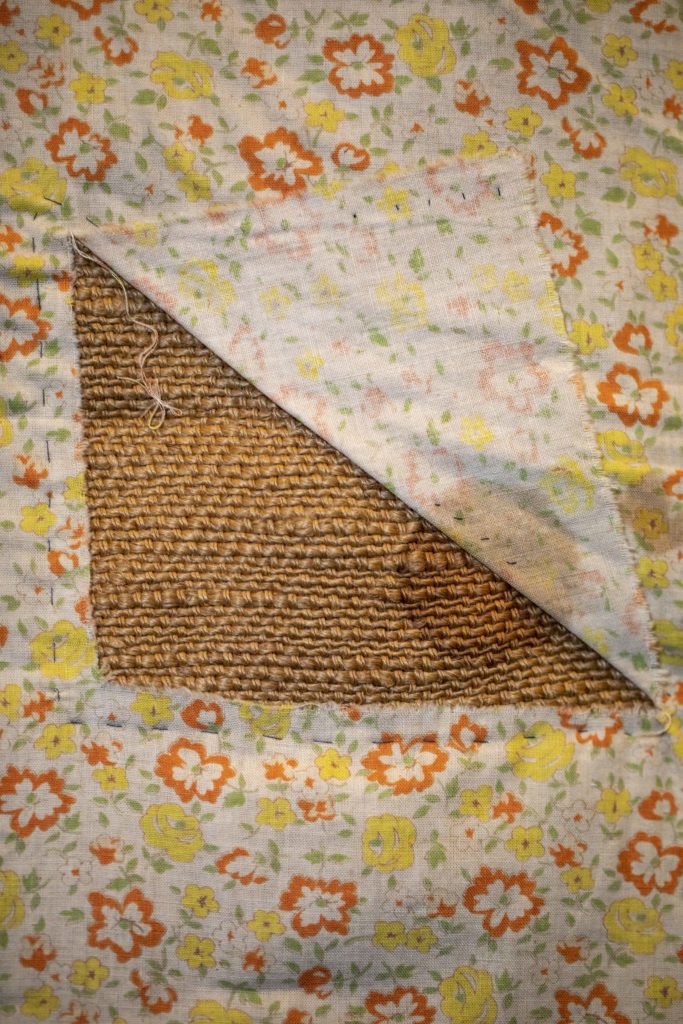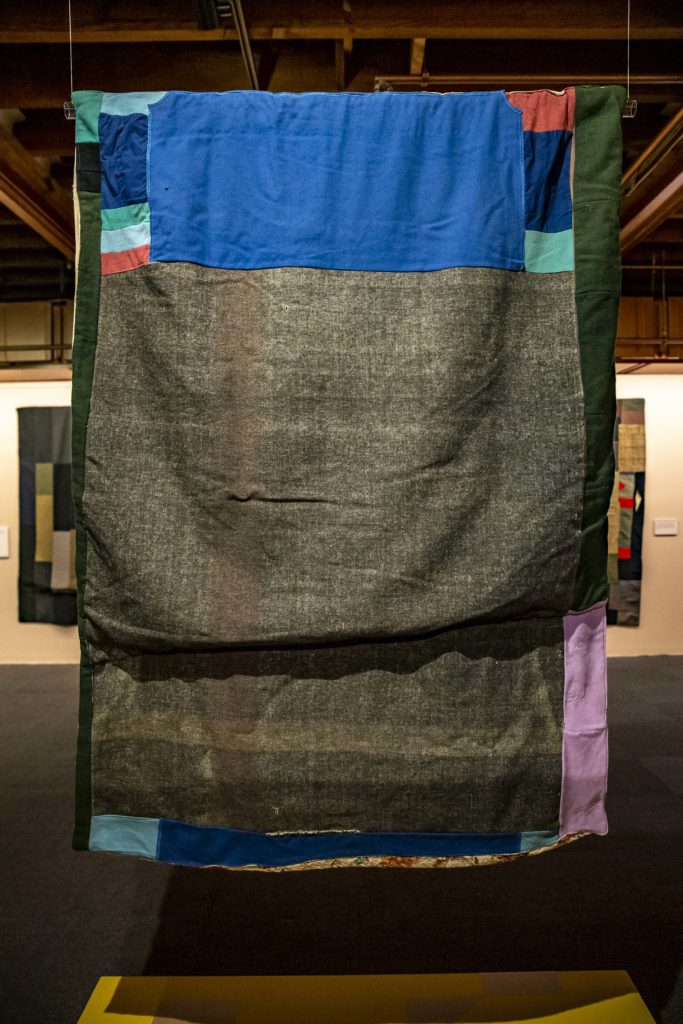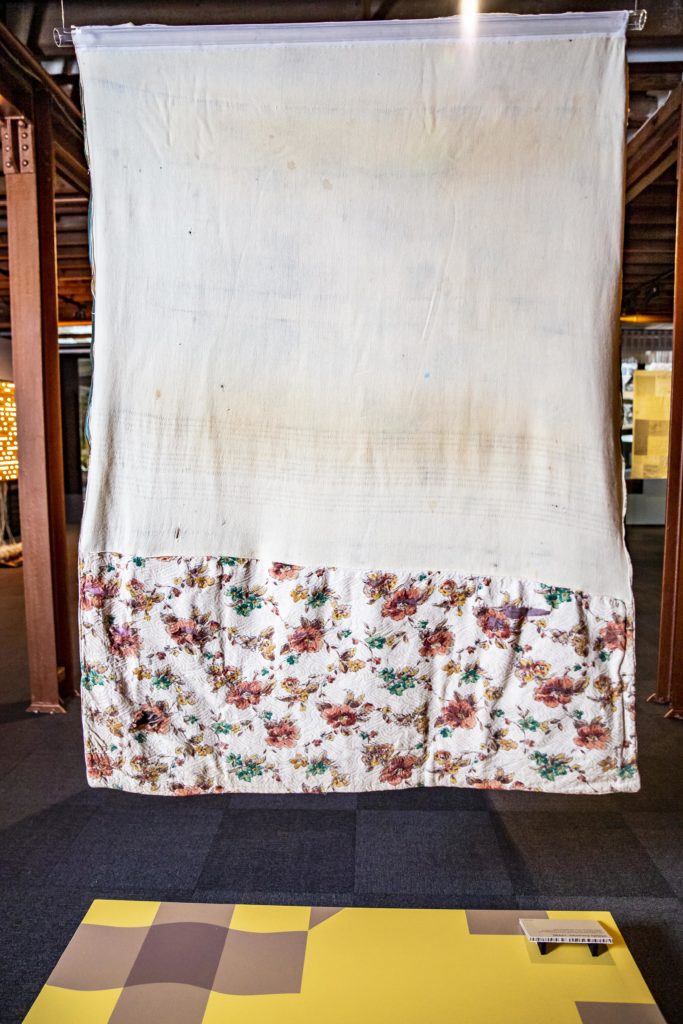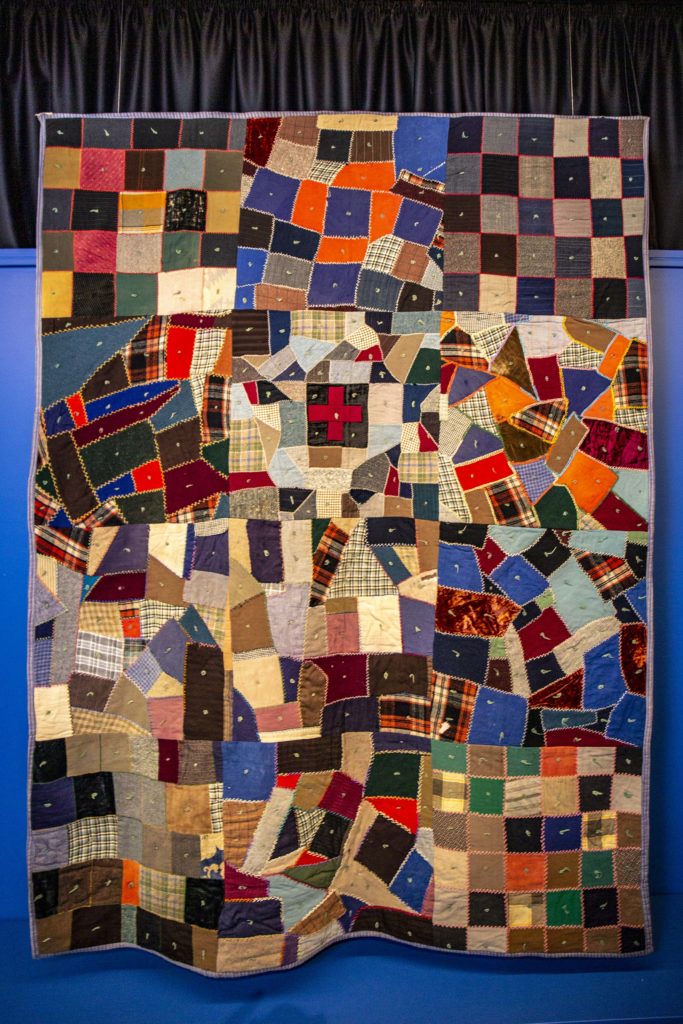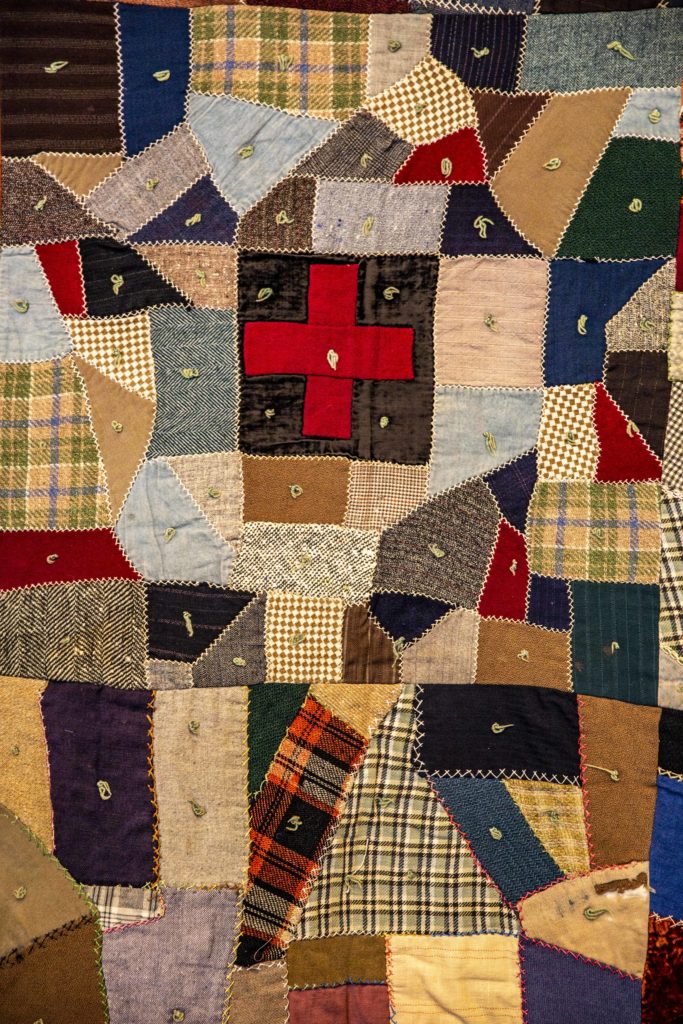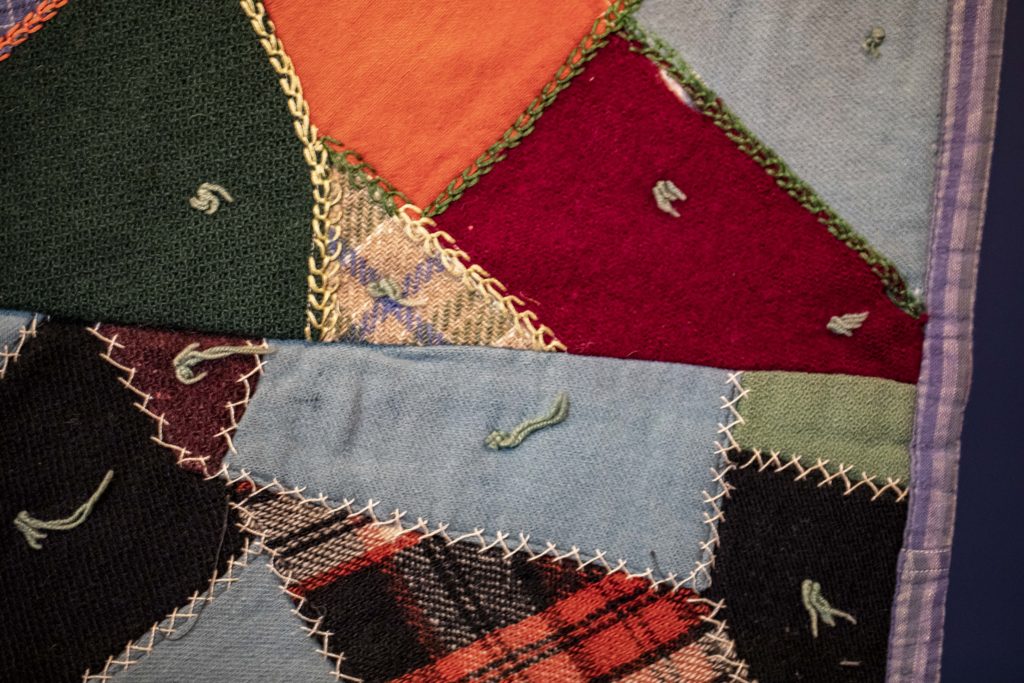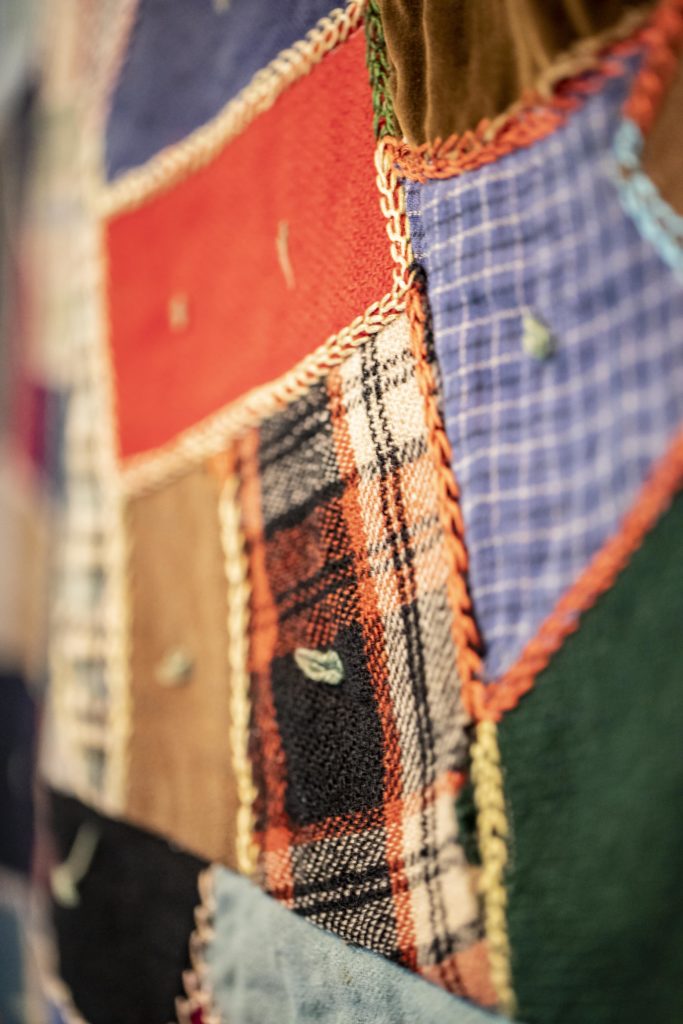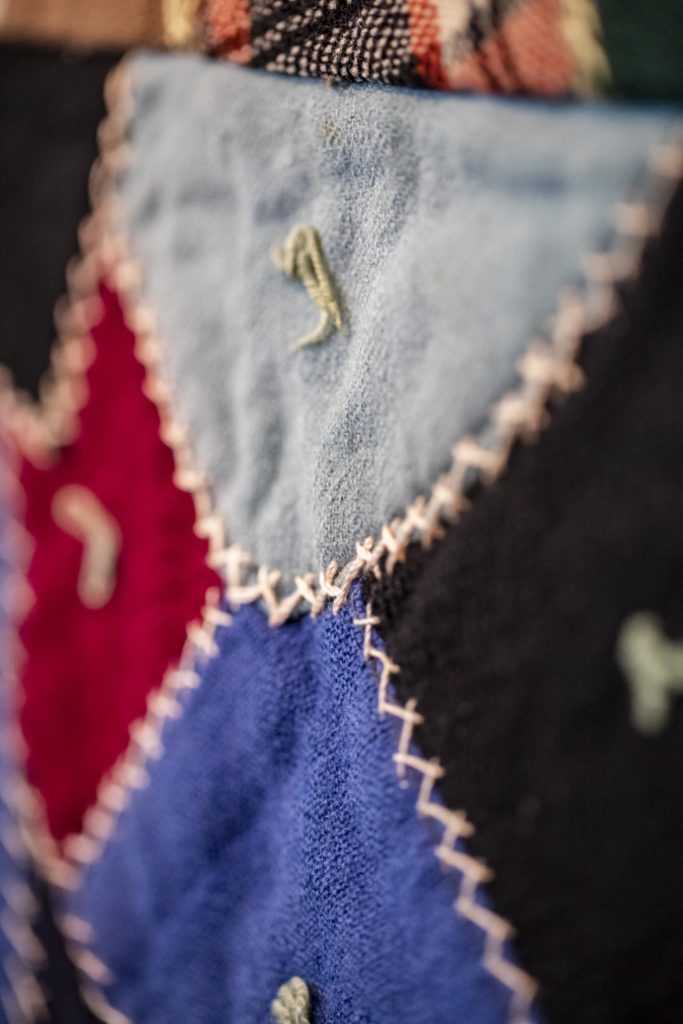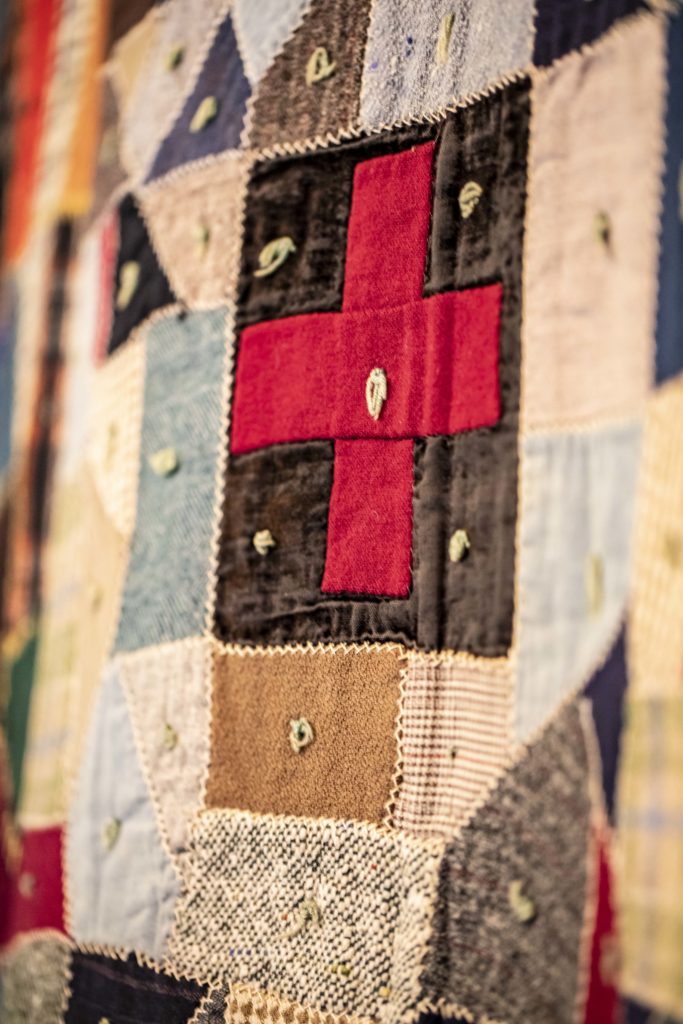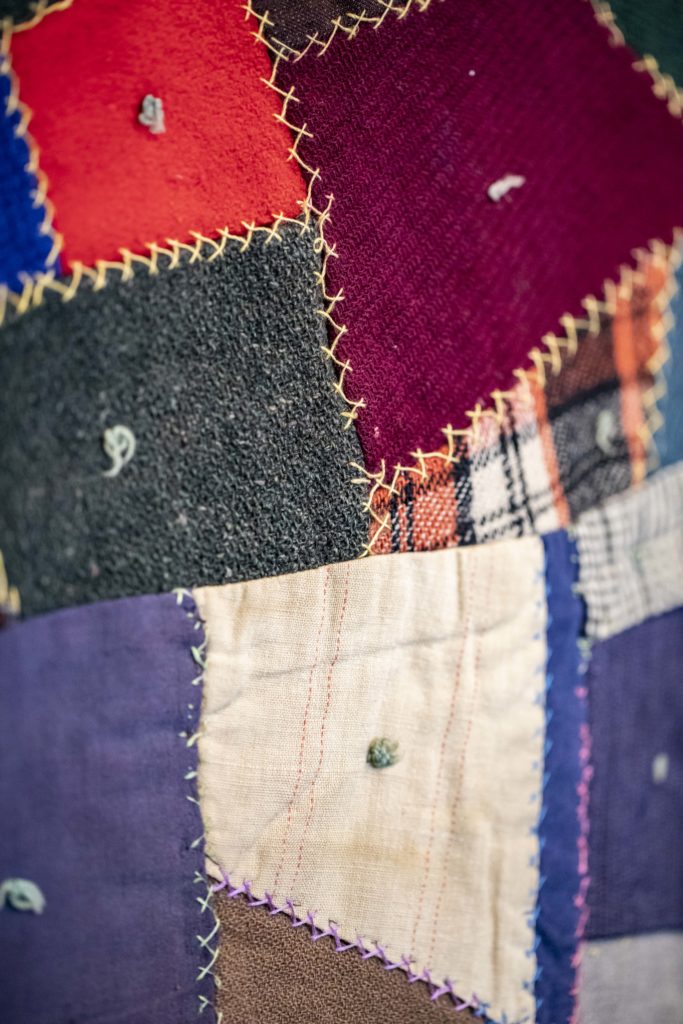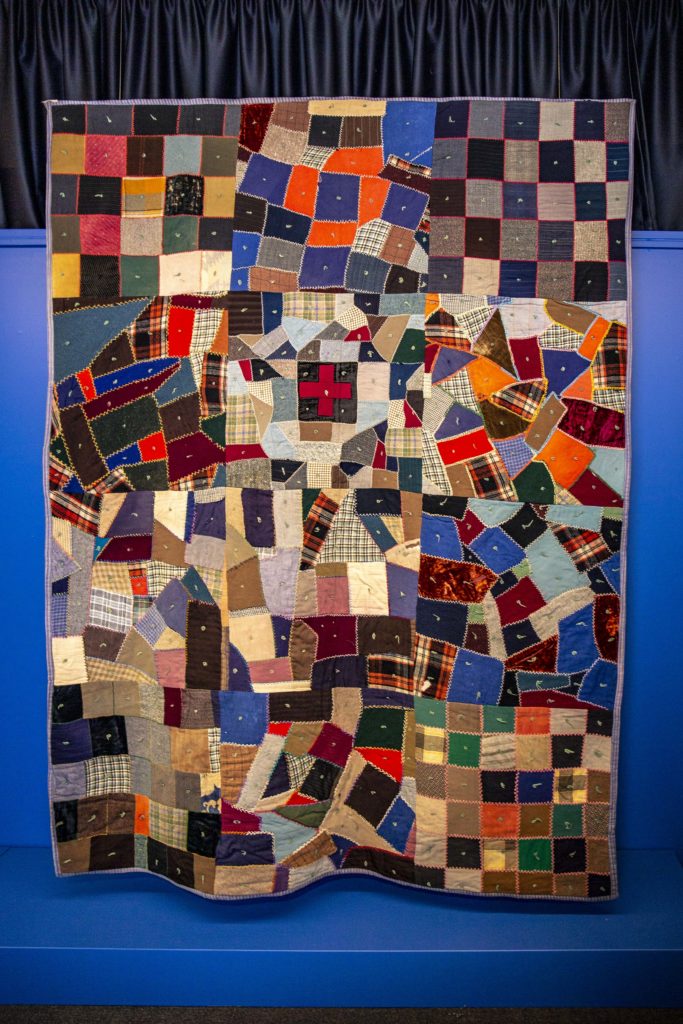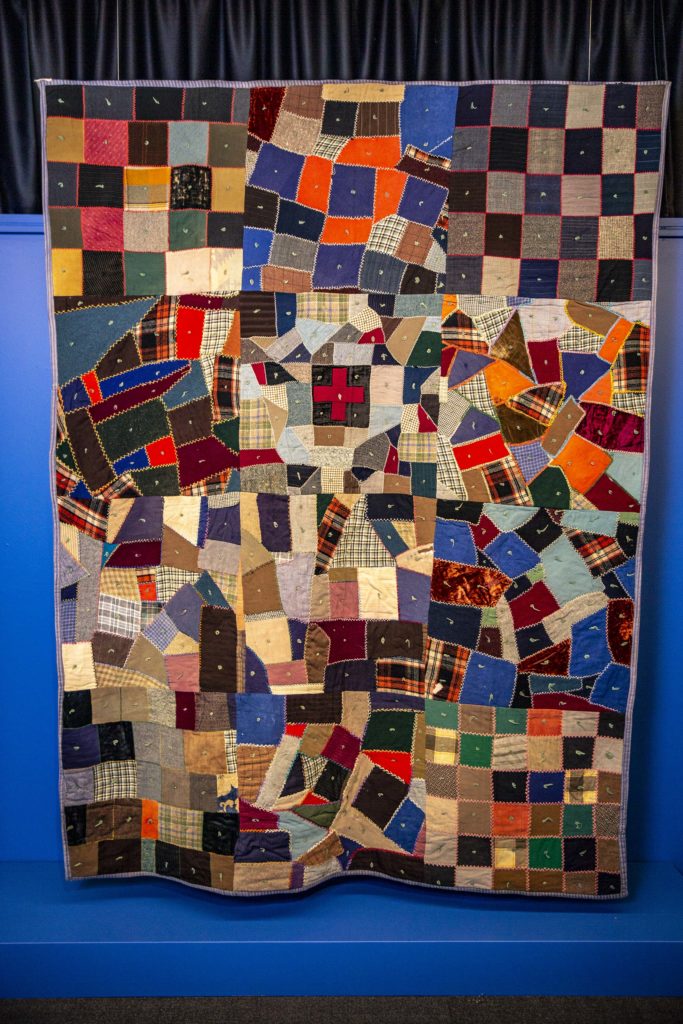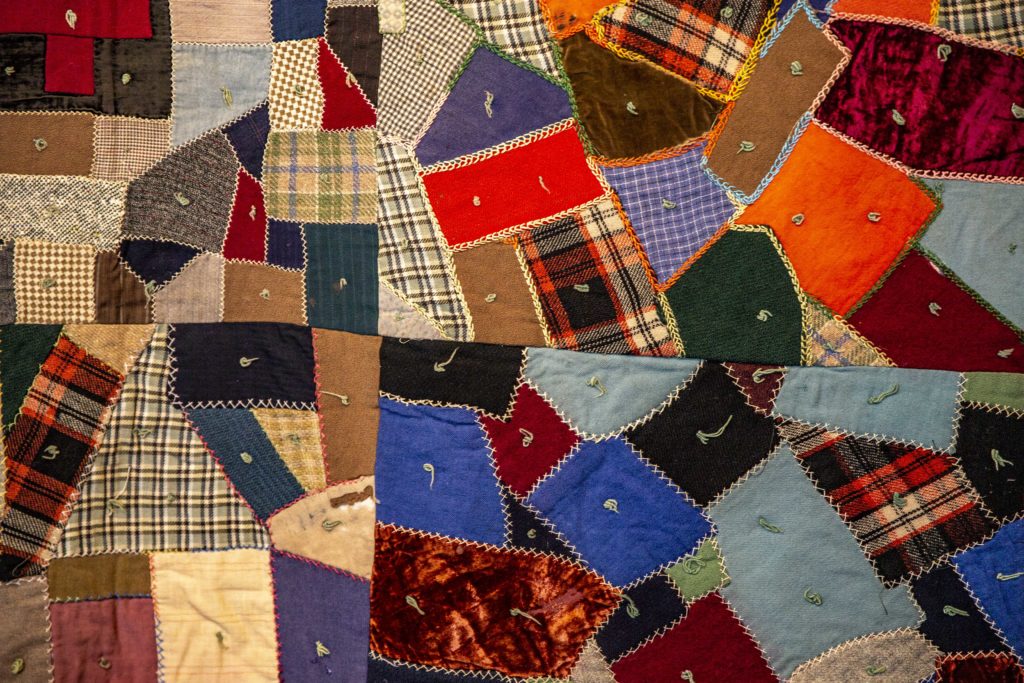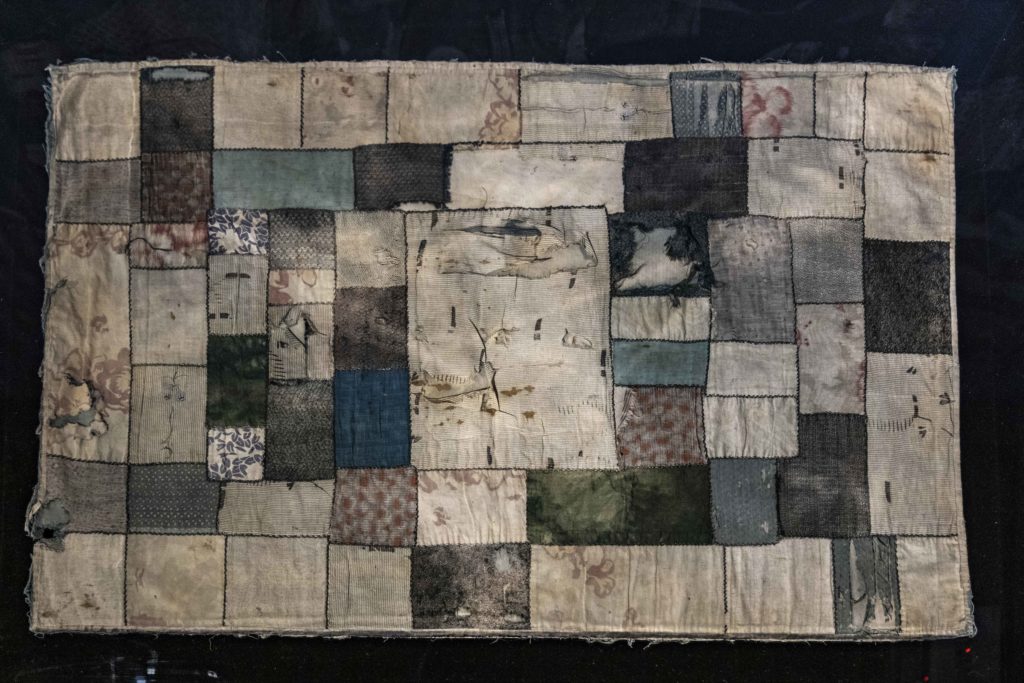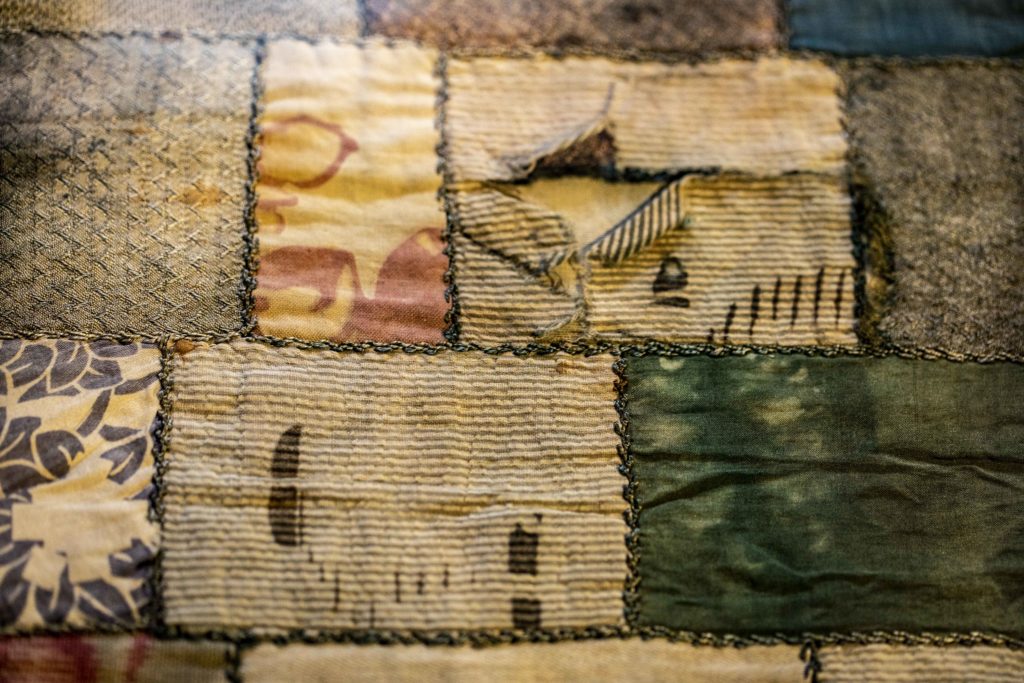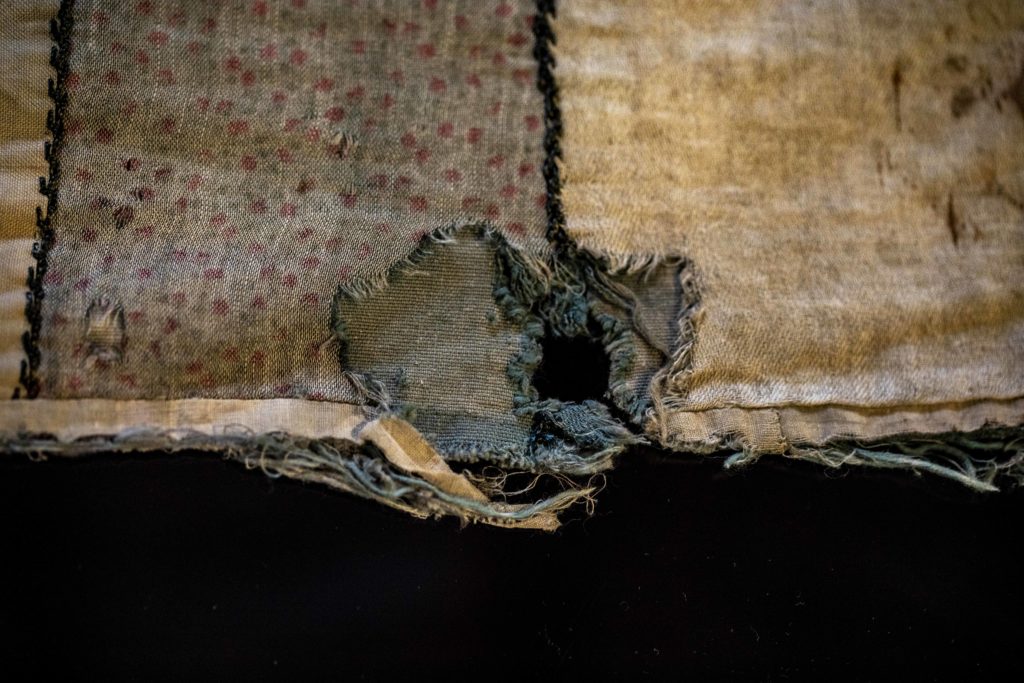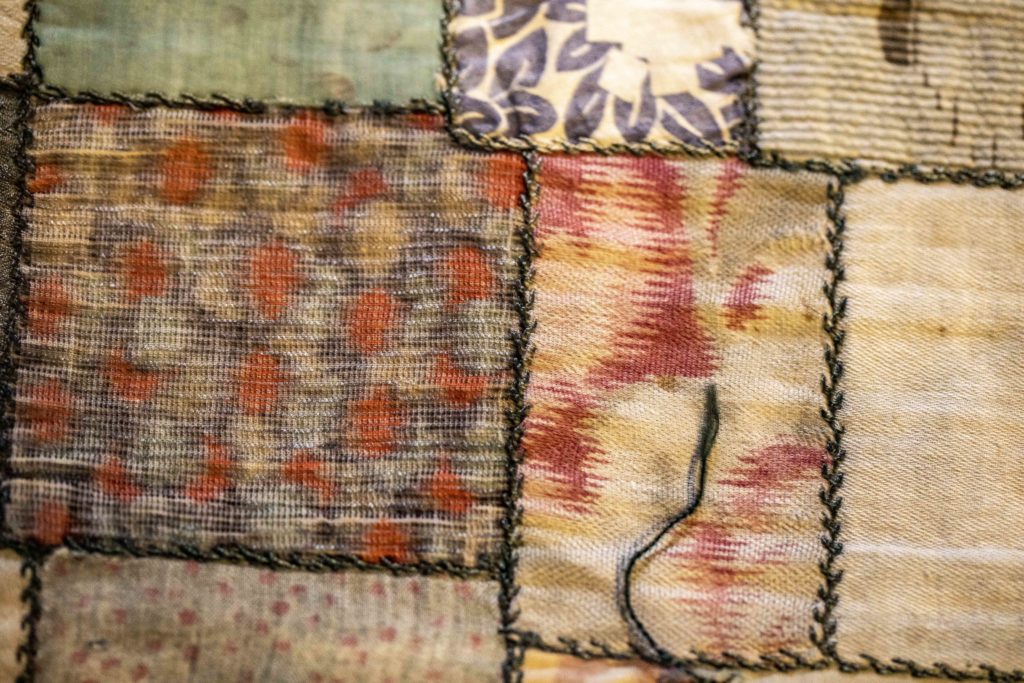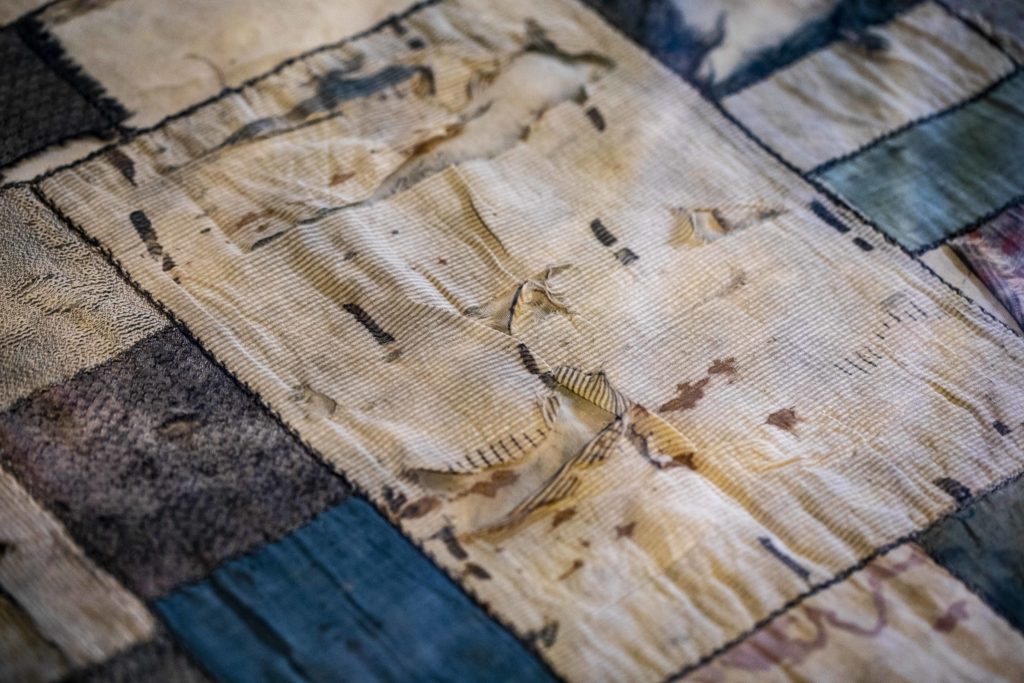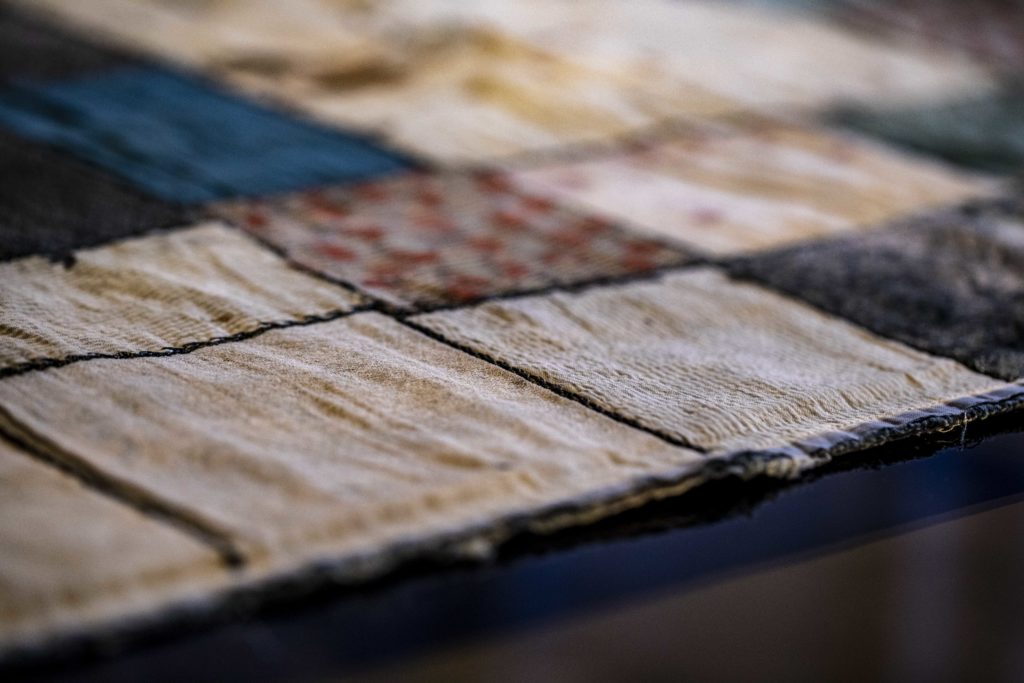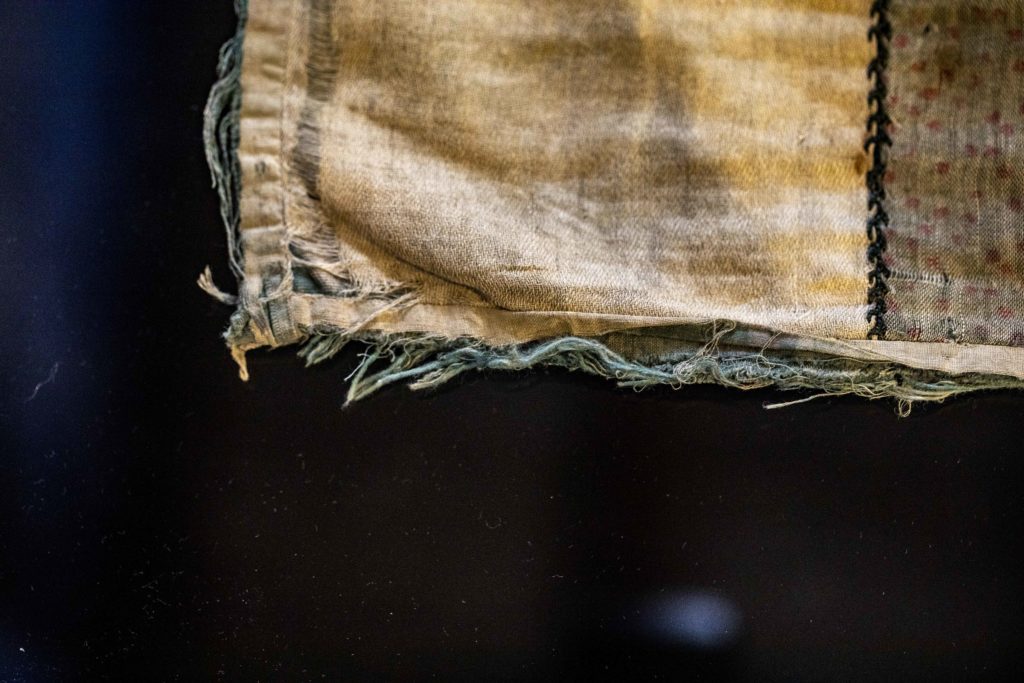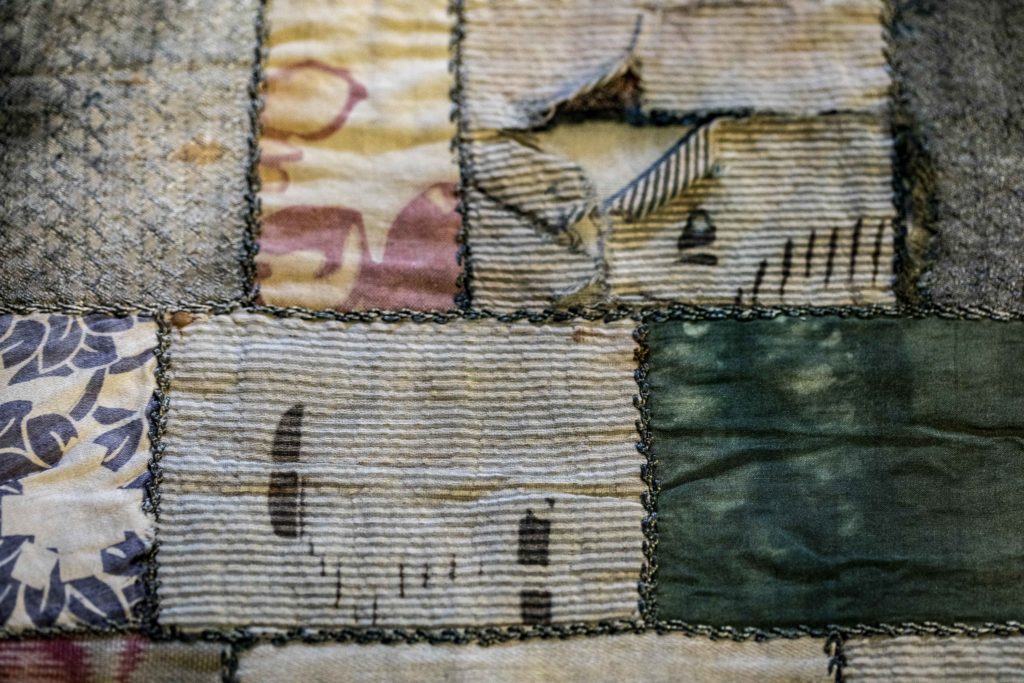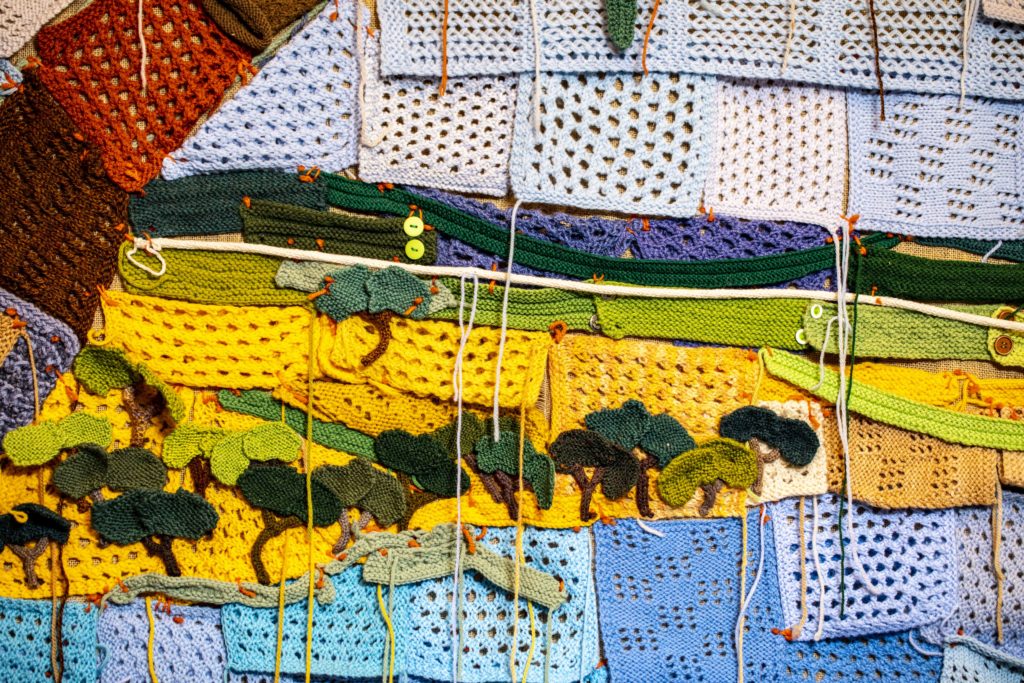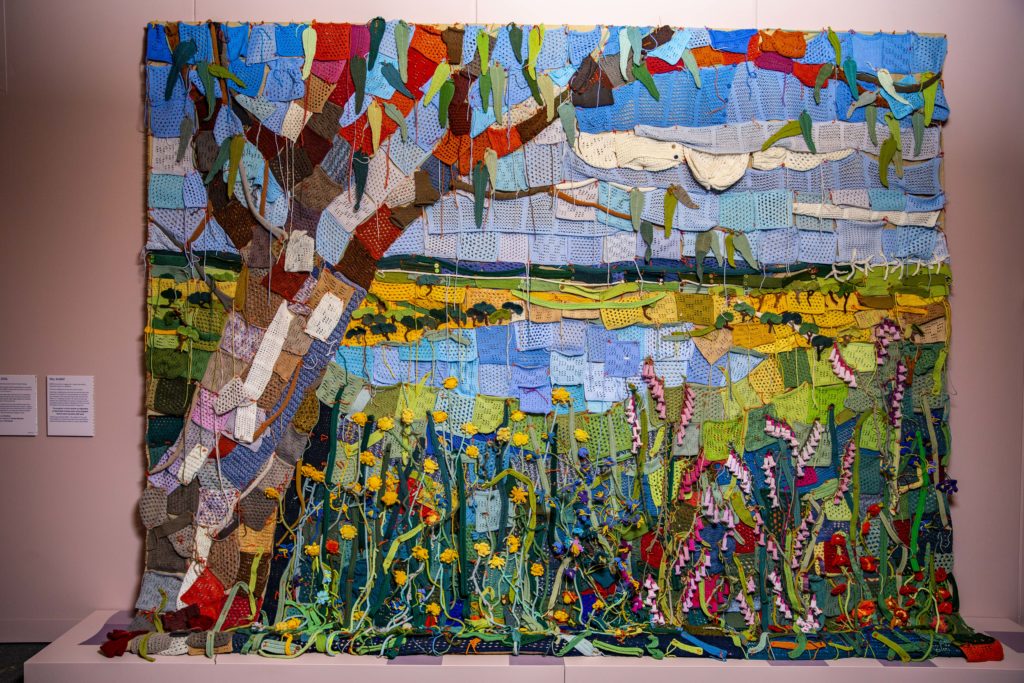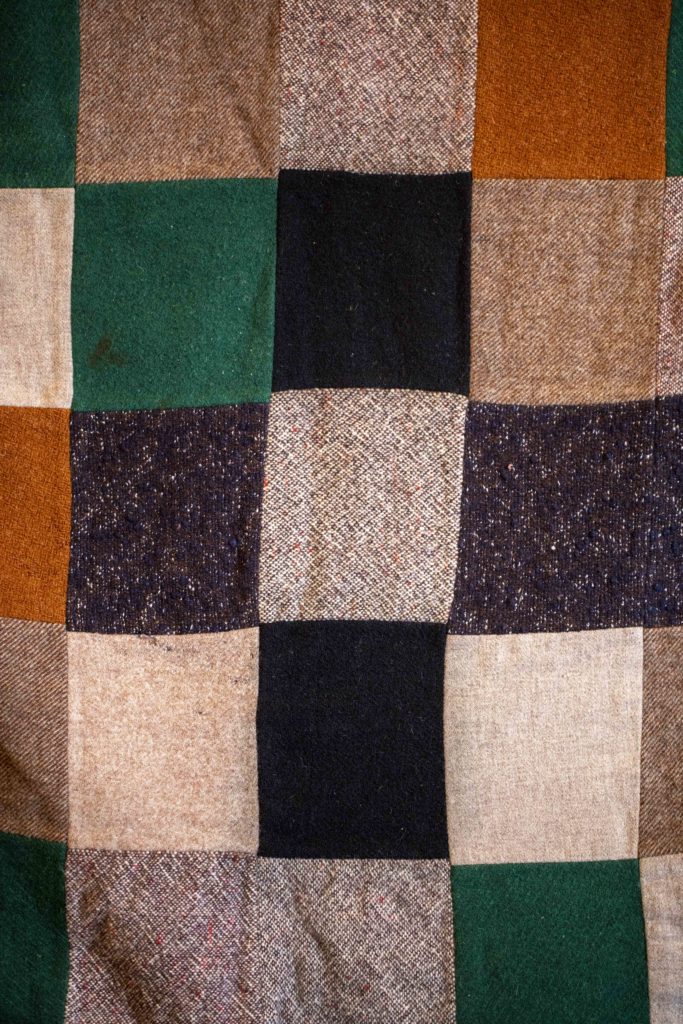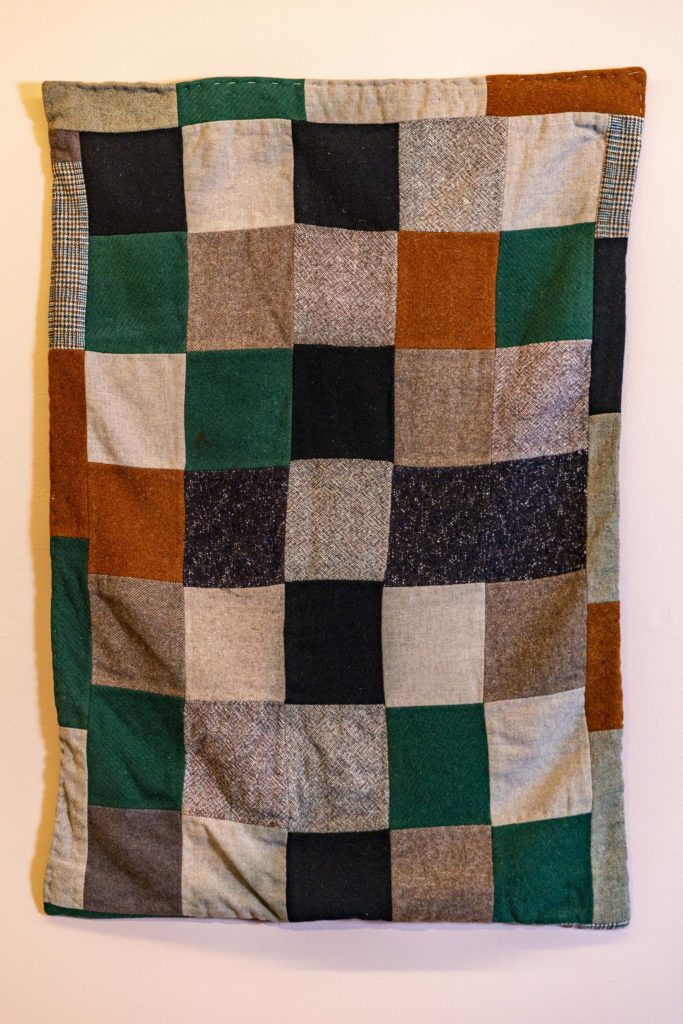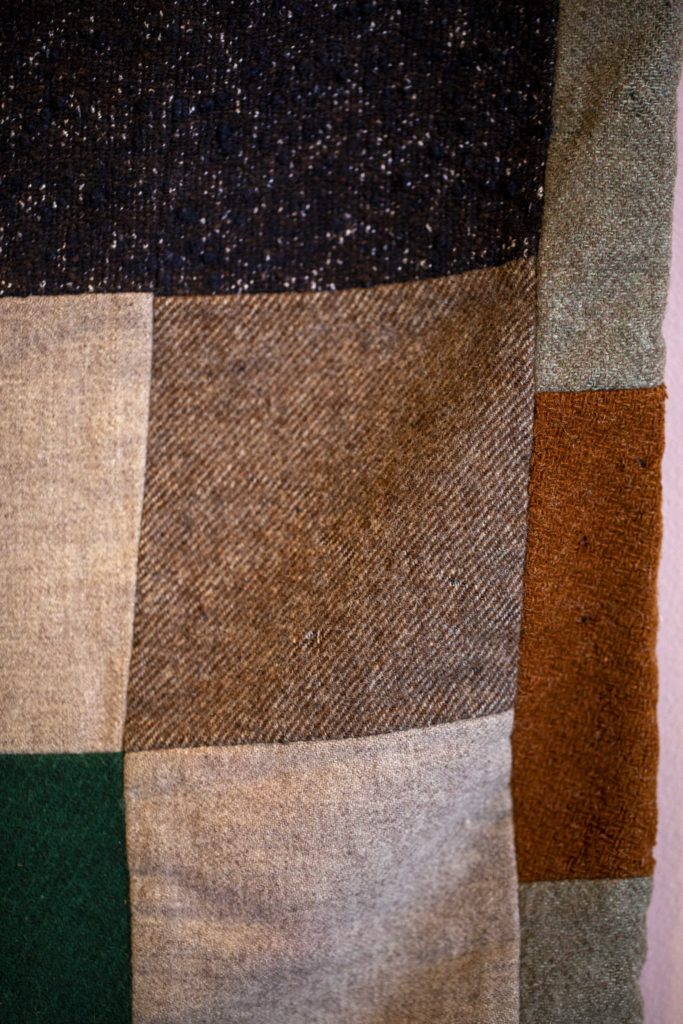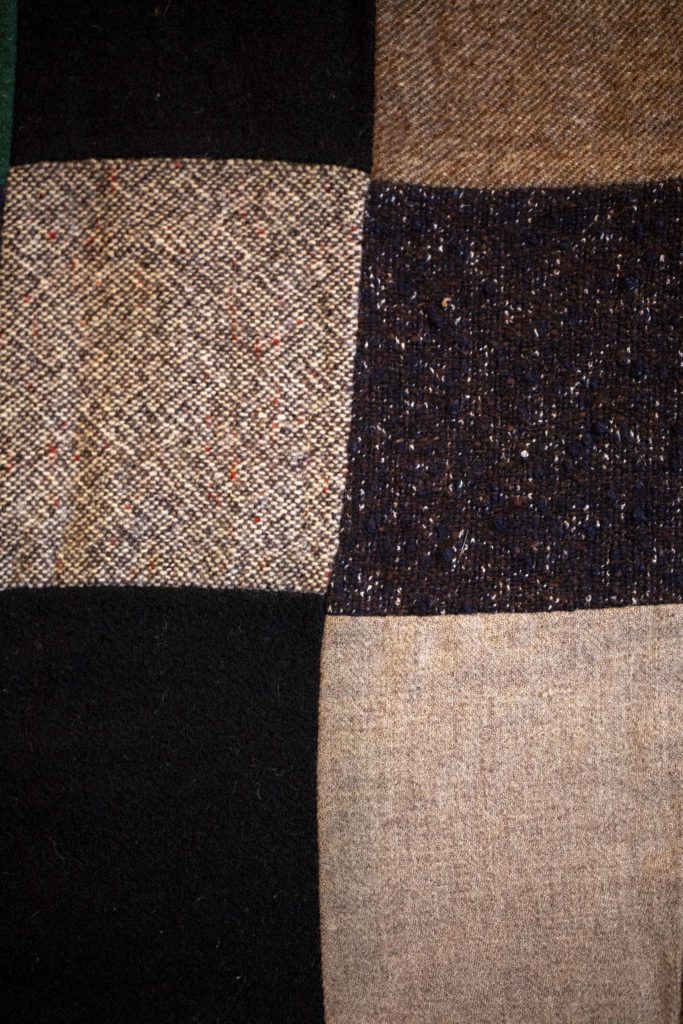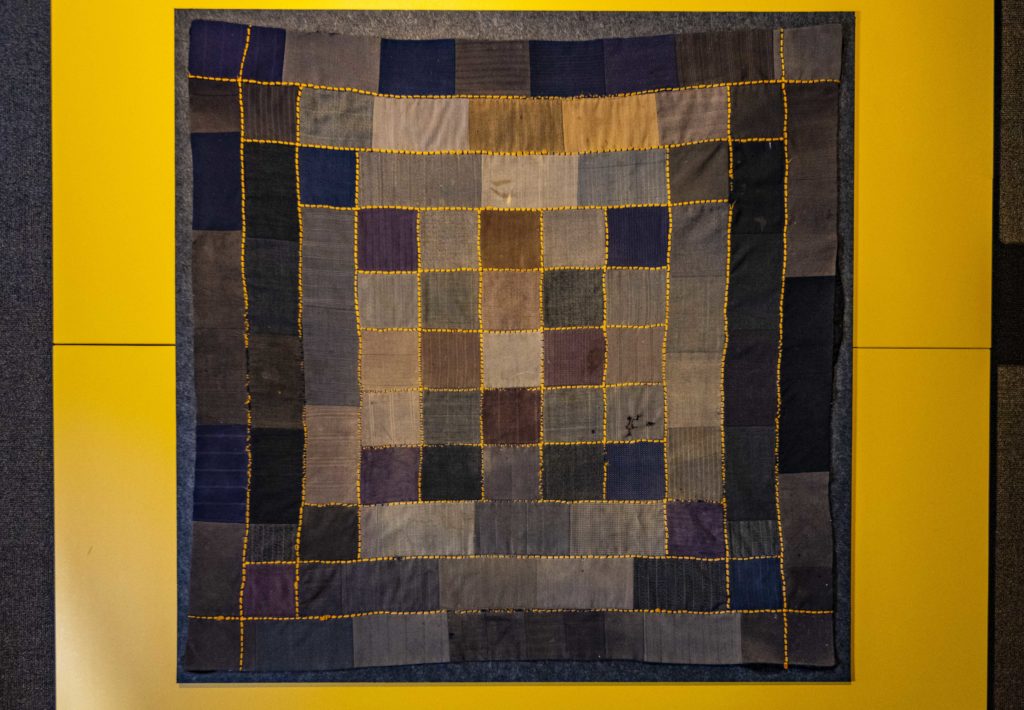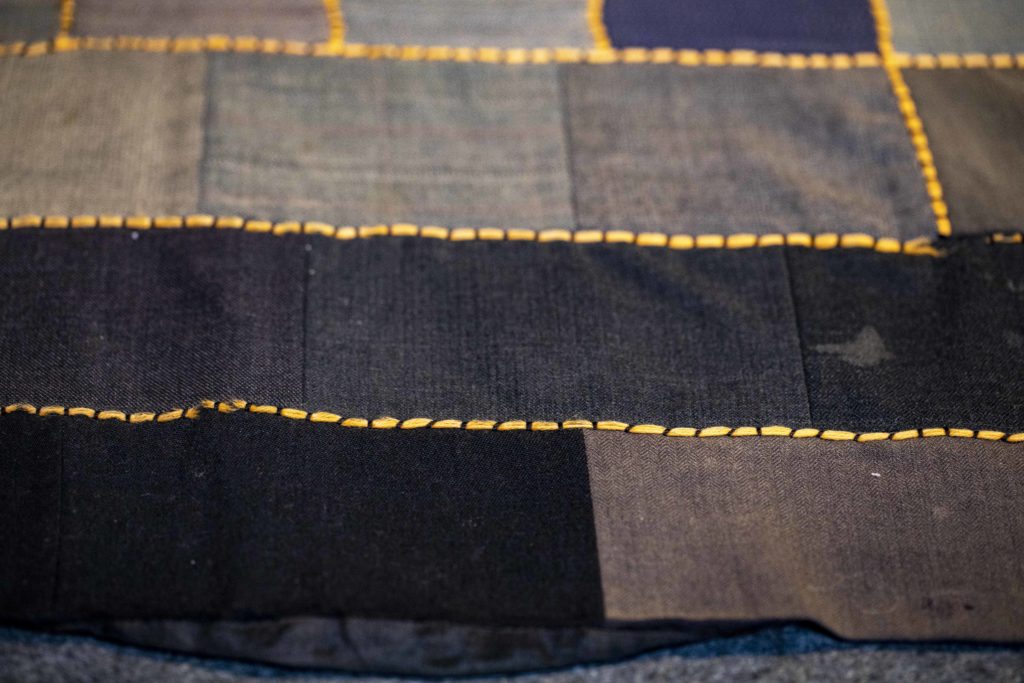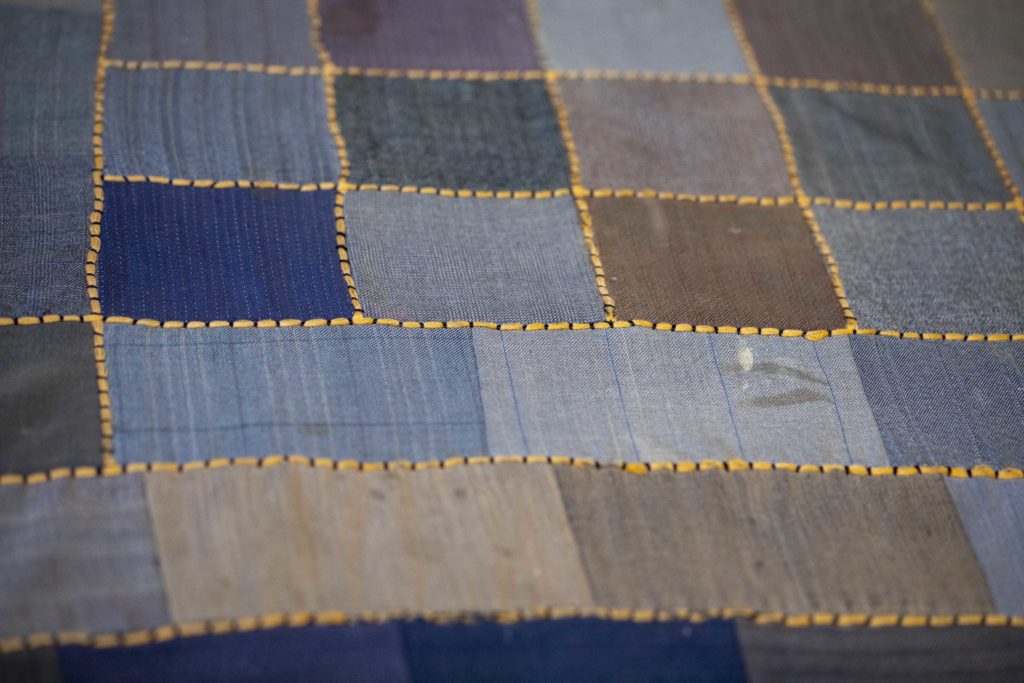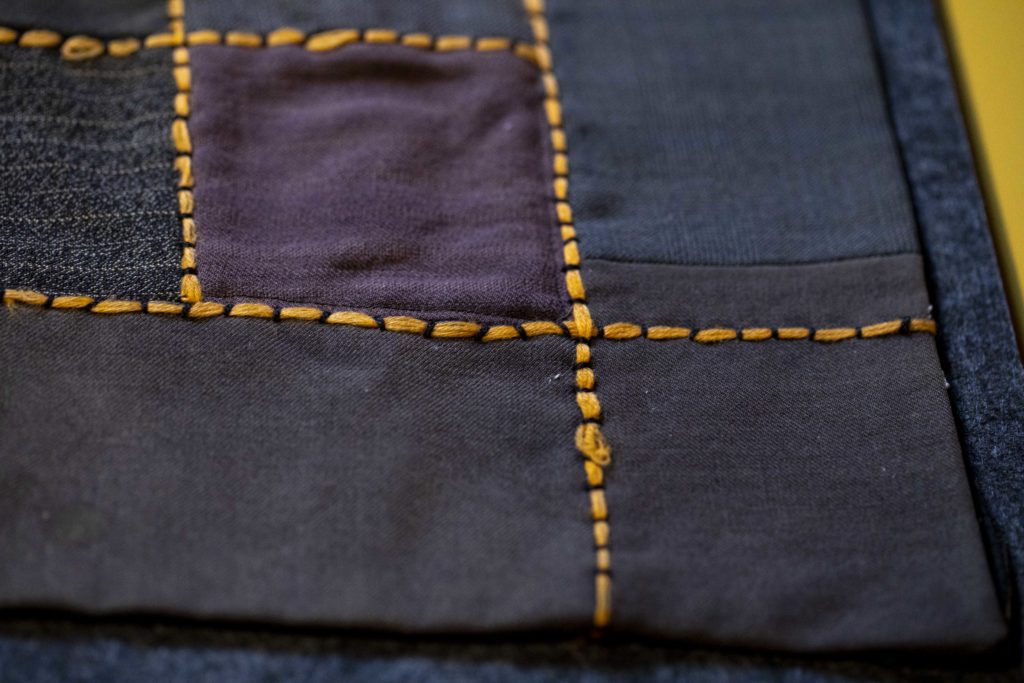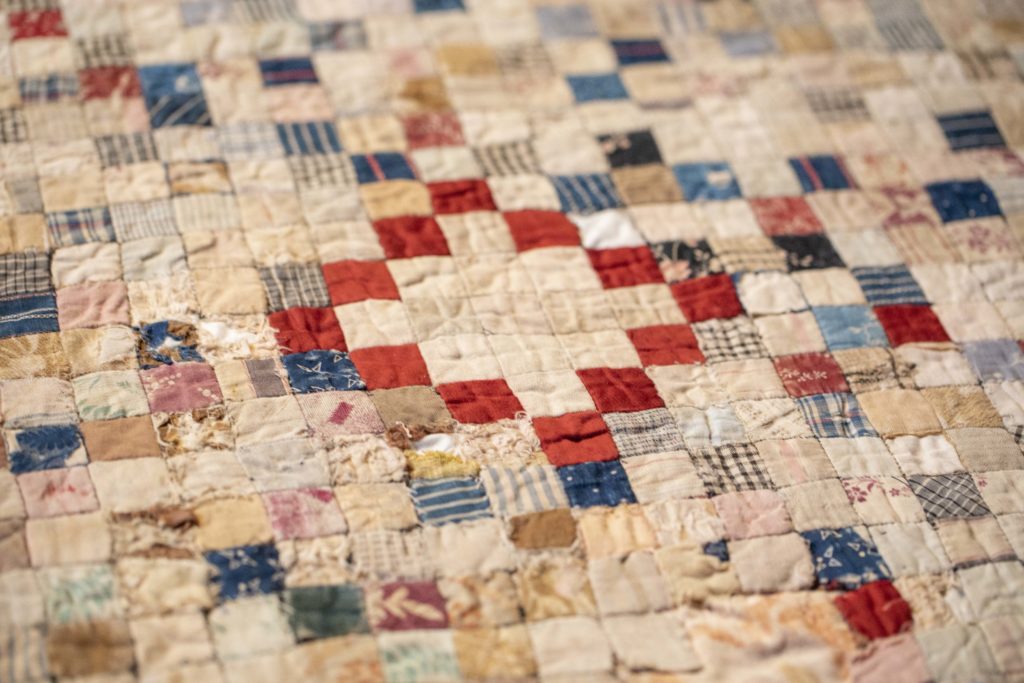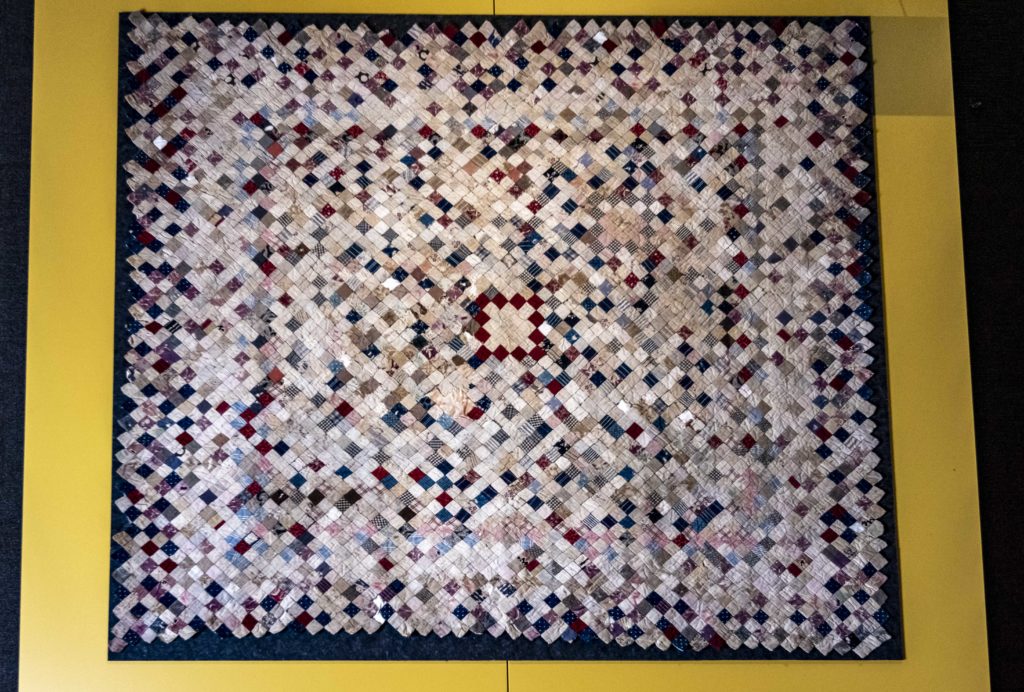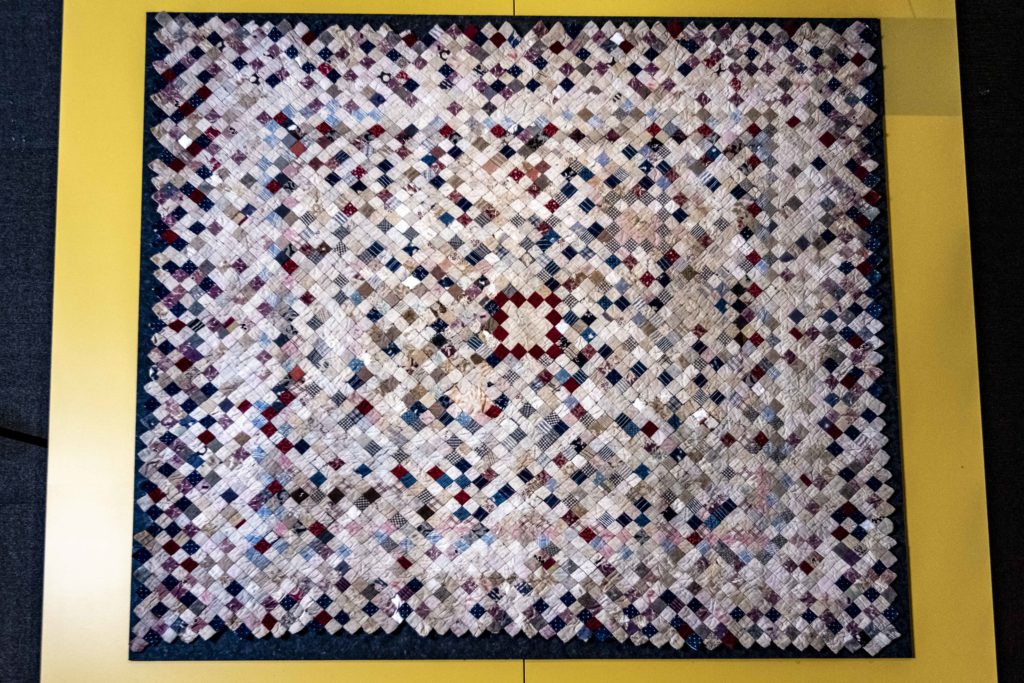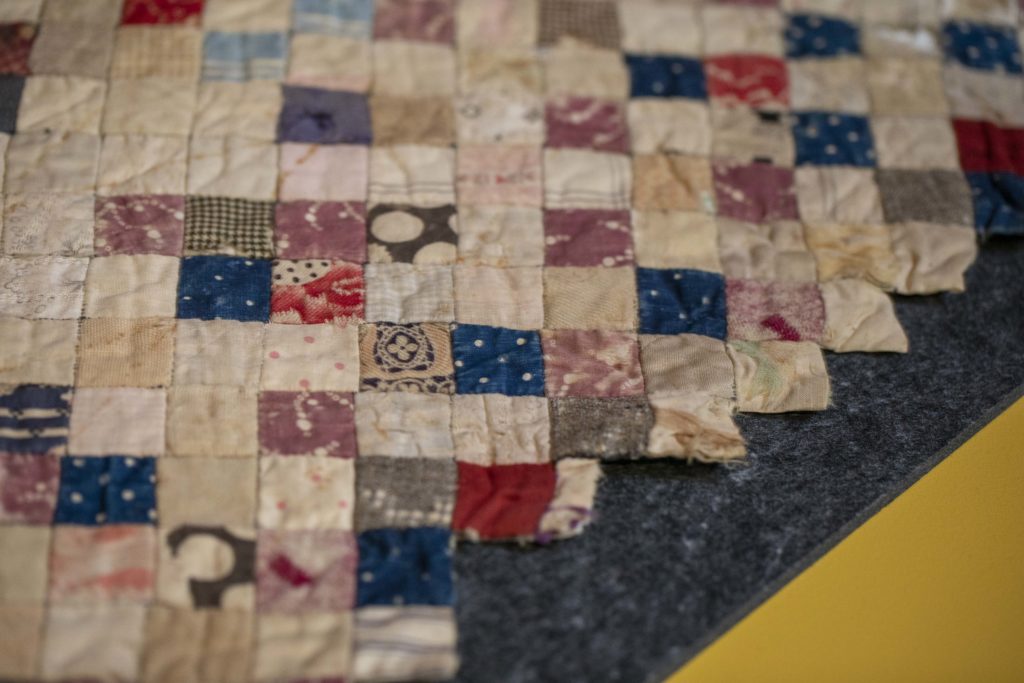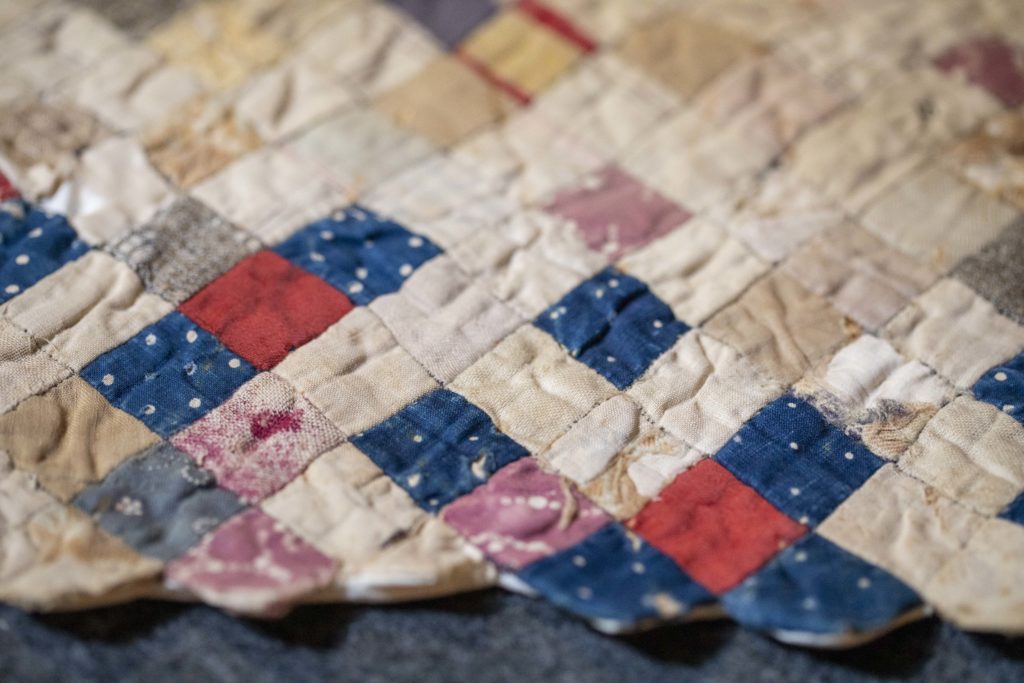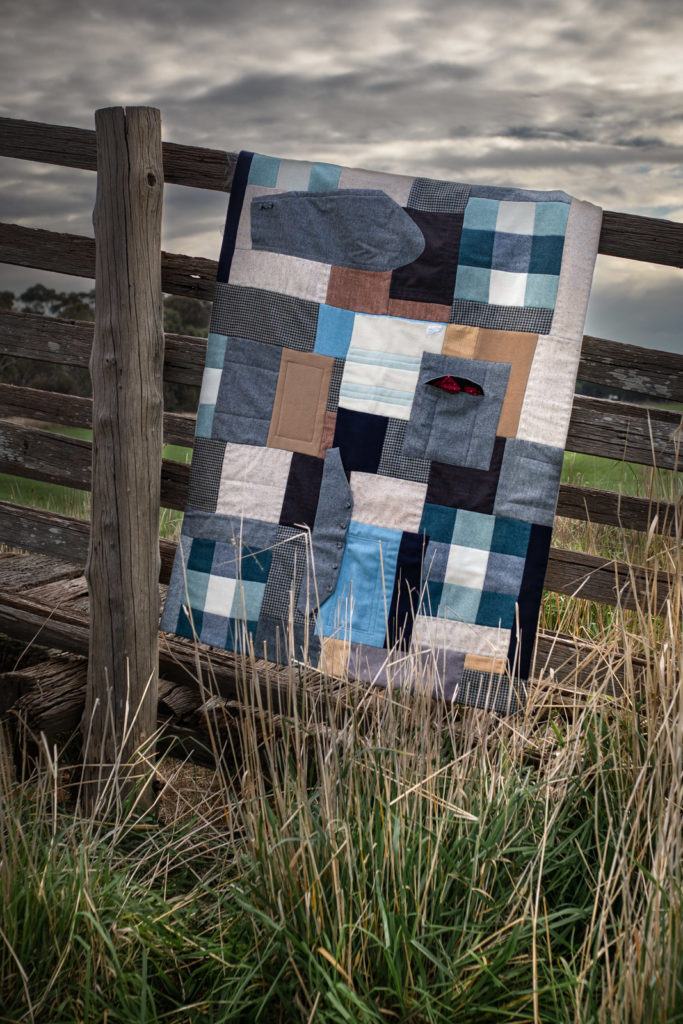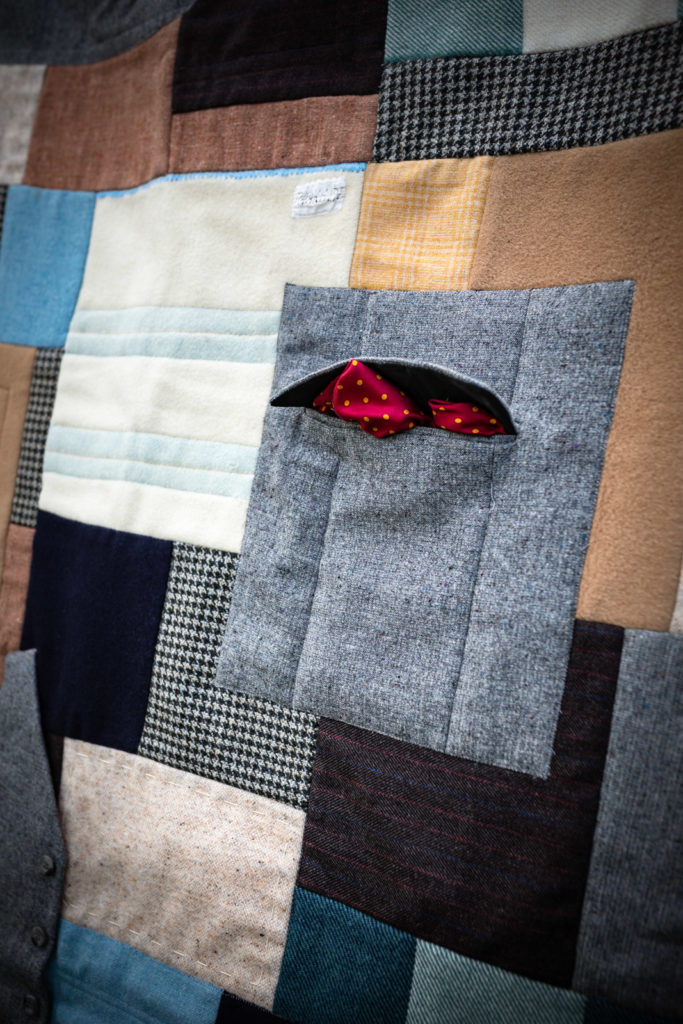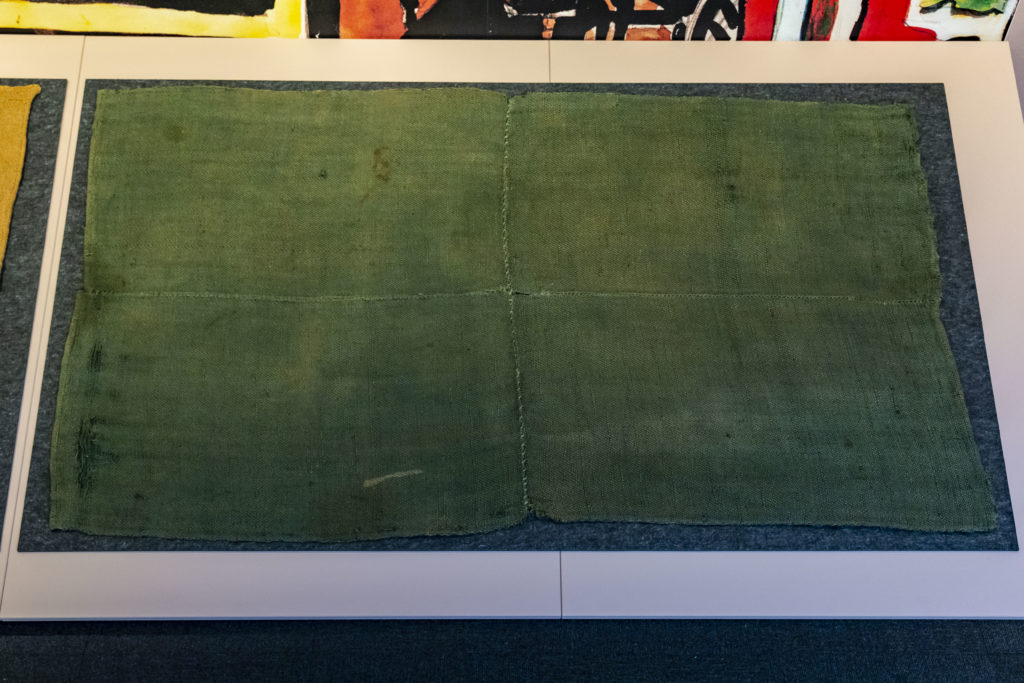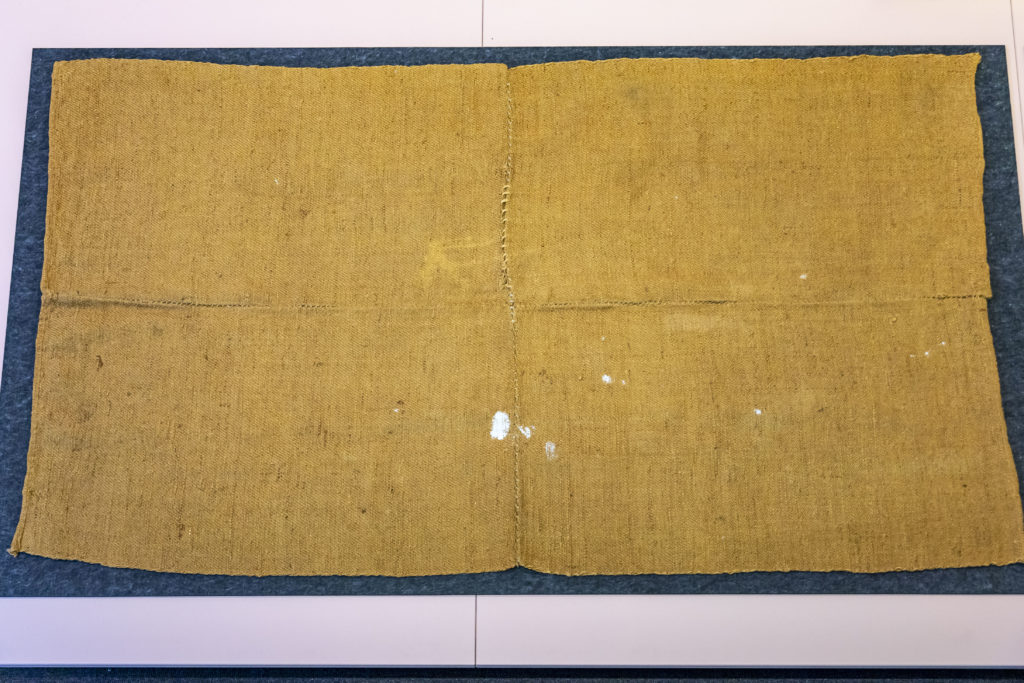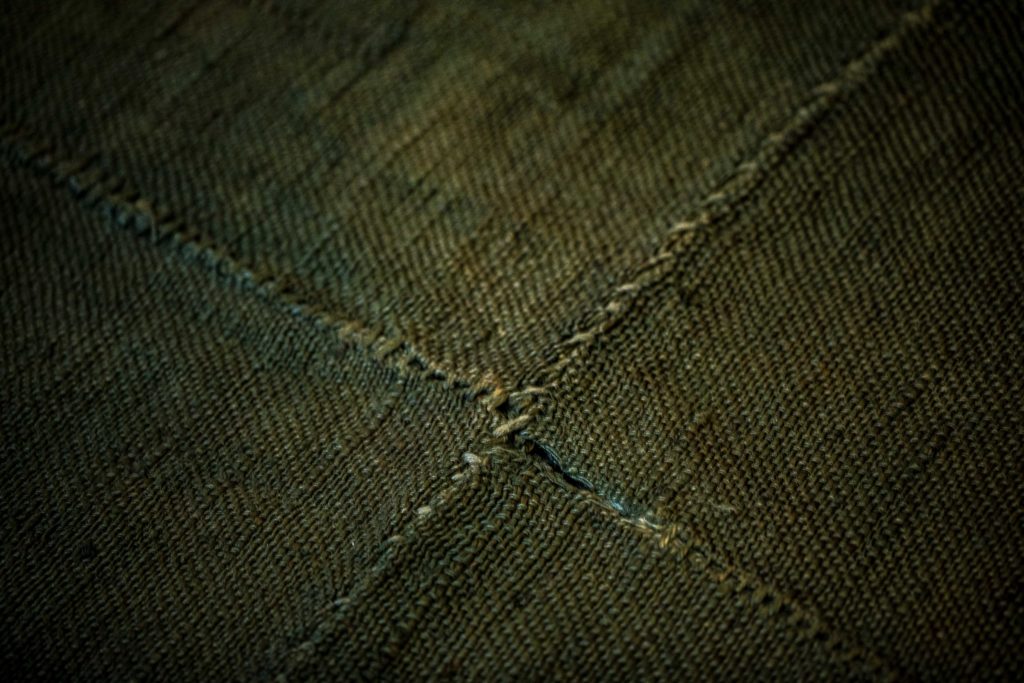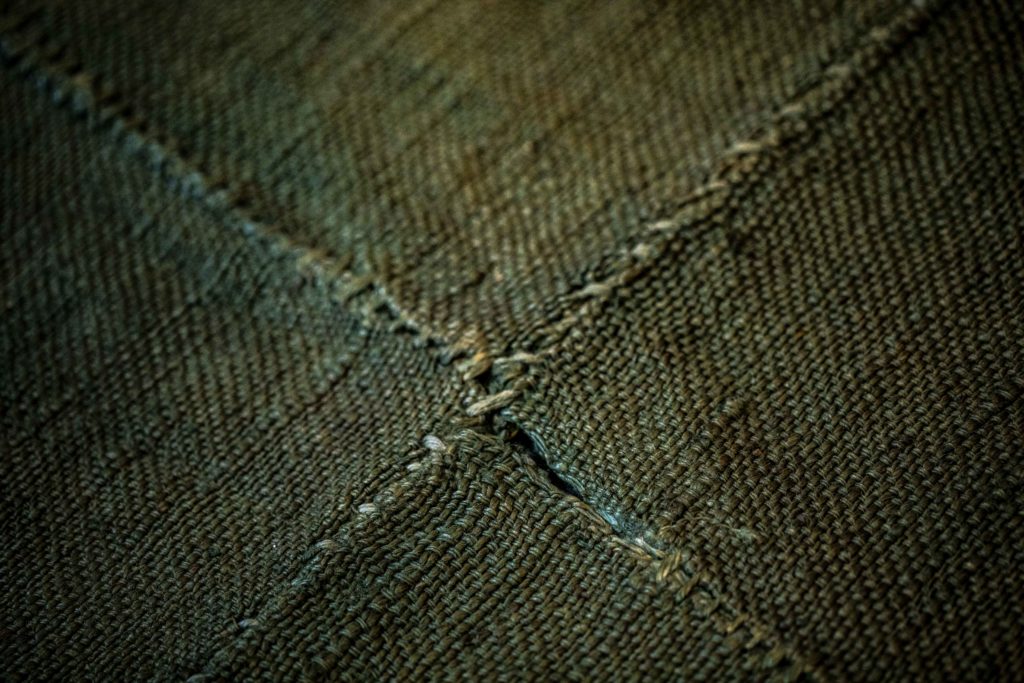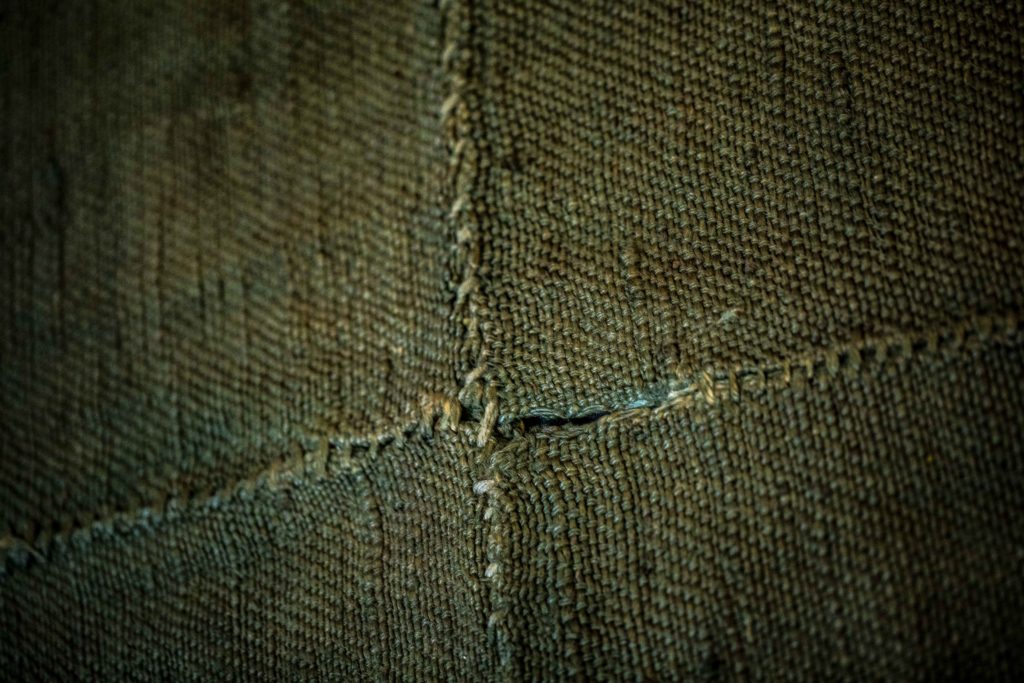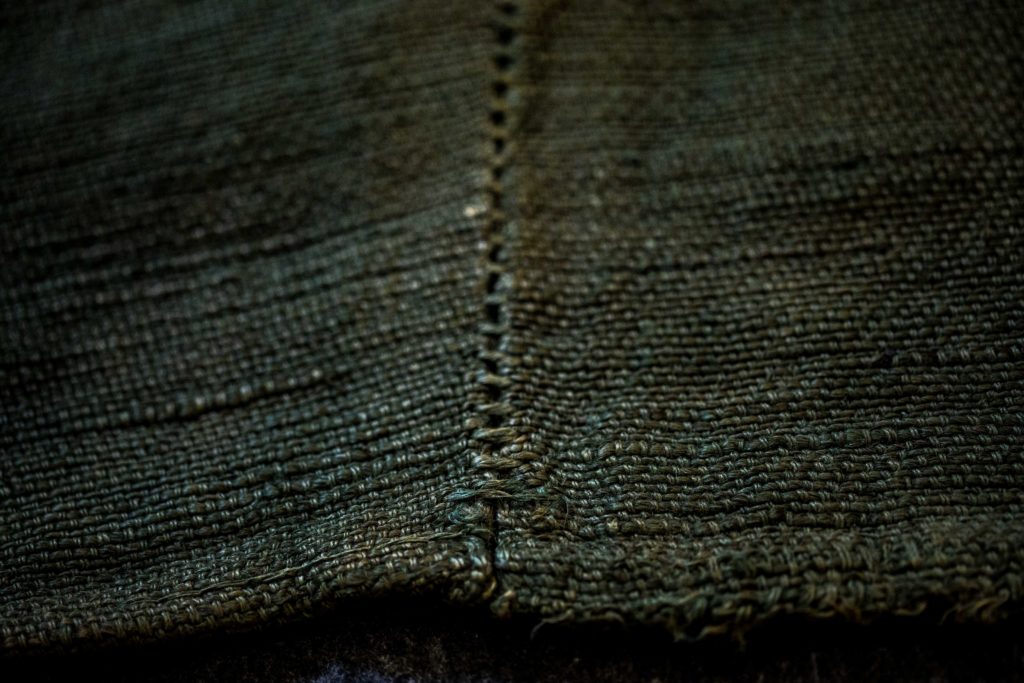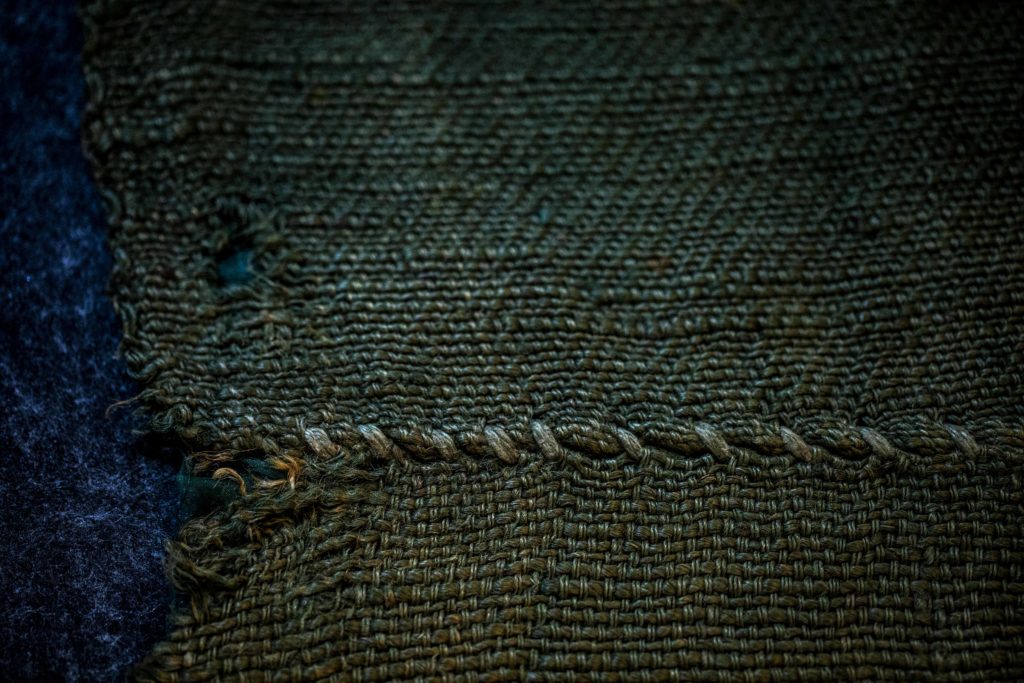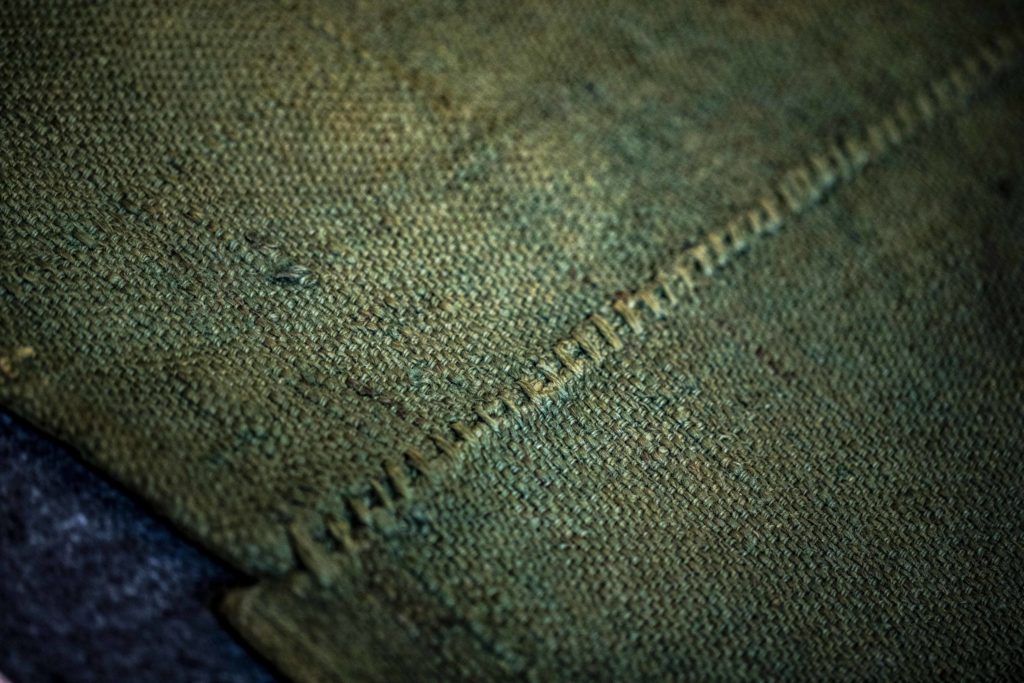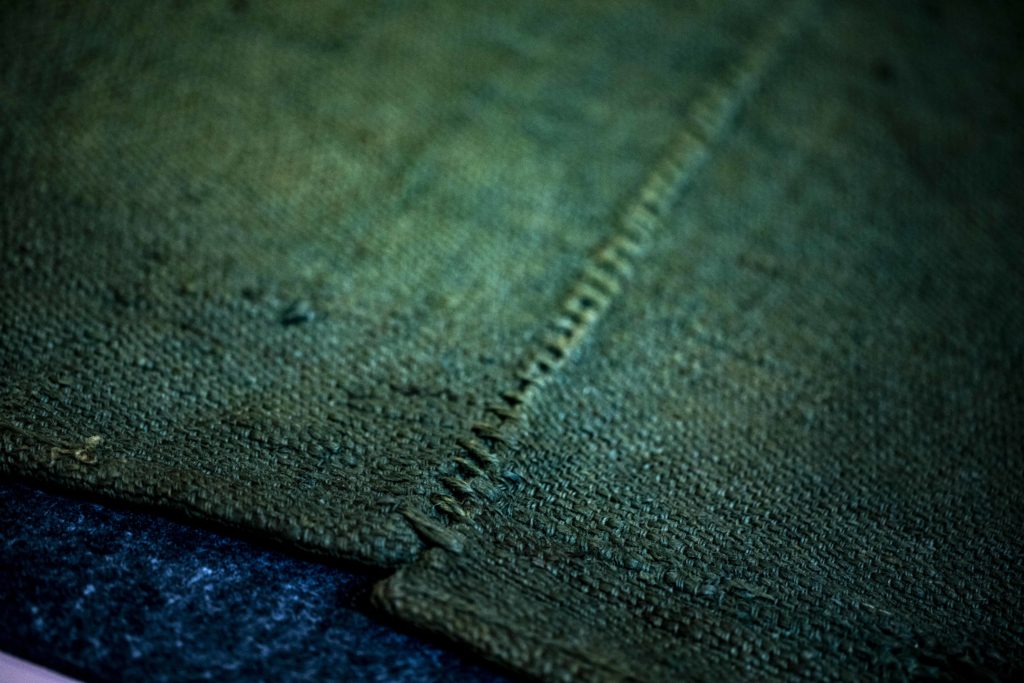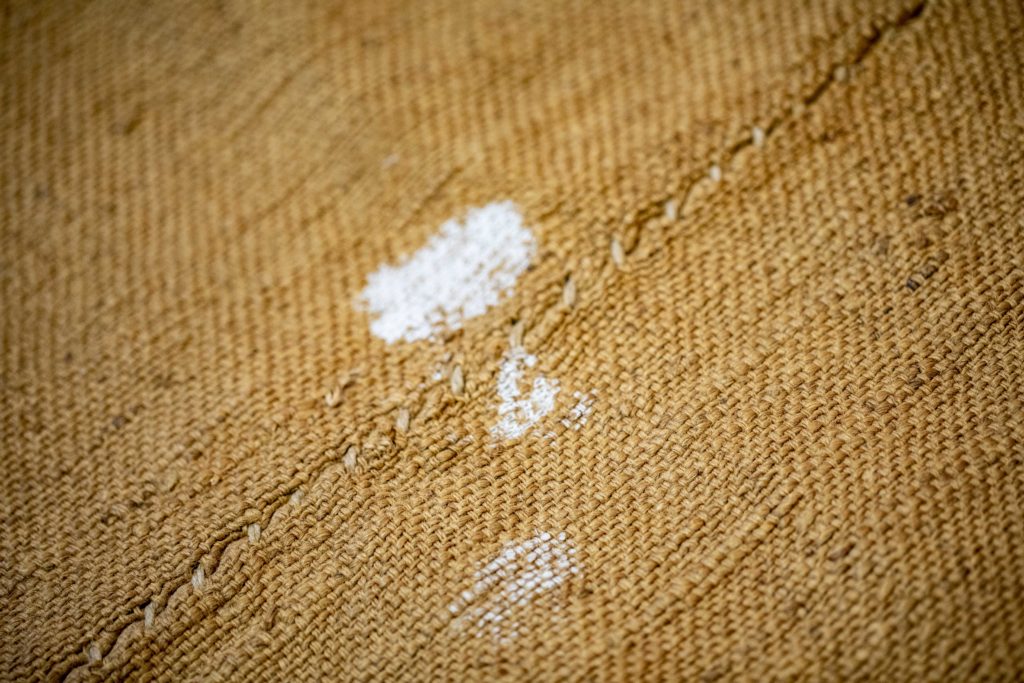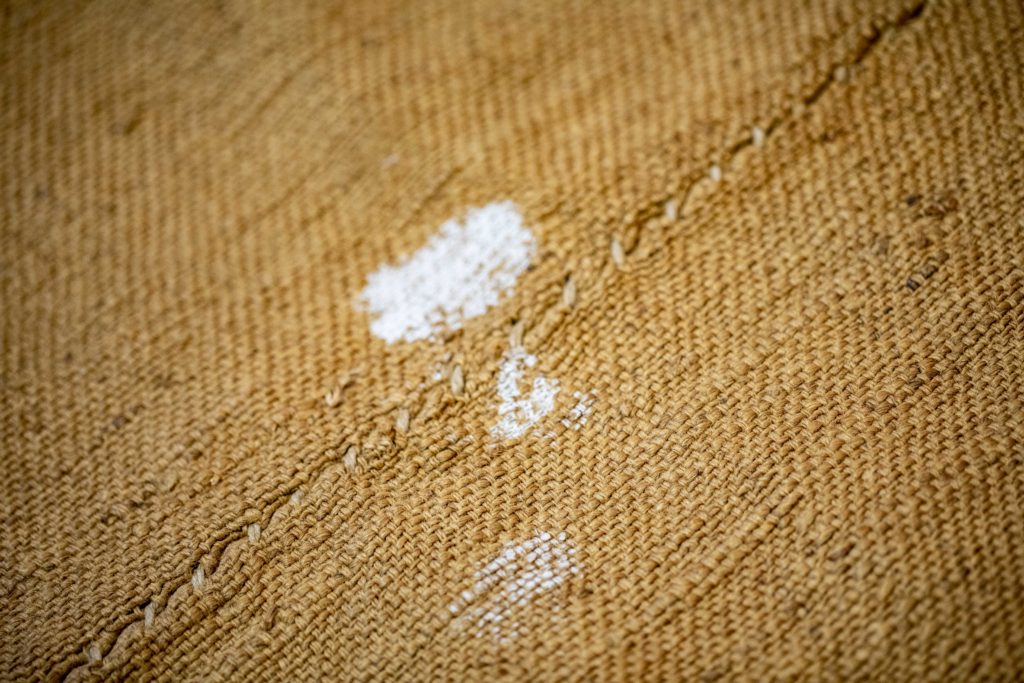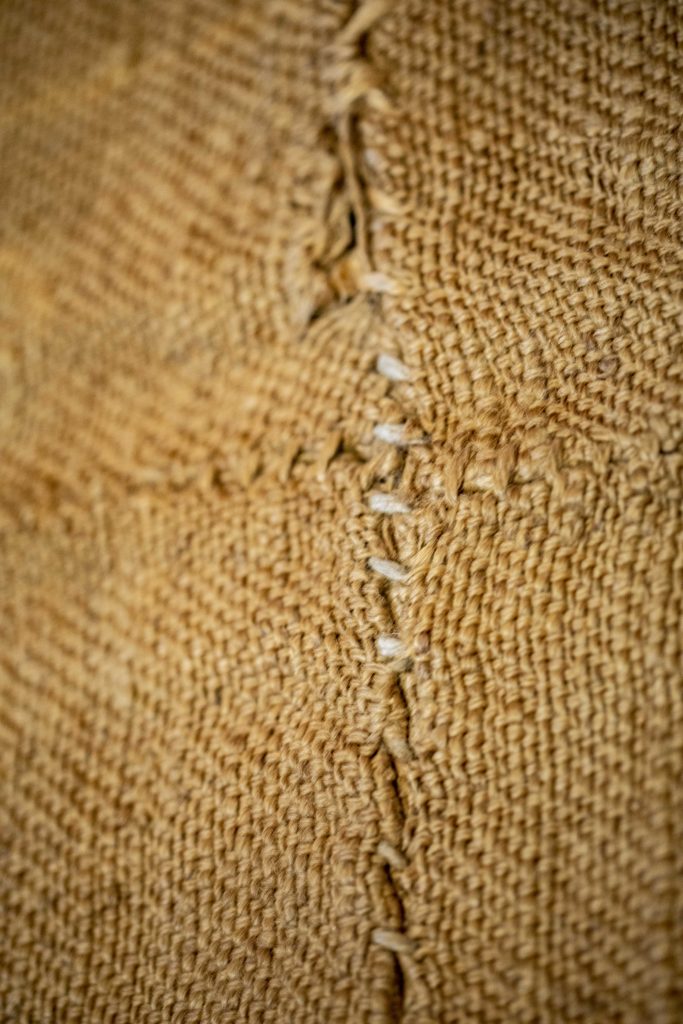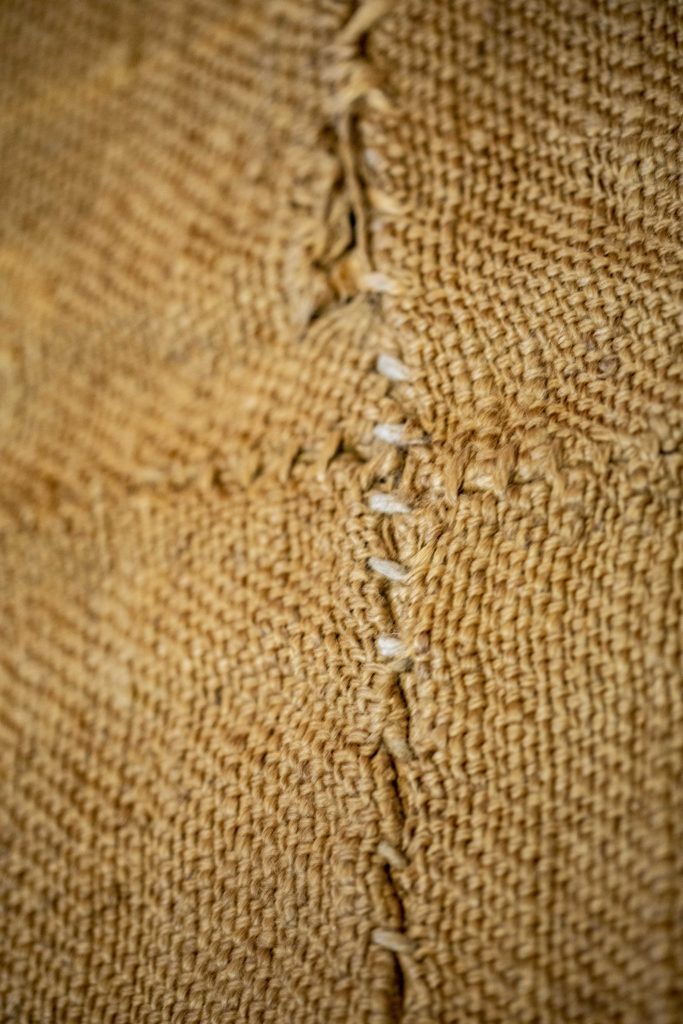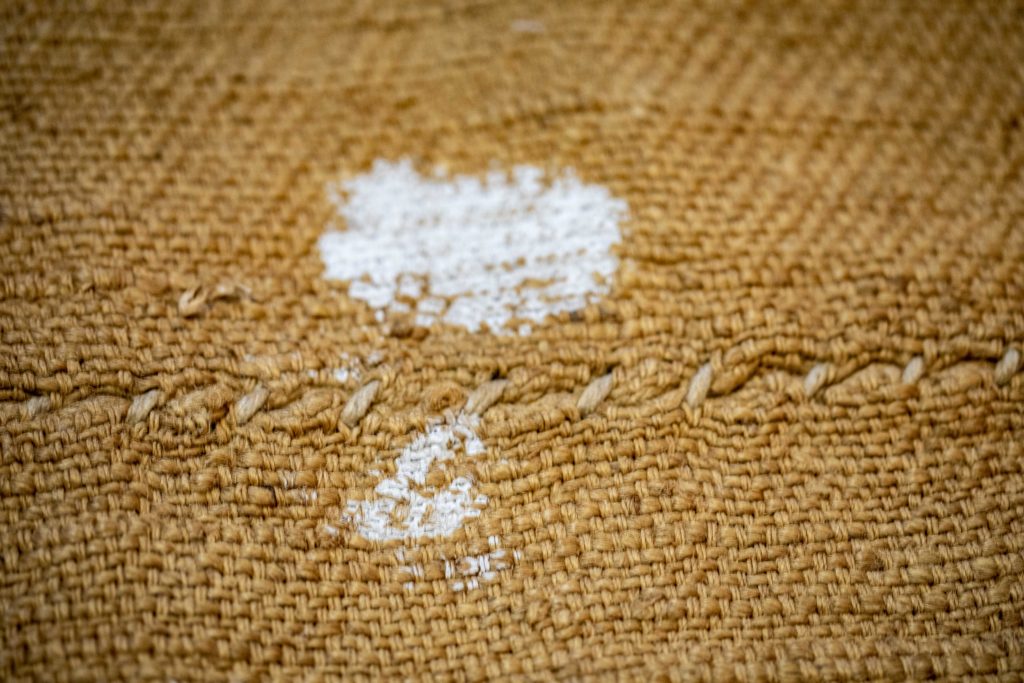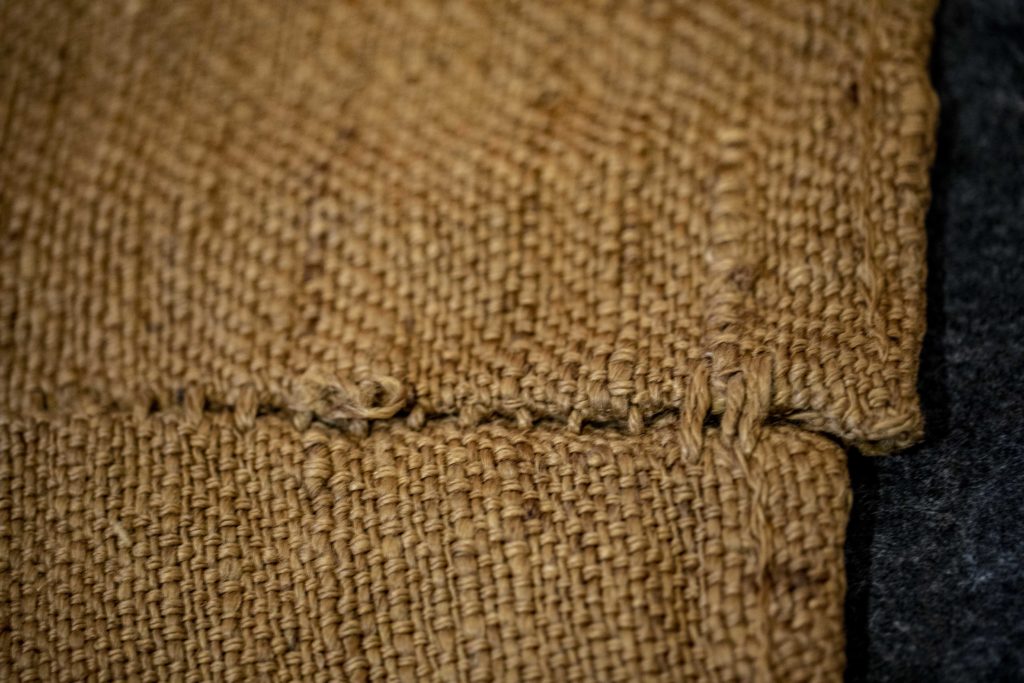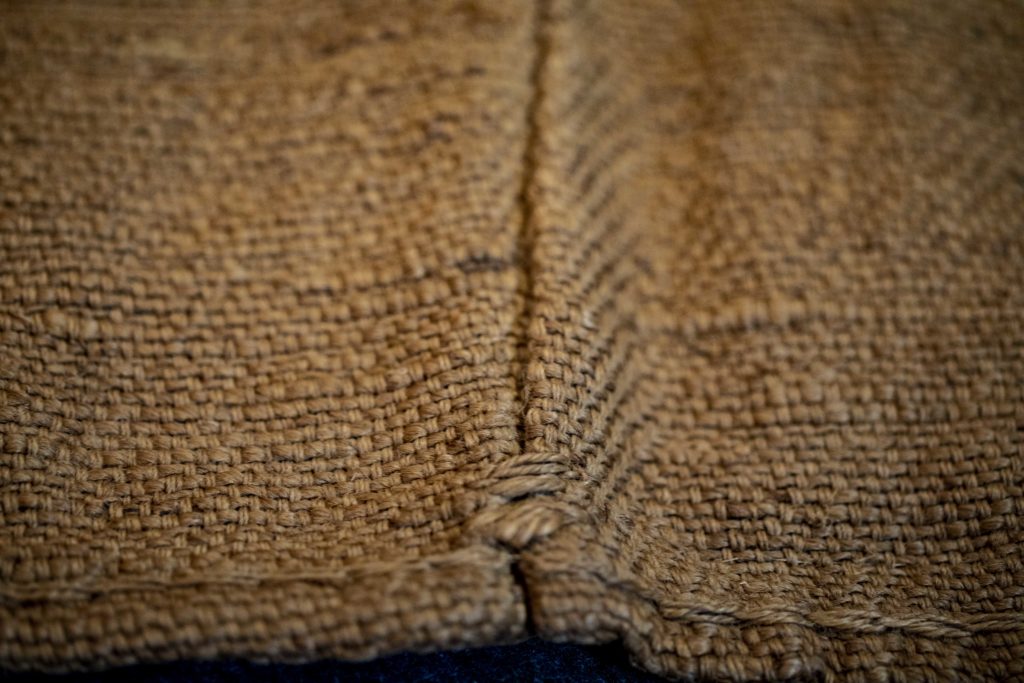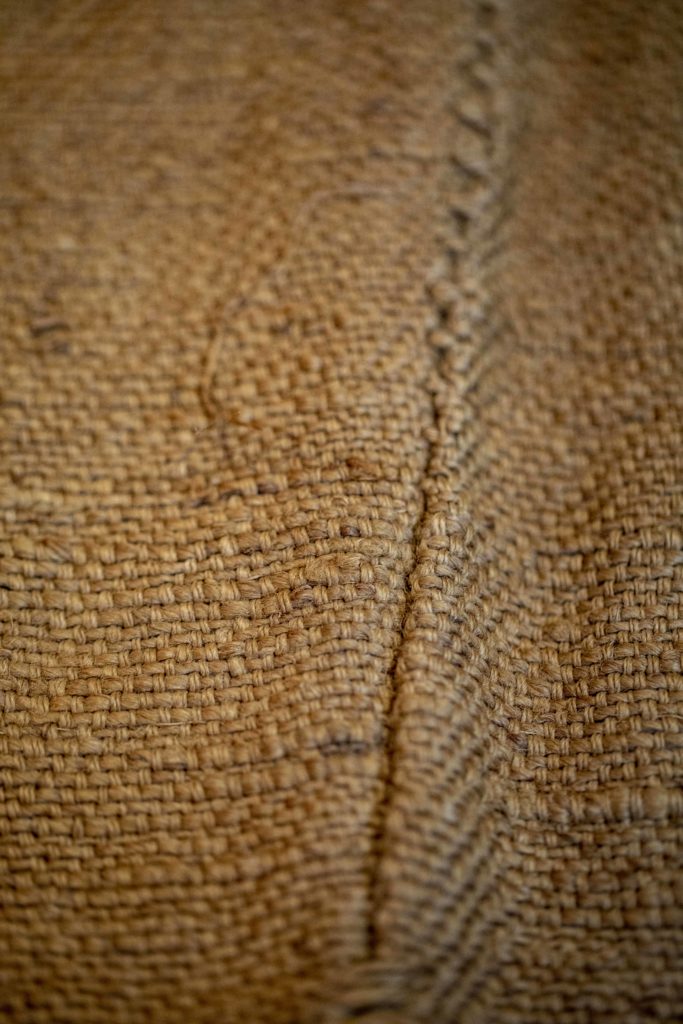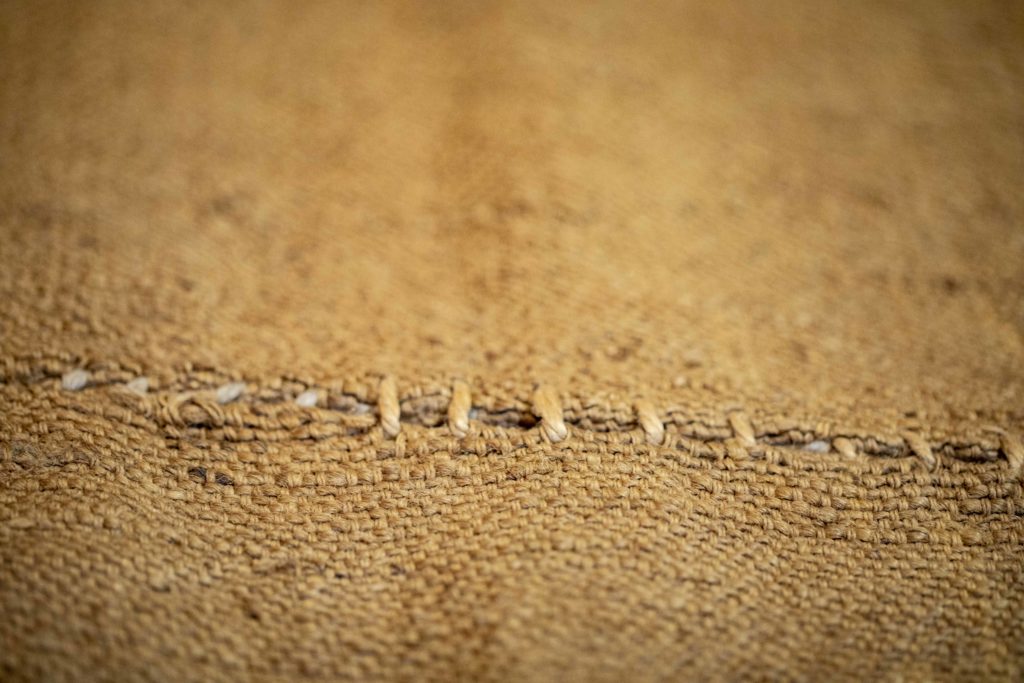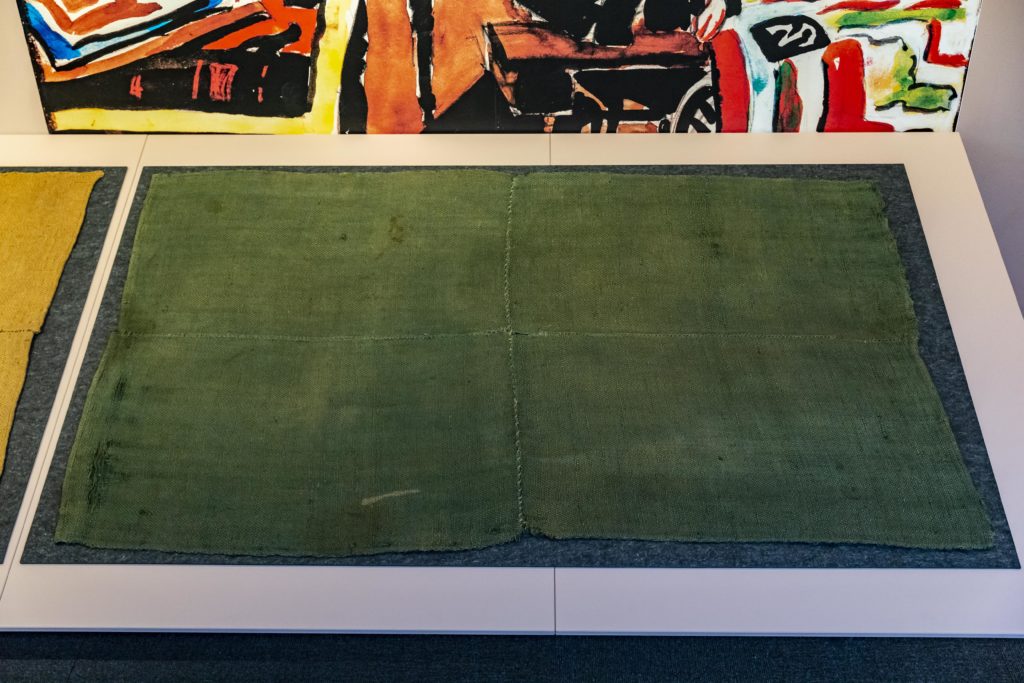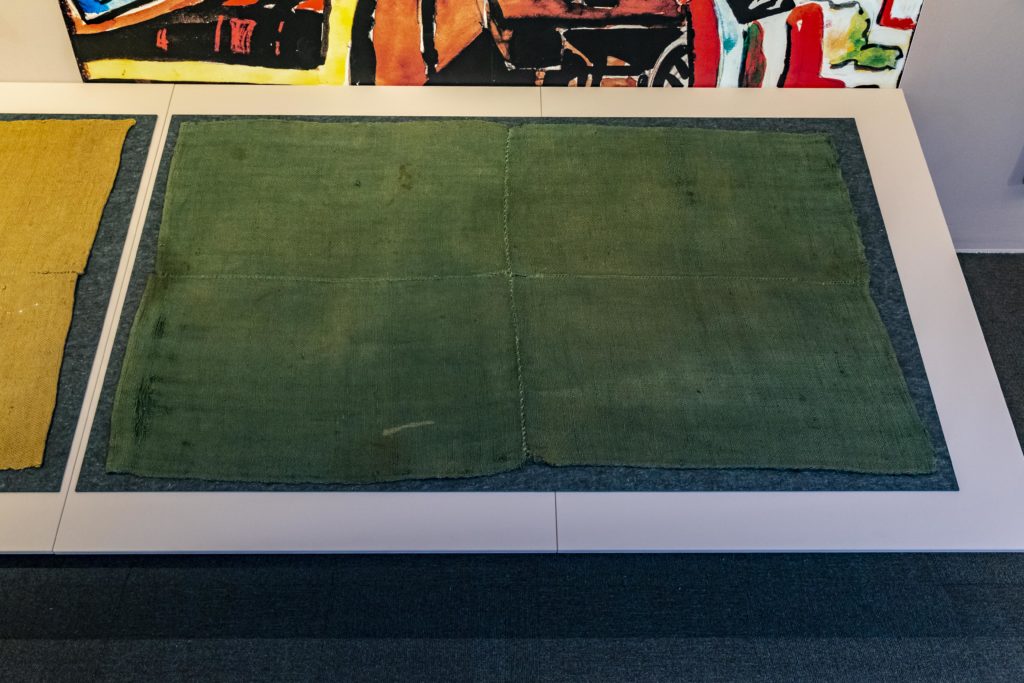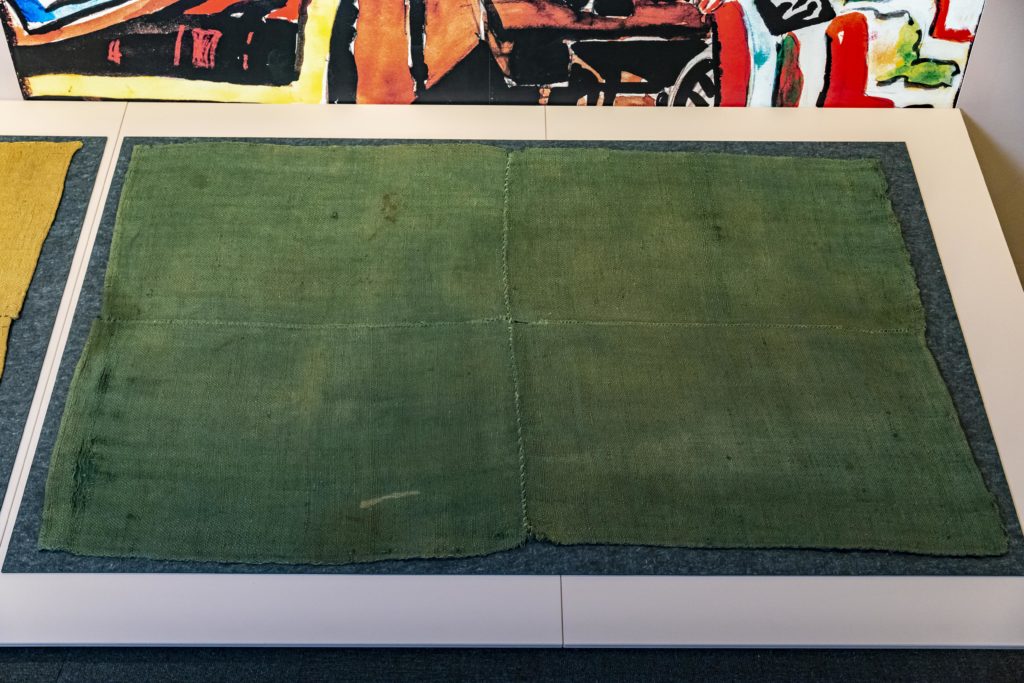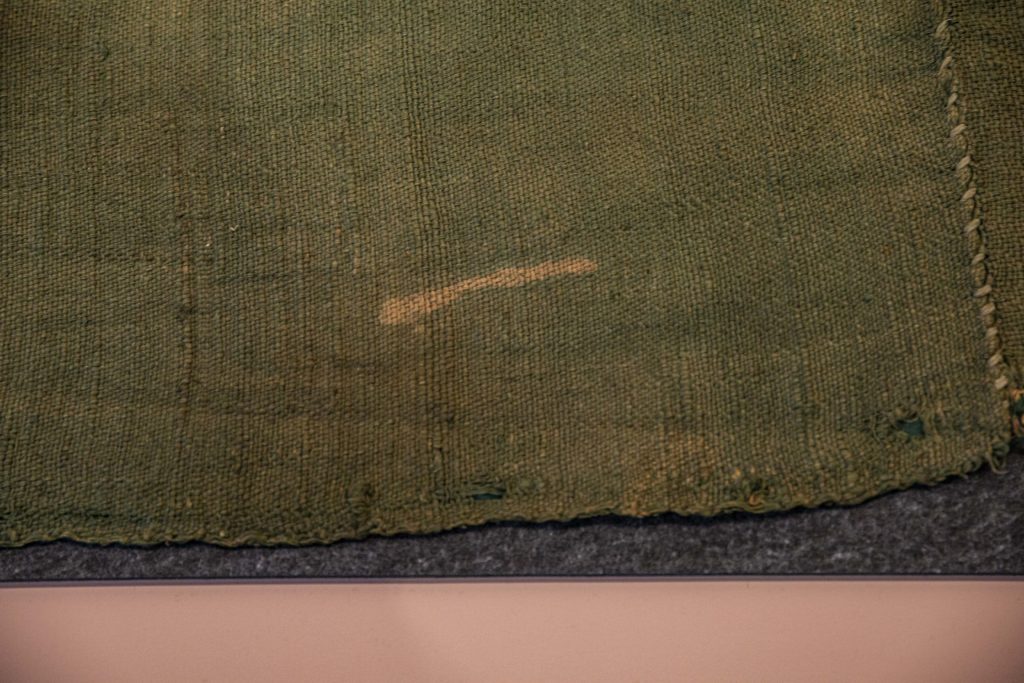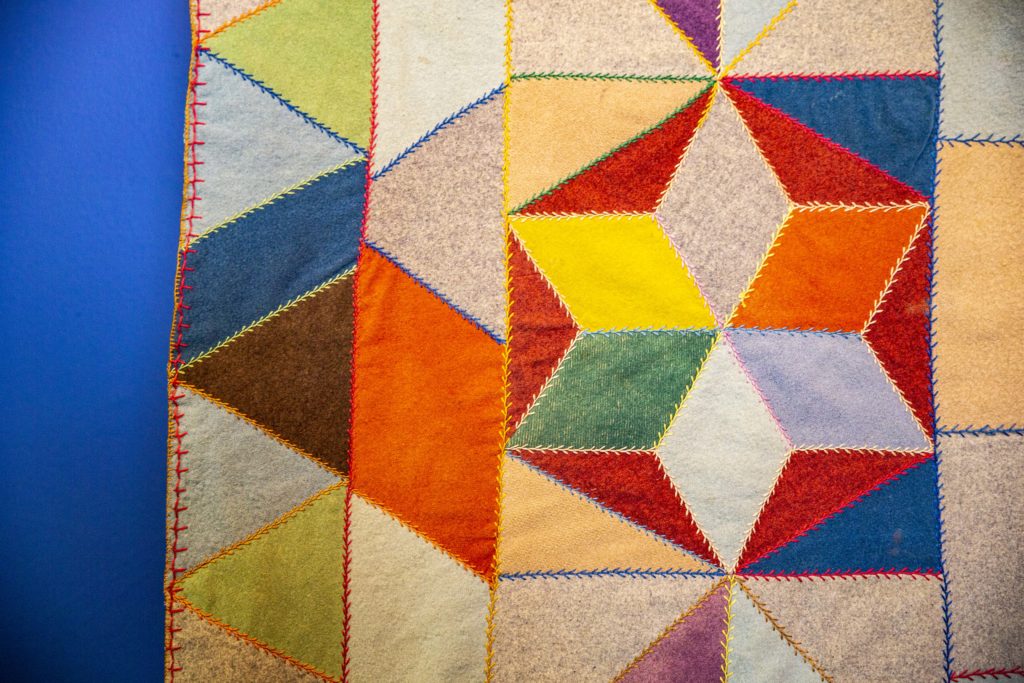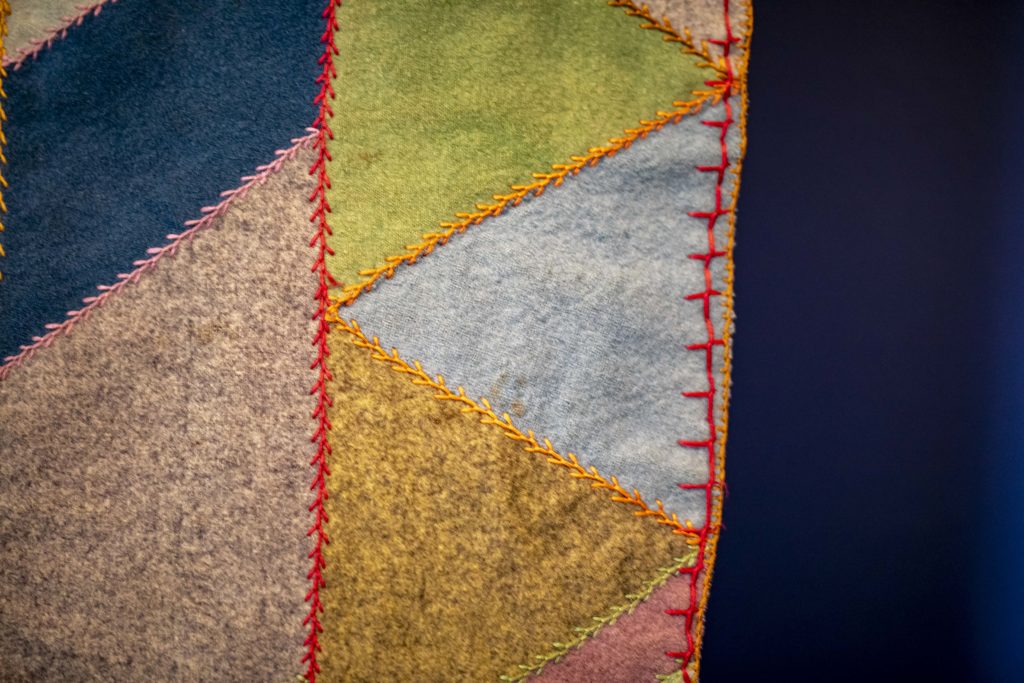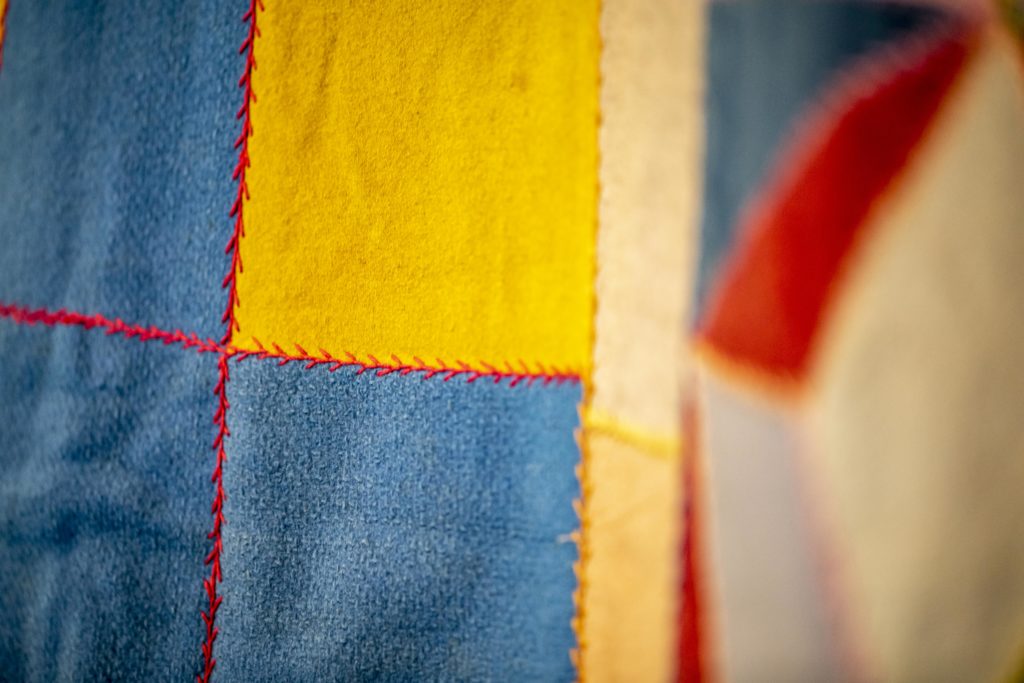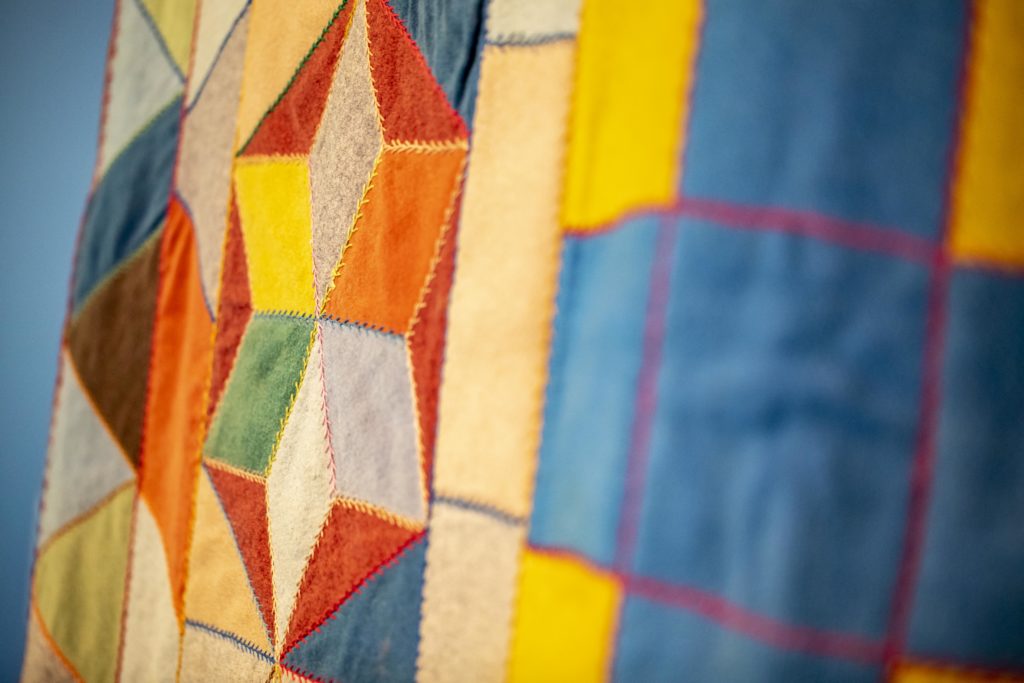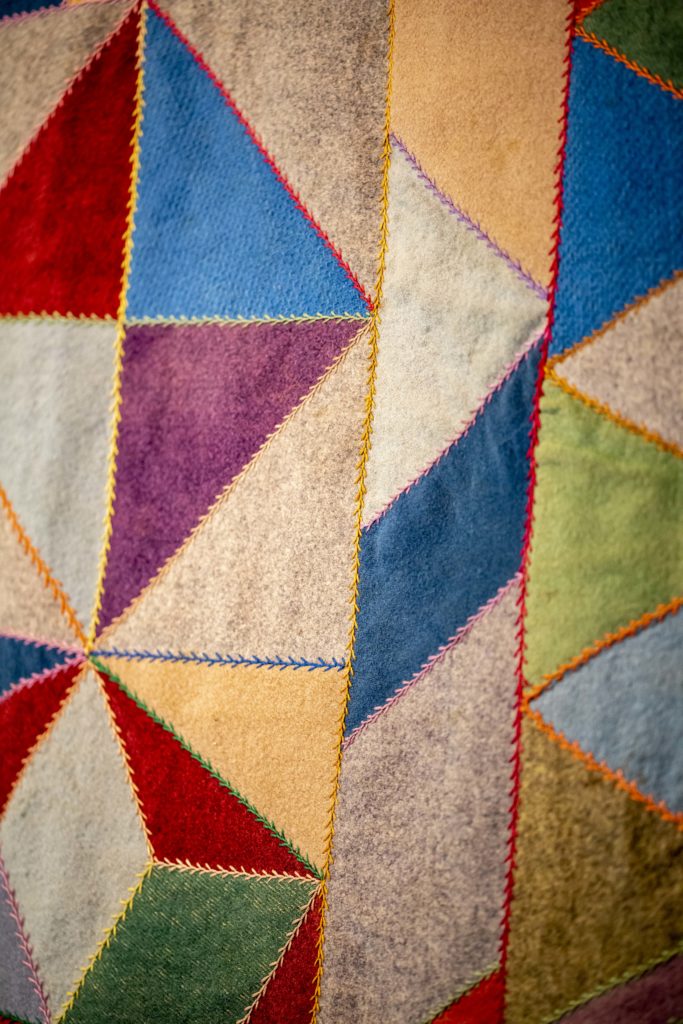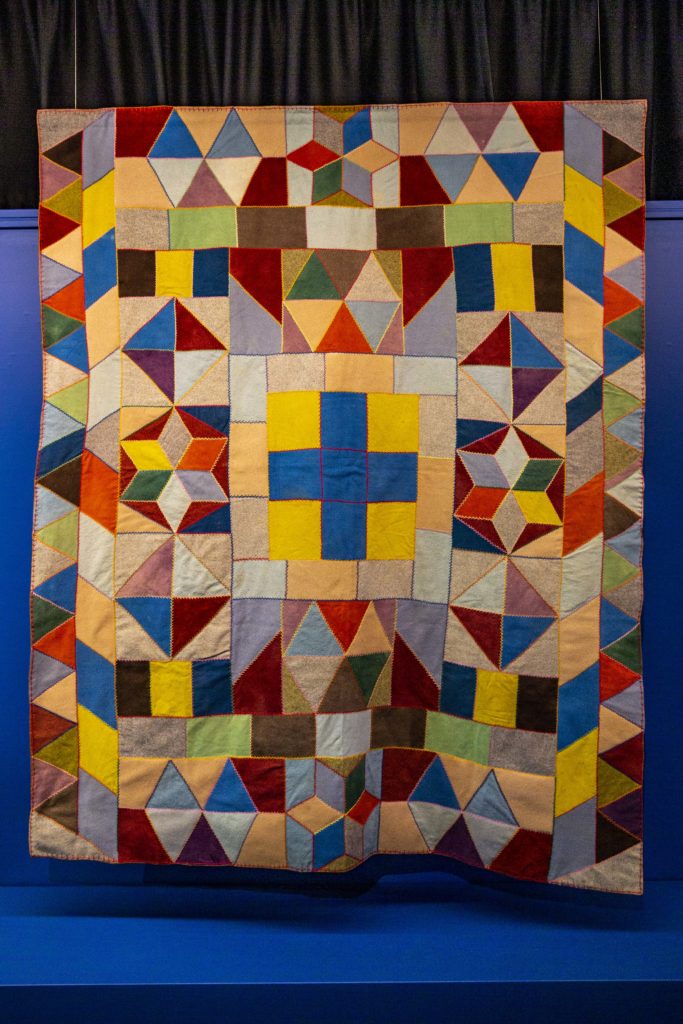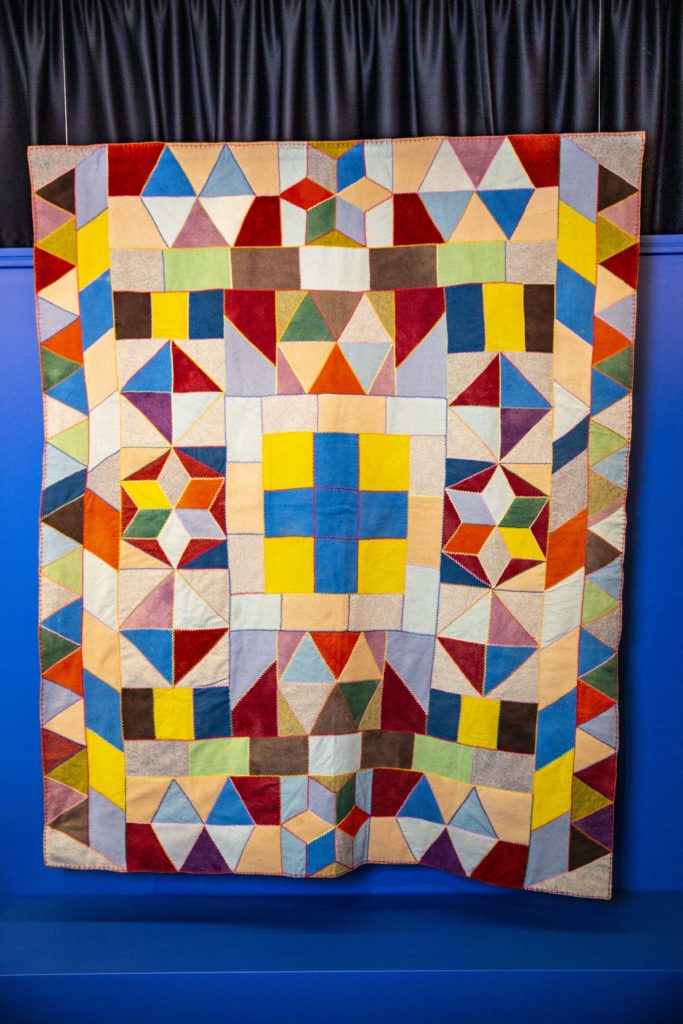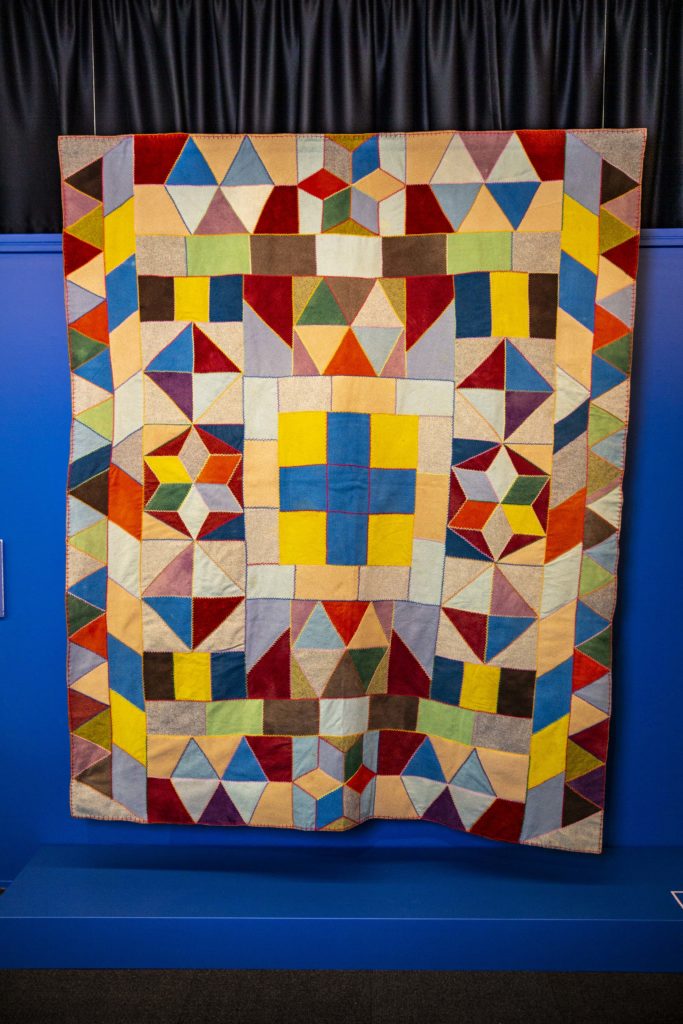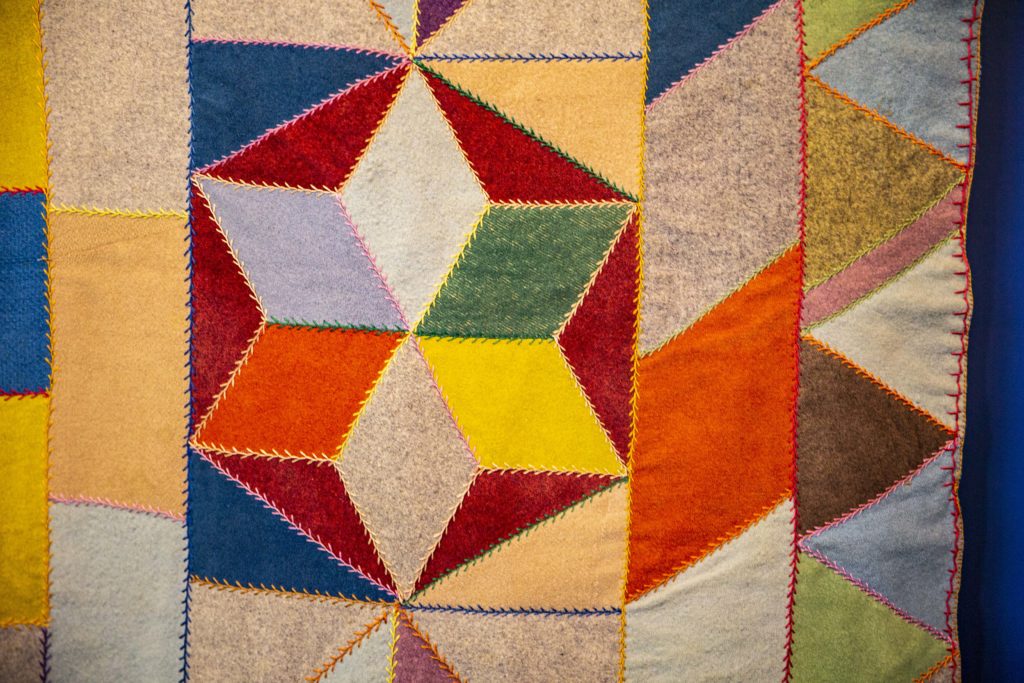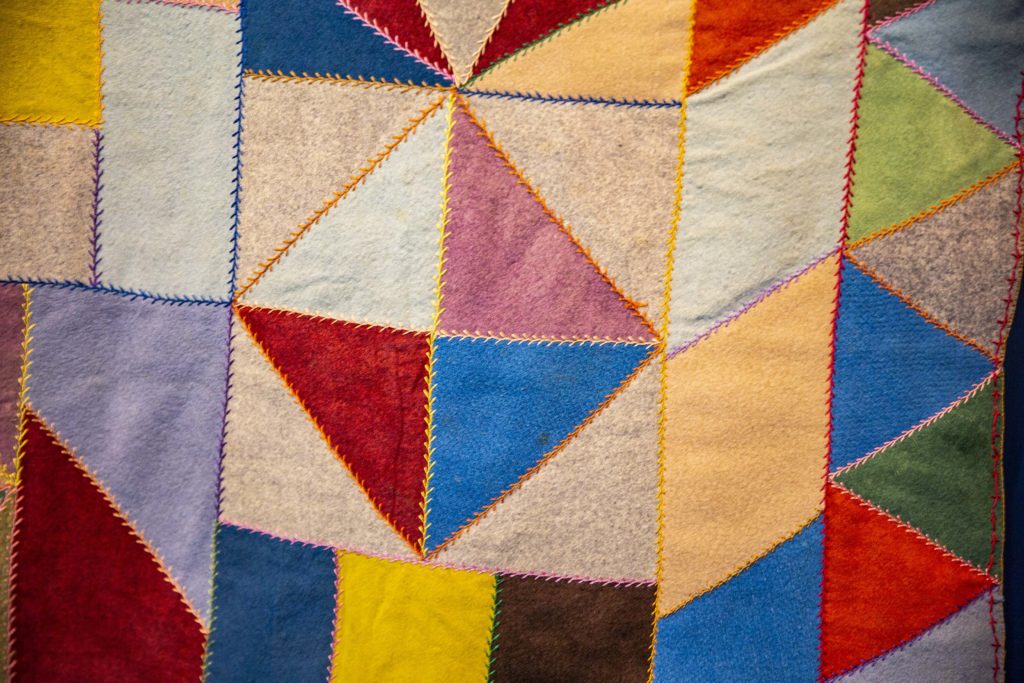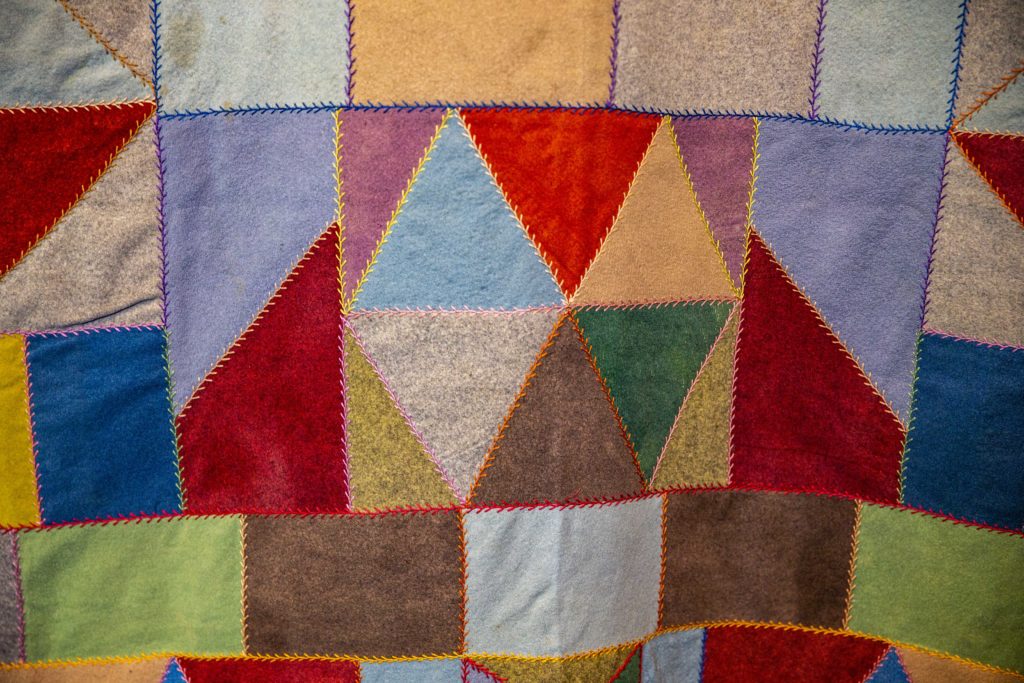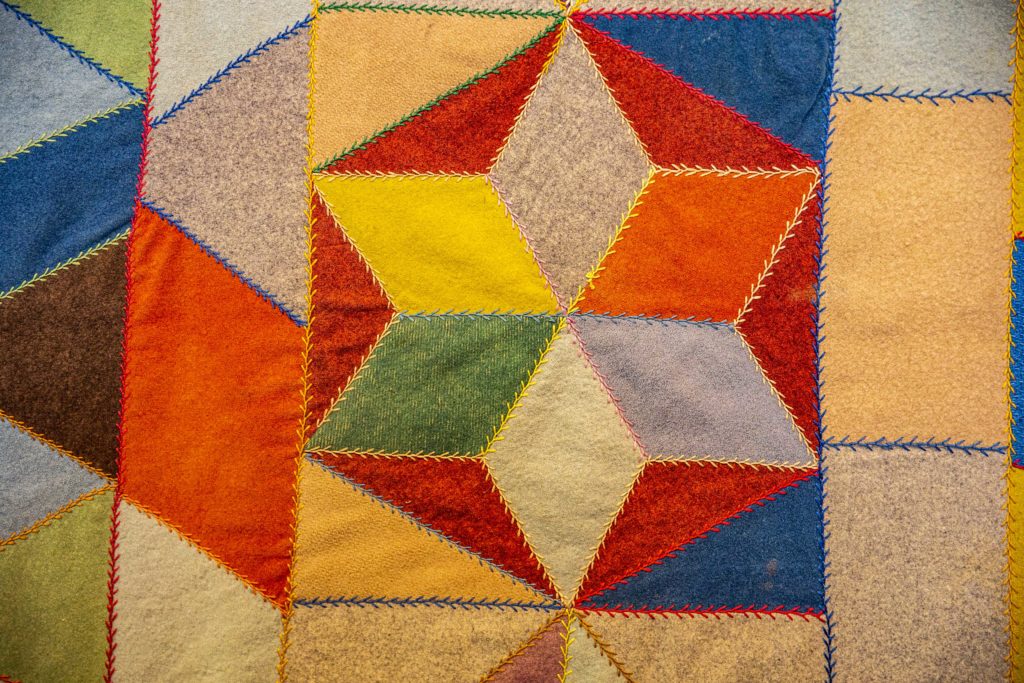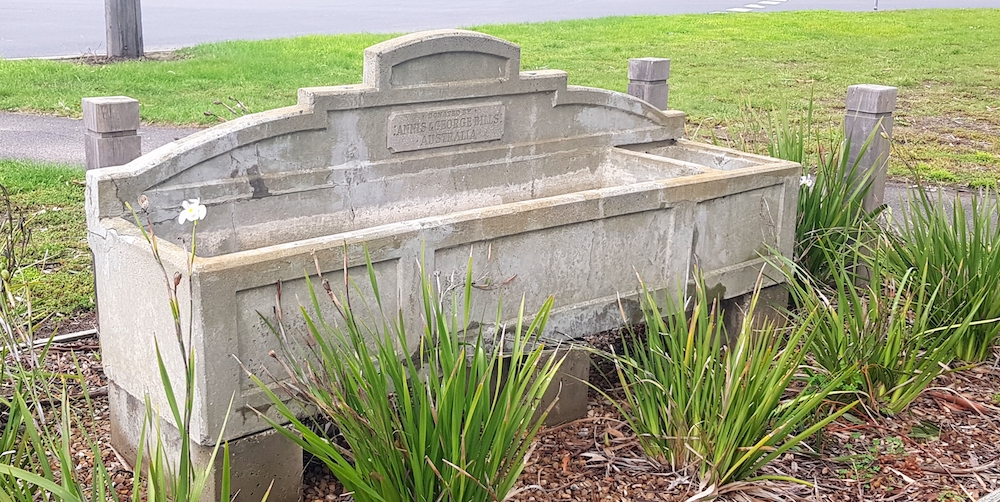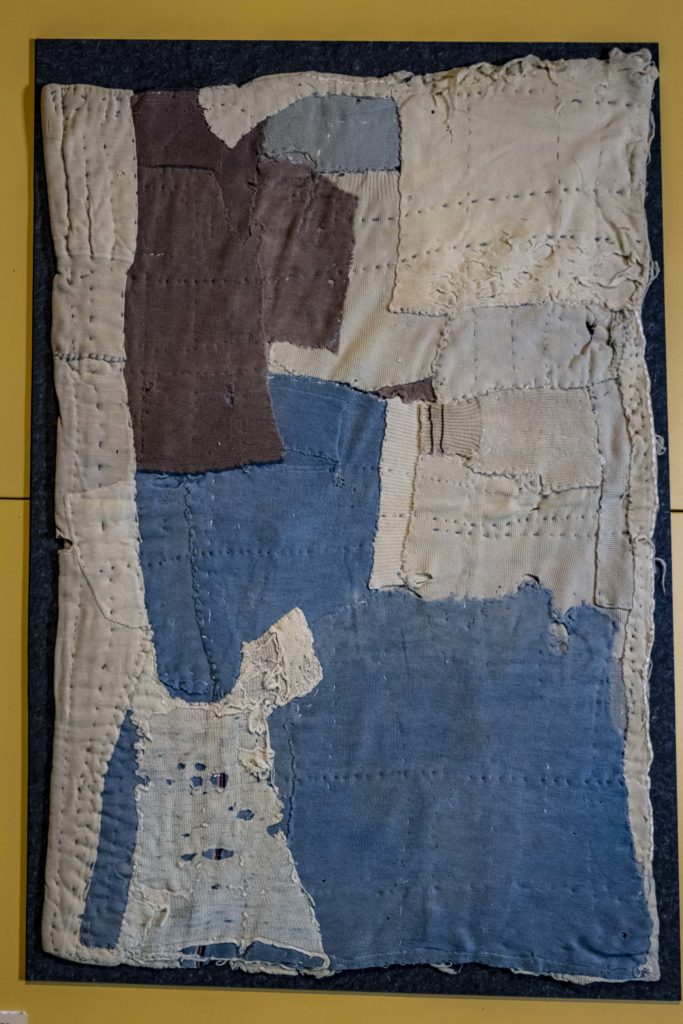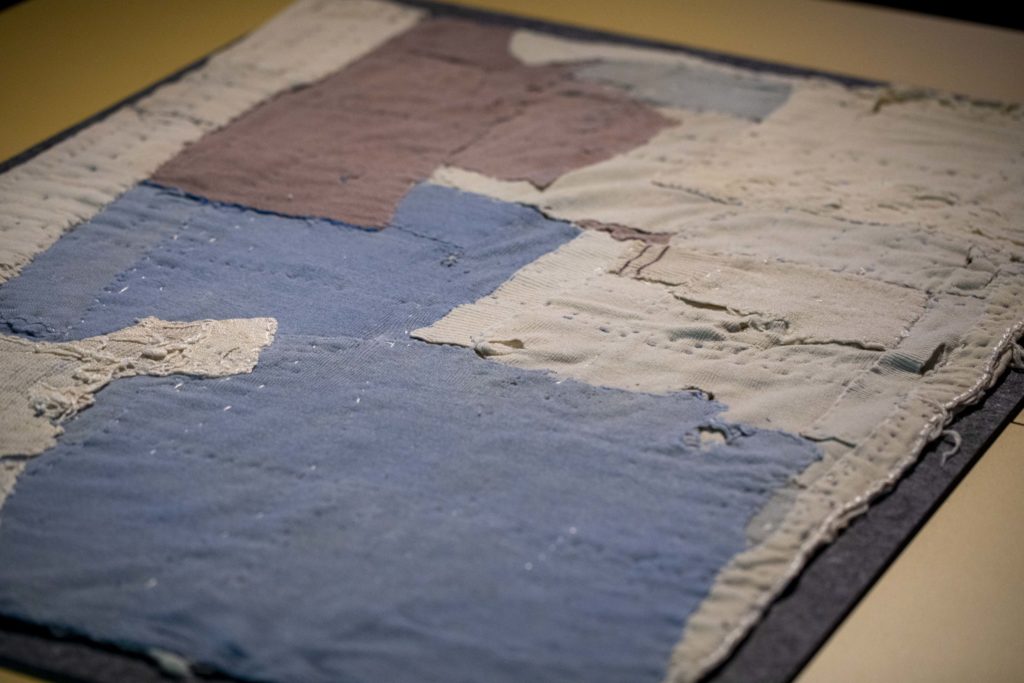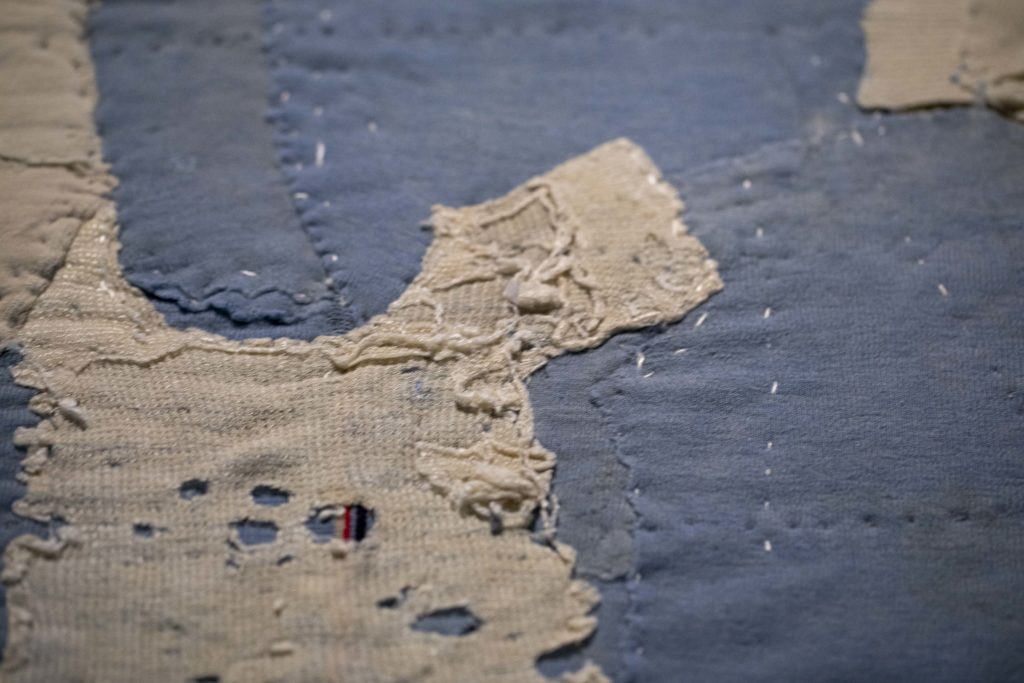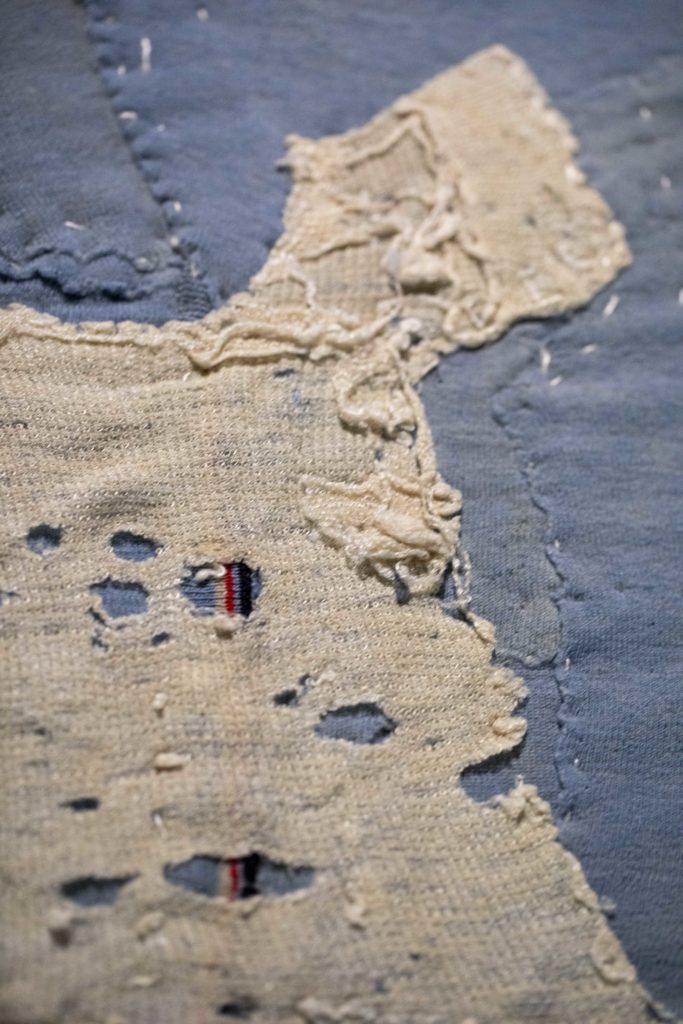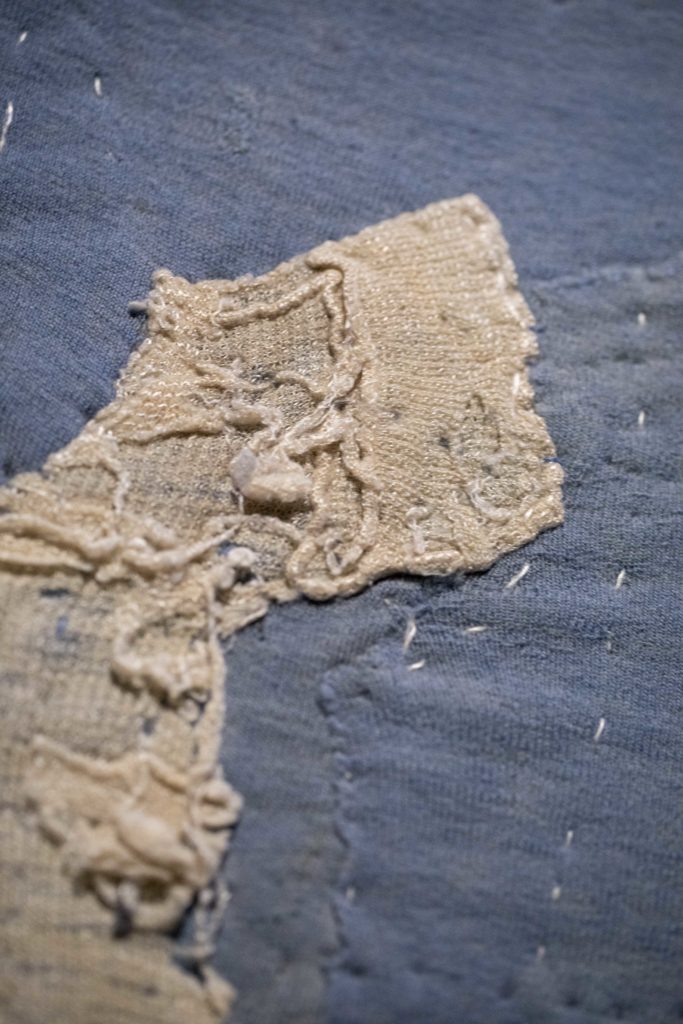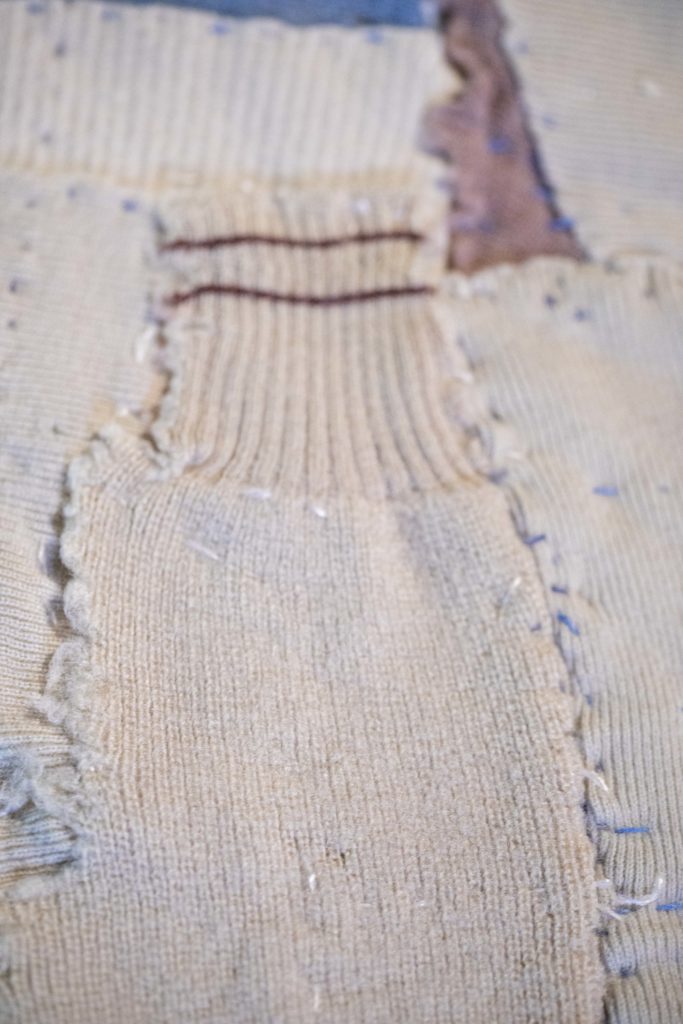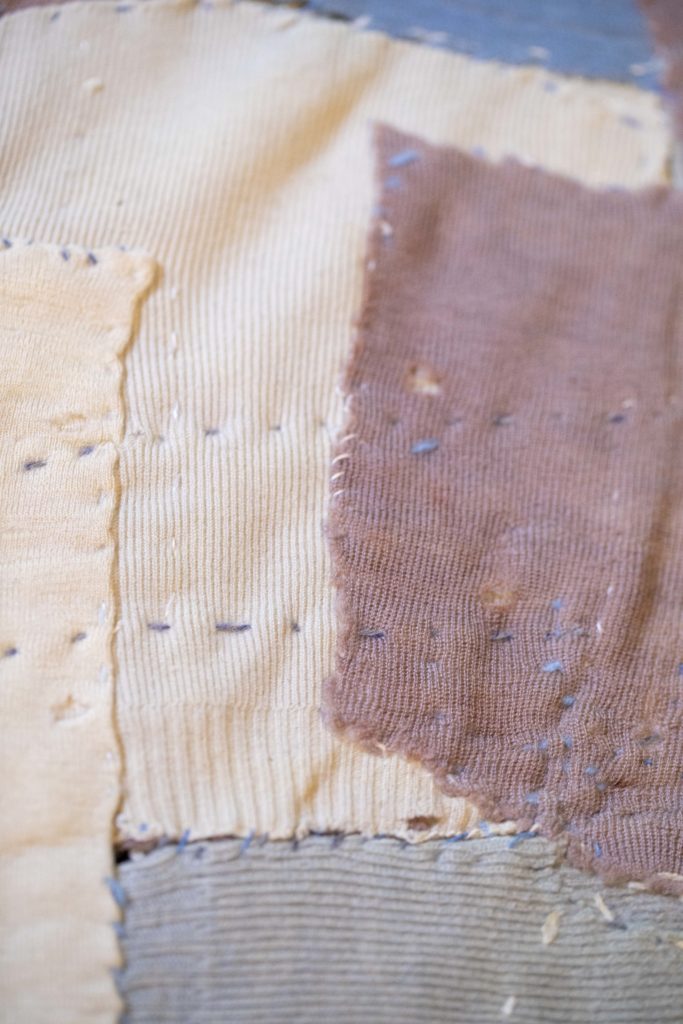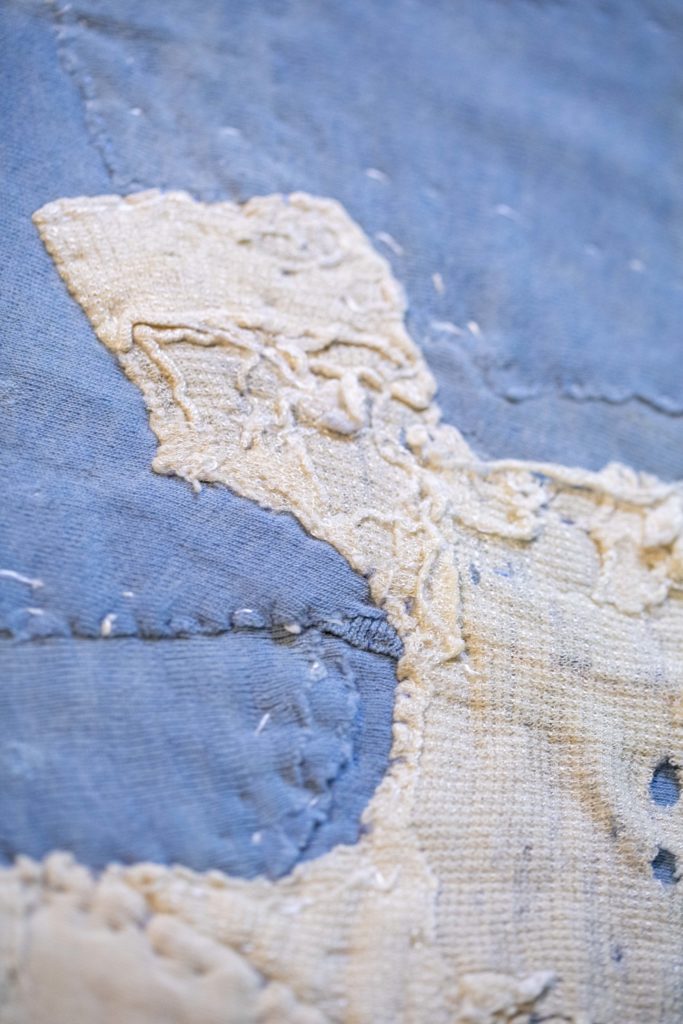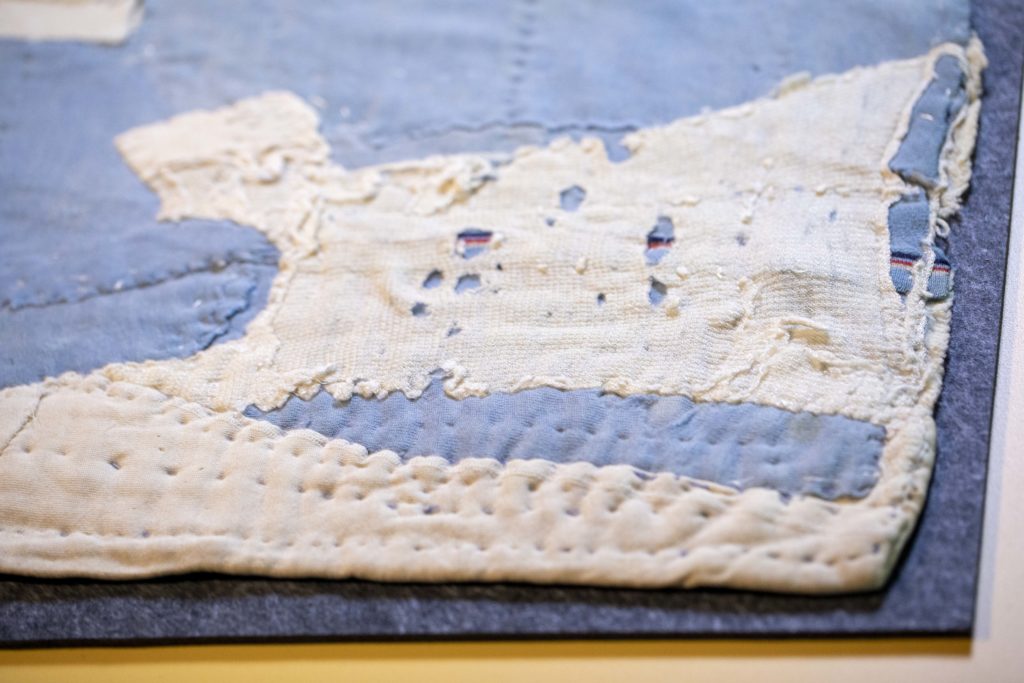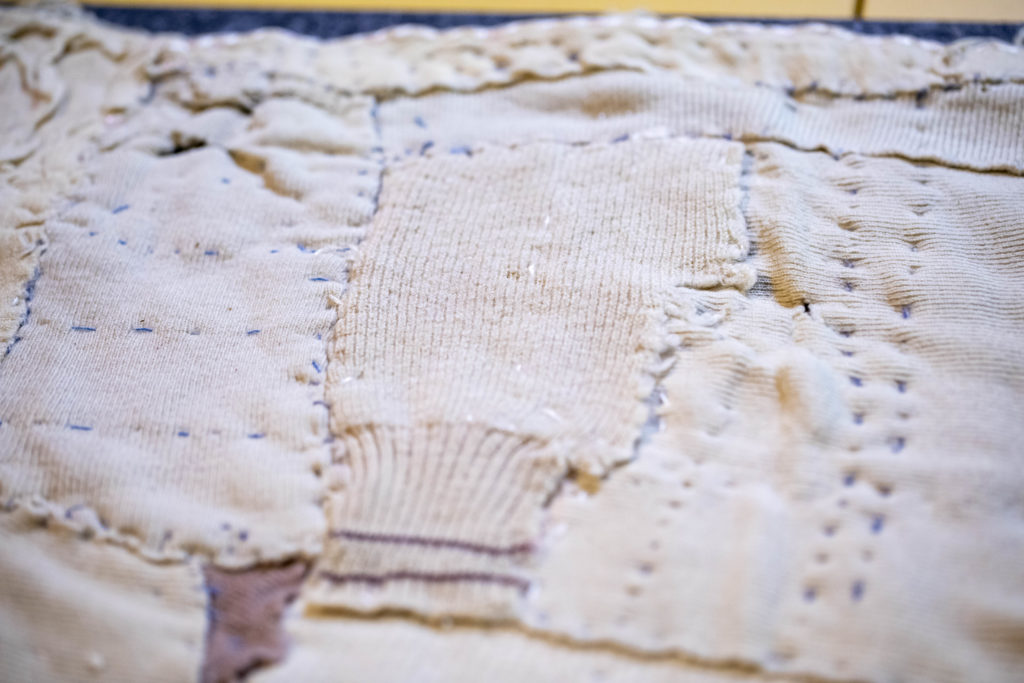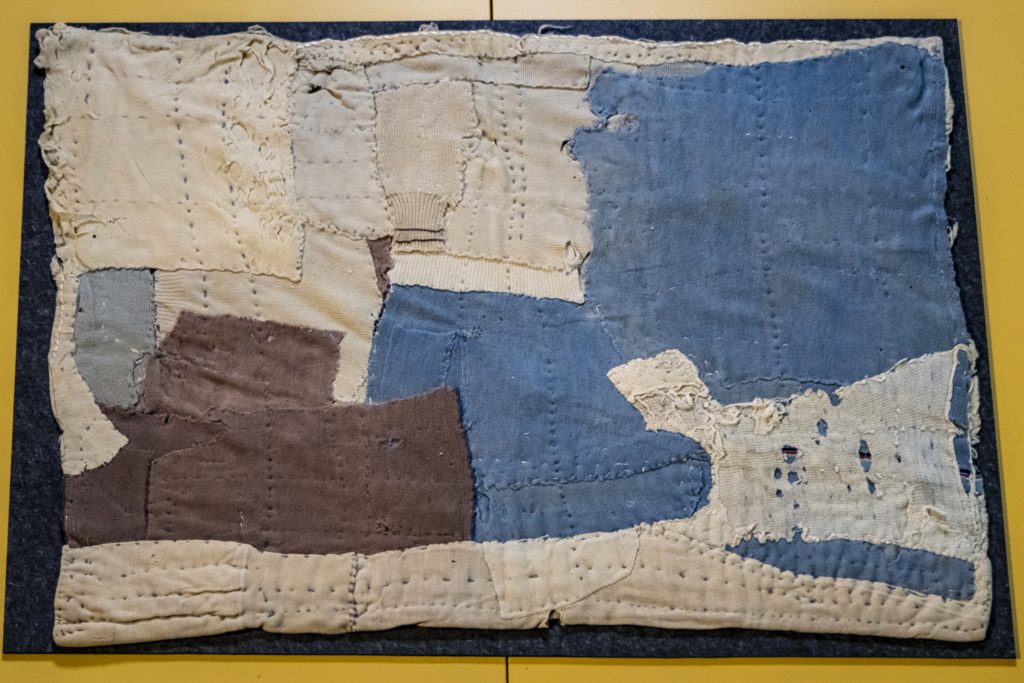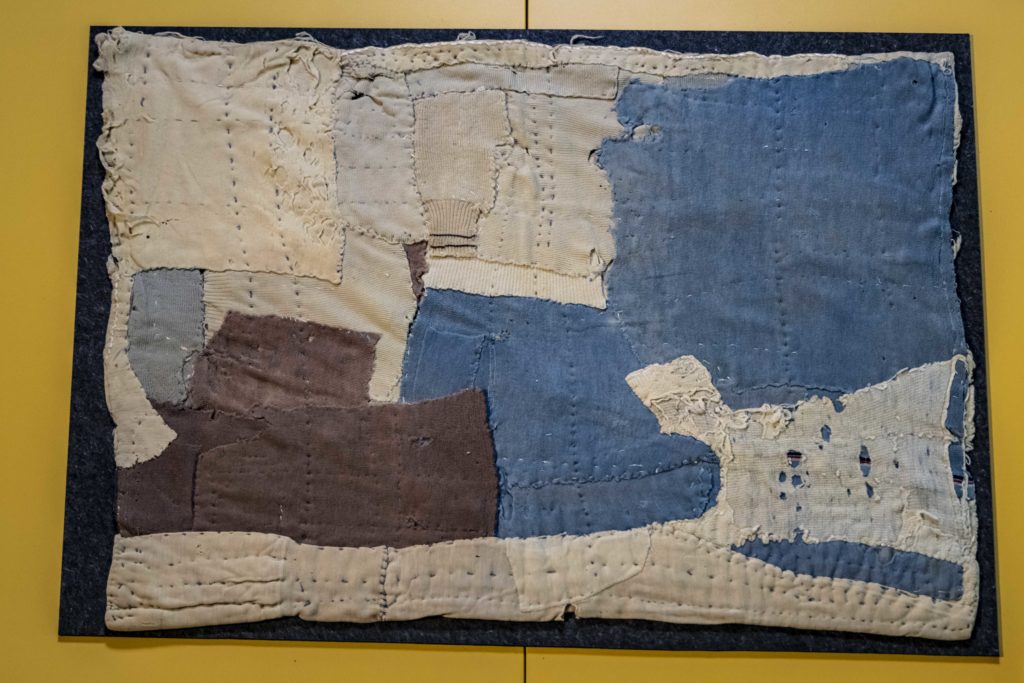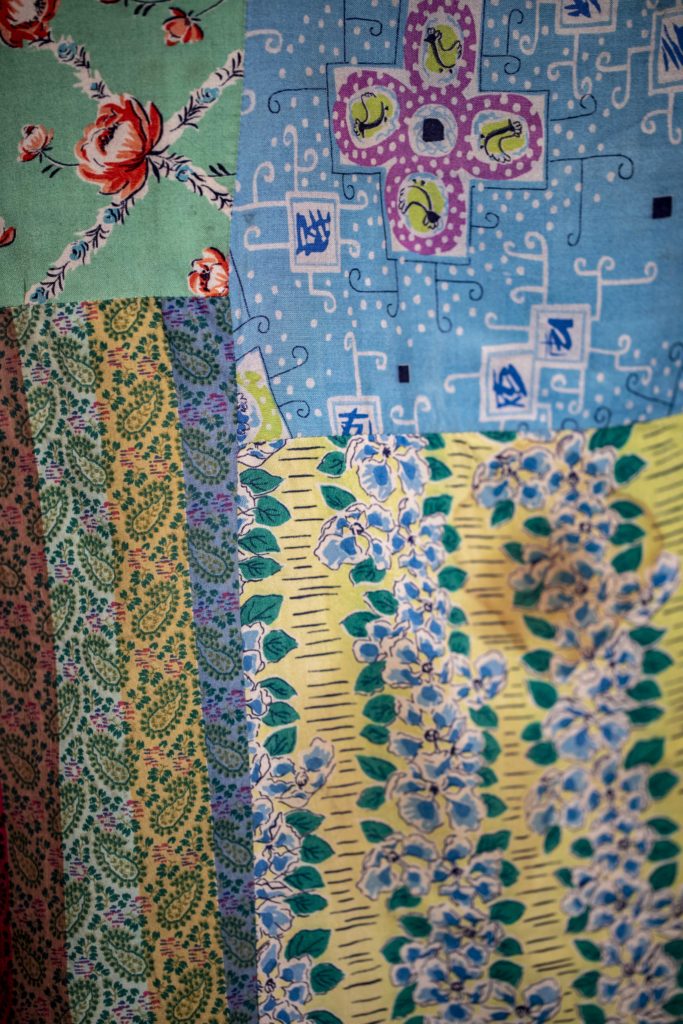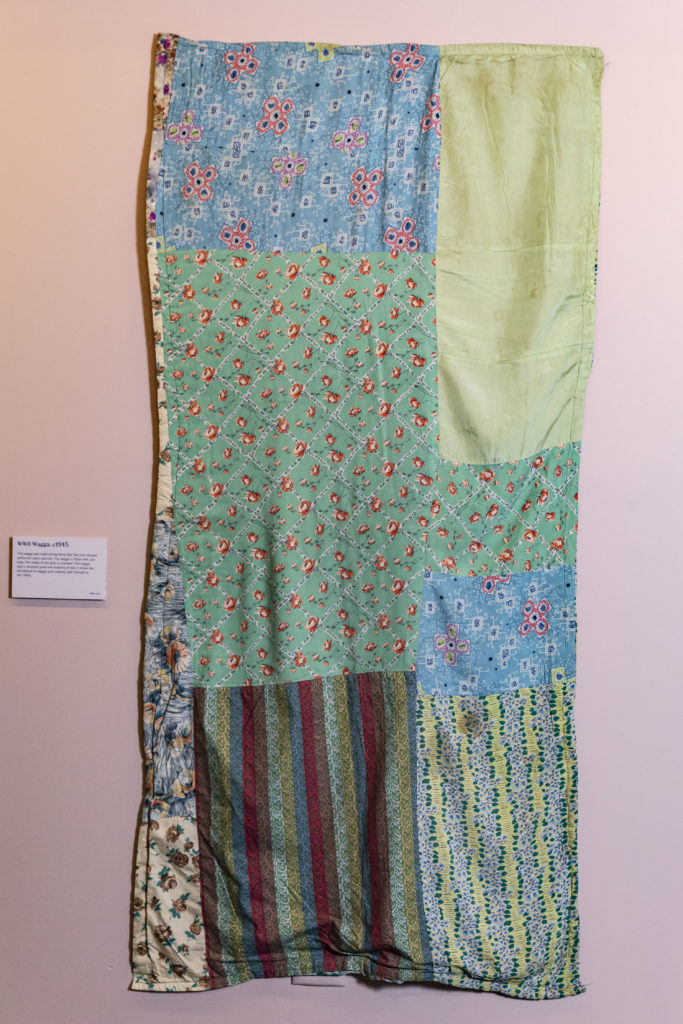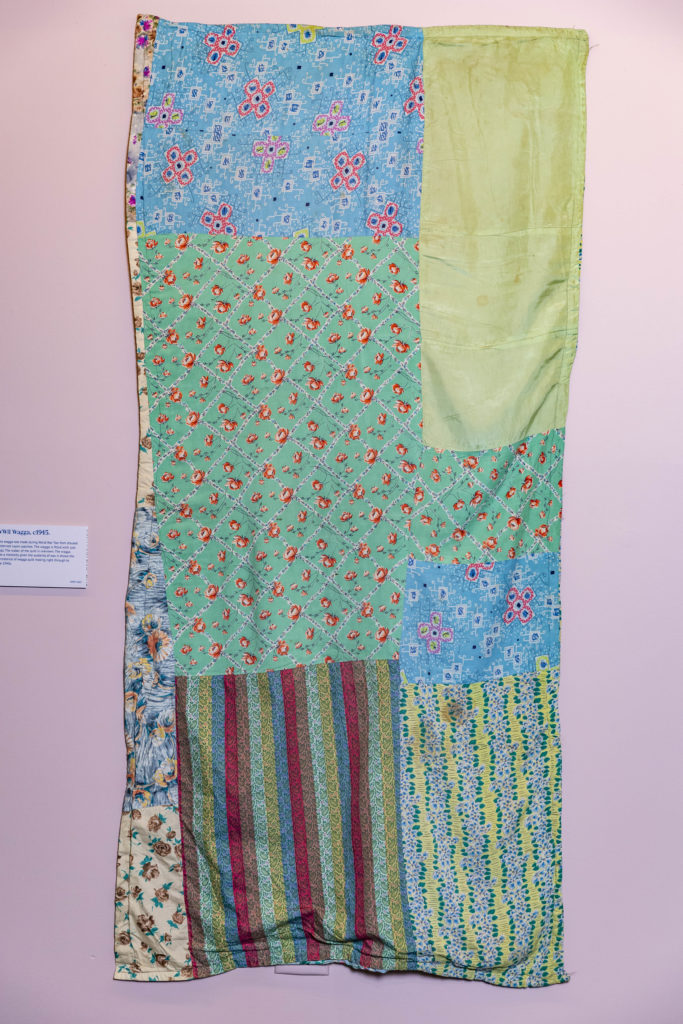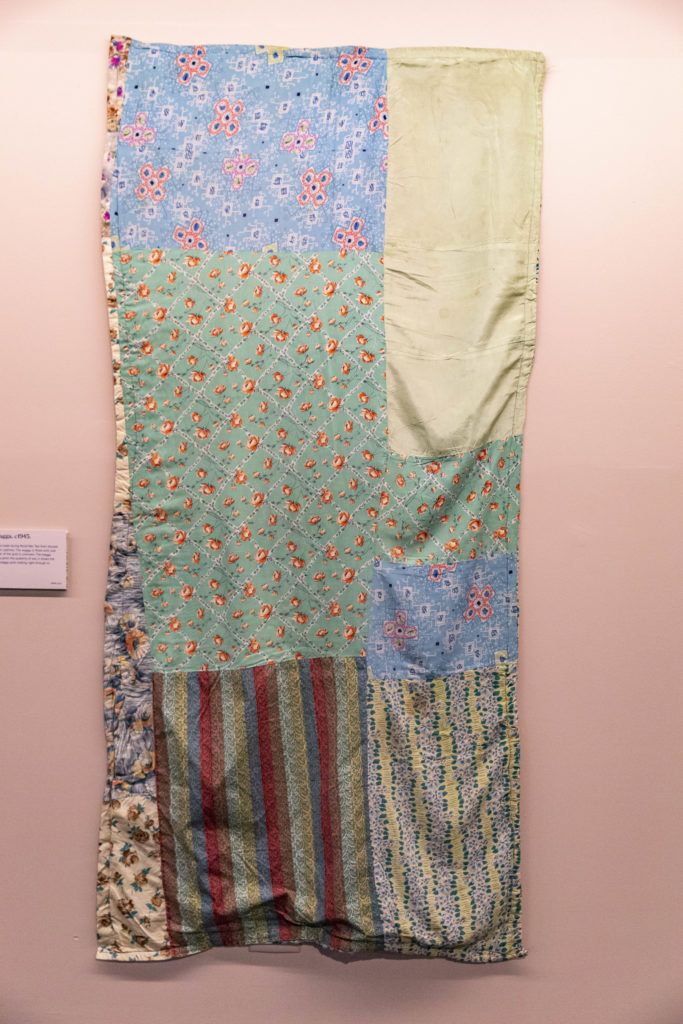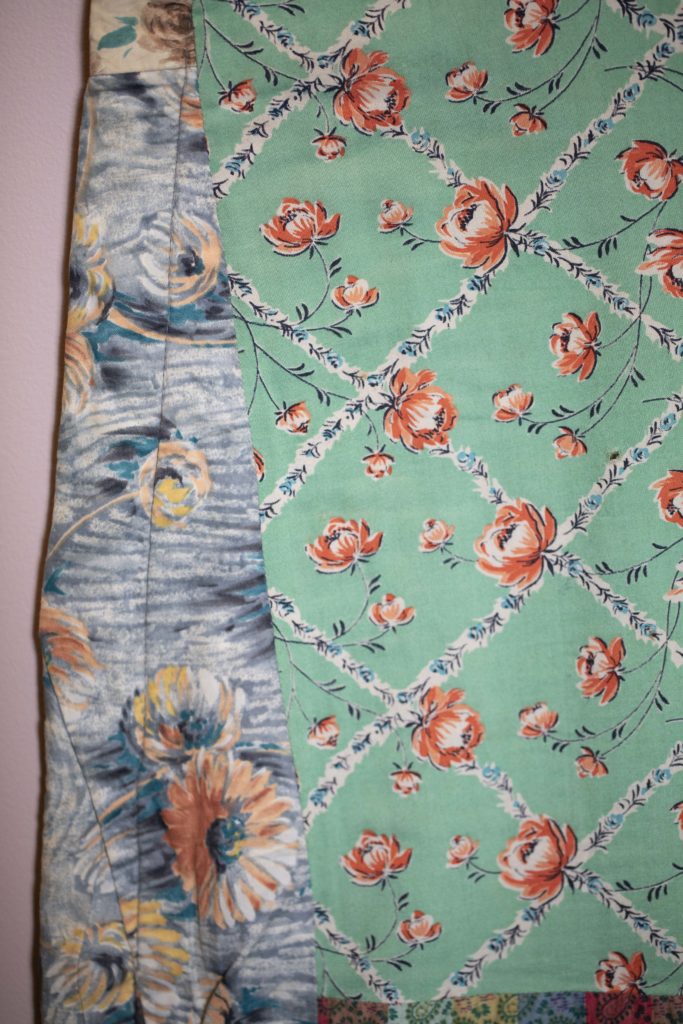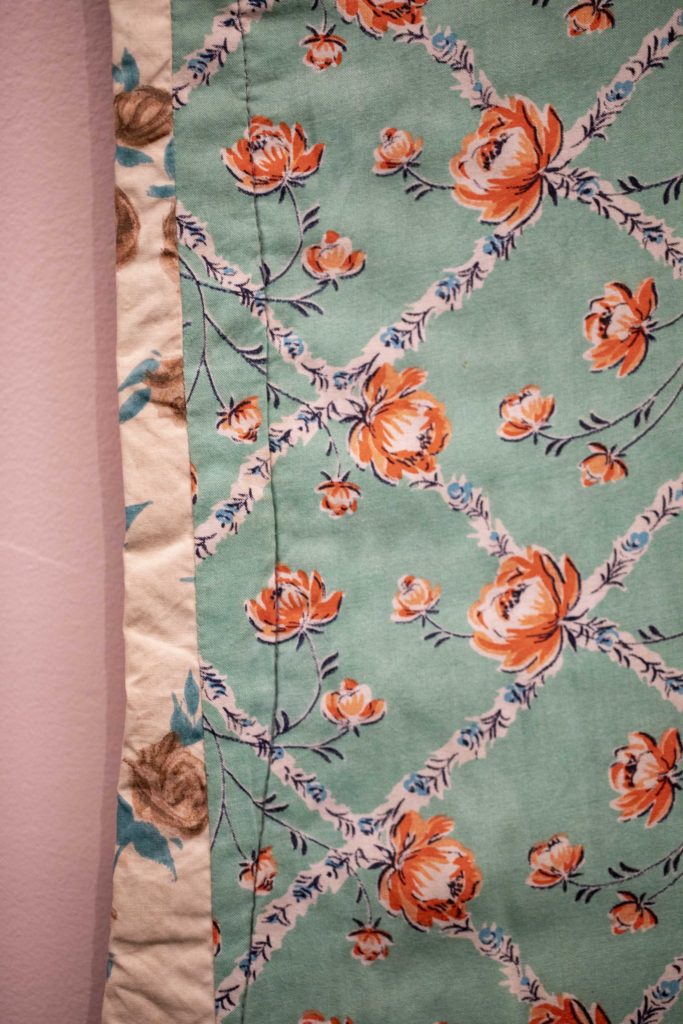British submarine periscope tip
Geelong has a special relationship with submarines. Osborne House in North Geelong was the home of Australia’s first submarine fleet. From 1919-1922, it housed the 6 J Class Submarines gifted to the Australian Government by the Royal Navy. Several hulks of these submarine still survive in Port Phillip Bay. After being decommissioned due to their cost and the economic struggles of the time, four of the boats were scuttled off Barwon Heads. The two other boats were sunk and utilised as breakwaters.
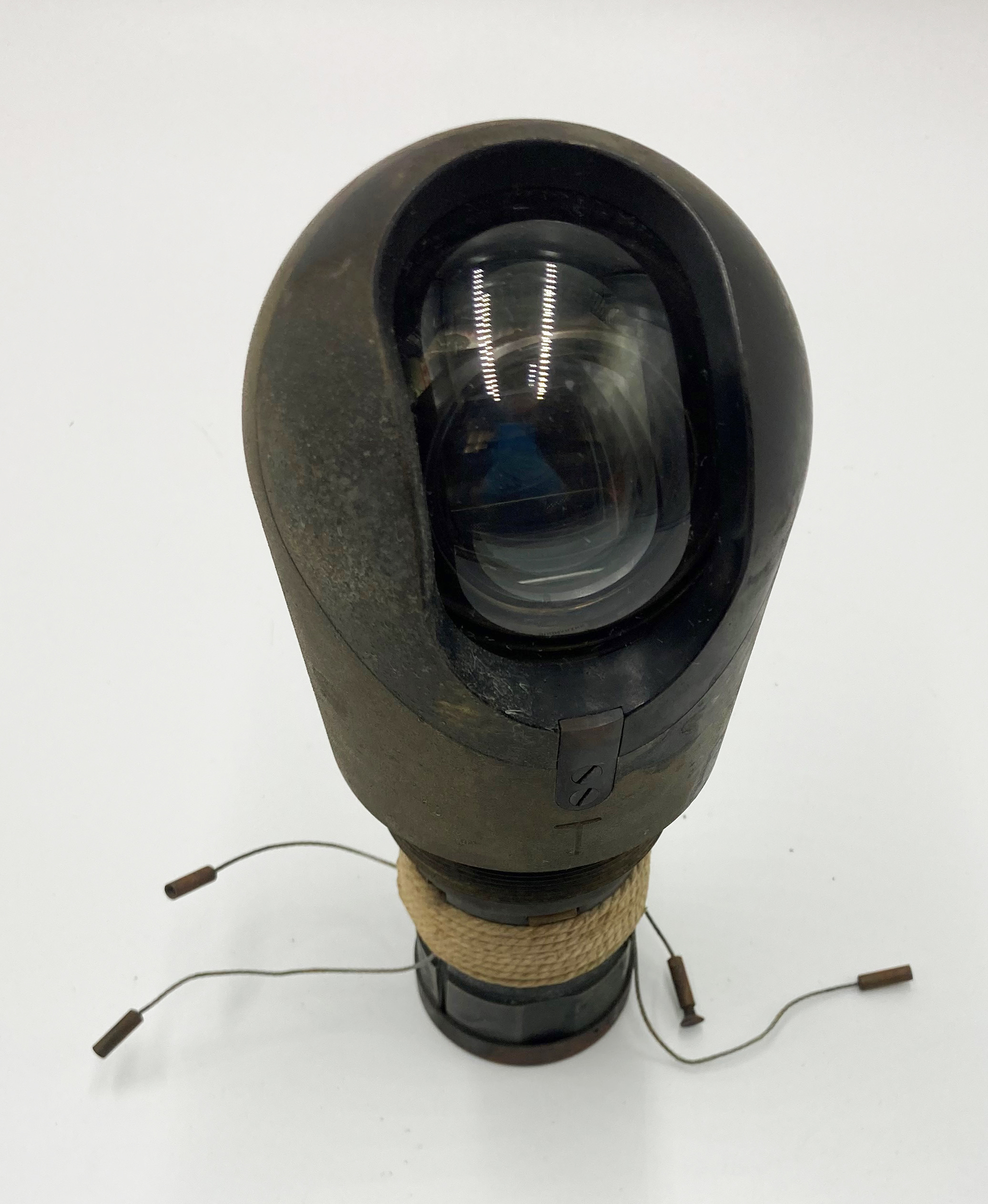
Medallion
This medallion was struck to celebrate the 100th anniversary of fellmongering in Mazamet in 1951. Fellmongering – In French, ‘delainage” means, literally, ‘de-wooling’. It is the industrial process of separating wool from sheepskins. In the 19th century, the southern French town of Mazamet became the world centre of délainage and played an important part in the Australian wool industry. At one time Mazamet was reputed to be the 15th richest town in Europe, and it was said that the town’s branch of the Banque Nationale de Paris (French banking firm) was the second largest in France. At its height, Mazamet had 48 fellmongeries and imported more than 100,000 tonnes of sheepskins a year from the southern hemisphere, mostly from Australia and Argentina. The town continues to have a strong relation to Australia, with street names such as, Rue de Australie, Adelaide, Brisbane, Melbourne and Sydney.
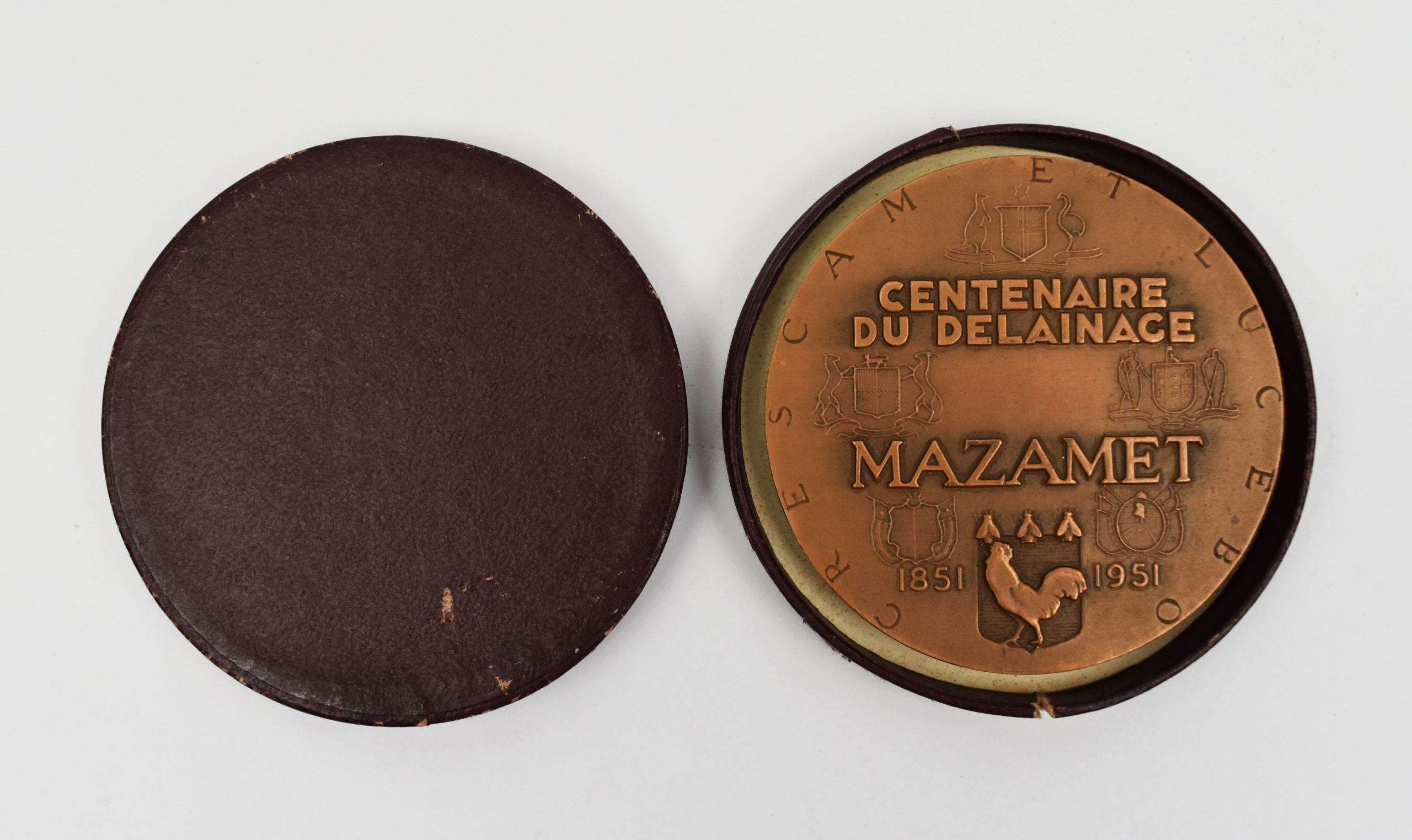
Solace
This memorial offers solace for people affected by road trauma, a space for quiet contemplation and reflection. The phases of the moon symbolise the stages of grief, the journey from loss toward acceptance and hope. A project delivered by the City of Greater Geelong, in partnership with the Transport Accident Commission and supported by Road Trauma Support Services Victoria and the Uniting Church in Australia, Synod of Victoria and Tasmania.”
Town Clerk Chest
Painted black enamel metal chest, thought to be the original lock box used by William Weire, the first Town Clerk of Geelong. It was used to store important documents such as early leases and agreements.
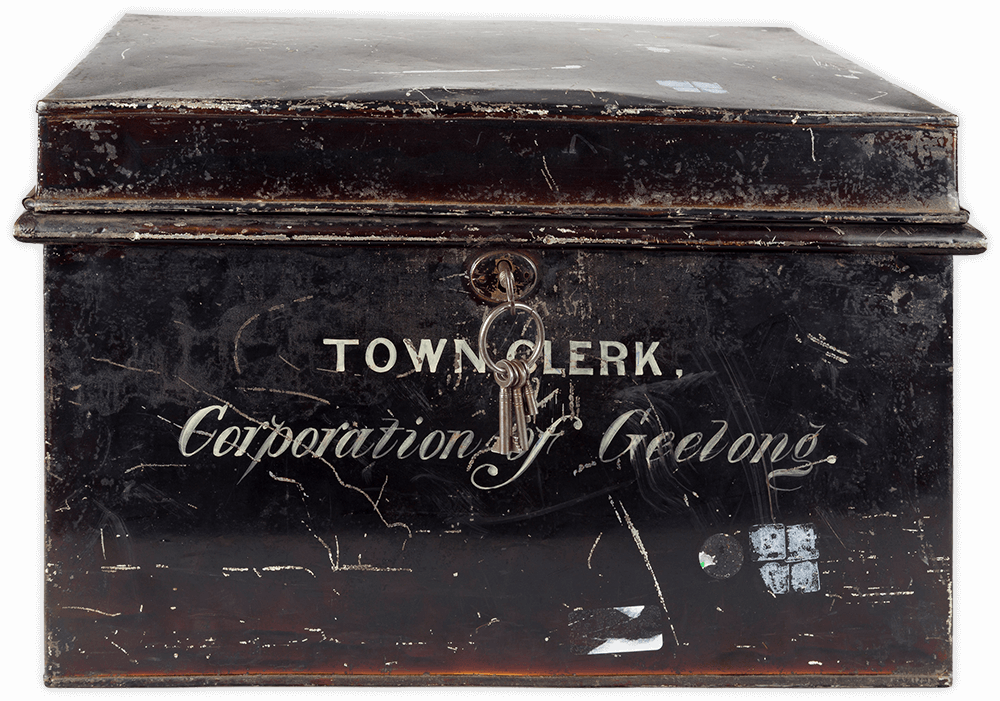
Patons and Baldwins' Specialty Knitting Books
Patons and Balwins’ and many other yarn companies published kitting pattern books during the World War I and II containing instructions for articles of clothing carefully chosen to meet the requirements of the armed forces. Many of the articles of clothing were distributed by the Red Cross and Australian Comforts Fund.
Domestic Wagga
Mrs Faulkner of Bendigo made this wagga for her father in his later years when a hot water bottle was considered too dangerous and a blanket was not warm enough. It was donated to the Running Stitch Collection by Mrs Faulkner after she saw their memorabilia exhibition curated by Murray Walker at the Museum of Victoria in 1985. Mrs Faulkner sent the wagga down on the train and Lois Densham picked it up from ‘Travellers Aid’ at Spencer Street station. Many of the quilts in the National Wool Museum Collection were originally part of the Running Stitch Collection.
Child’s Coverlet
This child’s coverlet was made from old blankets and clothing pieces with curtain and blanket backing. Maker unknown, from the Ballarat area.
Red Cross Crazy Quilt
This is a classic crazy quilt. Although not technically a wagga, crazy quilts took many of the ‘make do’ techniques of wagga quilt making. This quilt was made in Highton, Geelong. It is a double bed sized quilt in the classic ‘crazy’ style with extensive use of herringbone and feather stitching. The pieced style of the quilt, made from squares of patchwork, is similar to the style of quilts made by members of the Country Women’s Association (CWA). The women sometimes made a quilt as a group activity and this one was possibly a 1930s group creation.
THE WHITE FARM
The White Farm is a series of eleven artworks by Linda Gallus of a neglected sheep and cattle farm in Curlewis, Victoria. Purchased in 1994, the property was painted white for sale. The shearing shed has not been used since the sale and has turned to ruin over the last thirty years. Gallus was compelled to capture these buildings and their strange patina of white paint before nature reclaimed them completely. Two artworks from the series, Another Gust of Wind and Green Trough, are now part of the National Wool Museum Collection.
Child’s Cot Quilt
One of the earliest examples of a wagga quilt that exists in Australia. This quilt was made from reused patches and fabric scraps that were stitched together to create a warm covering for a child to sleep under. The quilt was made in Daylesford, but little is known about the maker or users of this quilt. As early as the depression of the 1890s, when times were difficult in Australia, making do became a way of life. The wagga quilt entered the list of uniquely Australian inventions that helped us survive through lean times.
WARM
WARM was a community project about why the earth is warming and what people can do about it. It was led by the artist collective called SEAM – Sustainable Environment Arts Movement. It comprises two large-scale artworks created by Lars Stenberg. First, a landscape scarred by coal mining. Second, the same landscape many decades later, regenerated and renewed after the closure of the coal mine. In 2016, 250 knitters from across Australia created more than 1,000 knitted pieces. During several days of installation, these knitted pieces were assembled to create the image of the renewed landscape. WARM was a sustainable project. All knitted elements were from left over, reused or organic wool. Any unavoidable emissions created as a result of delivering the project were offset by trees planted by Fifteen Trees. WARM has recently found a permanent home in the National Wool Museum’s Collection. Paintings by Lars Stenberg
Knitted pieces designed by Georgie Nicholson
Graphic design by Mel Stanger
Child’s Coverlet
This coverlet was made for Chris Neyland by Rene Densham when he was born in 1953. The quilt was created from scraps of woollen fabric from clothing used in the family. It was used in Chris’ cot or pram when he was an infant. His aunt Lois Densham donated the quilt. Lois can remember the dark green fabric coming from a jacket she once wore and the blue tartan pieces from a skirt worn by Rene, her mother. Lois also remembers her mother being “a better piano player than a cook or a sewer”. According to her, the quilt was “made in the tradition of making do from a family who knew how”.
Lizzie Morton’s Suit Fabric Wagga
This distinctive wagga was made by Mrs Lizzie Morton on her farm ‘Wanera’ at Benjeroop on the Murray River. It was stitched with a treadle machine. Her sister Flora MacDonald did the running stitch and provided the silk backing. The squares were sent as samples from a firm called ‘Fred Hesse’ who advertised in the Melbourne papers: “Be smart and dressy in a suit by Fred Hesse”. The buyer chose a sample and then sent it back with measurements and received a ‘mail order’ suit. In this case, the samples were used to make this unique quilt that has survived from the 1930s.
Patchwork Quilt
This turn-of-the-century English quilt is made from tiny hand-worked patchwork squares reminiscent of medallion style quilts. It is an extraordinary example of early quilts that arrived in Australia with immigrants. The maker is unknown. When it was found it was being used as packing material. The form and the aesthetic of this classic European quilt demonstrates the stark contrast with Australian wagga quilts. Through the difficult times of the 1890s and 1930s the wagga became a uniquely Australian form.
By Wagga Design
The wagga quilt still lives on in quilting circles and the Australian imaginary. This contemporary take on the wagga is the winner of the Art Quilt Australia and National Wool Museum’s Expressions: Wool Quilt Prize (2019). Barbara Mellor, of St Helens in Tasmania, made this wagga after researching their history and was fascinated by this early form of recycling. Barbara sourced the used fabrics from a variety of places. Some are from her personal collection while others were given to her. She purchased a woollen three-piece suit from a local op shop and decided to incorporate it into the design, making some unique and distinctive shapes. Another notable feature of the quilt is the patch labelled ‘Parkside’. It was cut from a blanket she purchased from a garage sale from a property that had been the ‘Parkside’ caravan park in the 1960s. The filling of the wagga includes the rest of the Parkside blanket.
Green Wheat Bag Wagga and Wheat Bag Wagga, 1945
These waggas were made and owned by Percy Perkins. He was a keen fisherman and hunter his first love was sitting on the banks of the Murray River with a fishing rod in his hand. Family camping trips were spent by the river where everyone slept on stretchers with several army blankets underneath and a wheat bag wagga on top. Perkins joined the police force in his early twenties and apart from an eighteen-month posting in Melbourne, spent the rest of his career serving communities in country Victoria. A good wagga accompanied Percy on all his fishing and hunting journeys. The green colour of the wagga is from ‘Dekkol’, a preservative which Perkins used to protect his cotton fishing nets from rotting. The second wagga is made from two standard sized jute wheat bags split and hand bound along the seams. It is typical of a basic wagga made by shearers, farmers and swagmen. The paint stains on this wagga display signs of later use as a painting drop sheet by descendants who inherited the quilt.
Tricycle
The Geelong Gaol was proclaimed as a Training Prison from the 1950s and in this role was used to educate prisoners in various trades including printing, sign writing, painting, tailoring, brick laying and toy making. This tricycle was made by a prisoner in the 1950s.
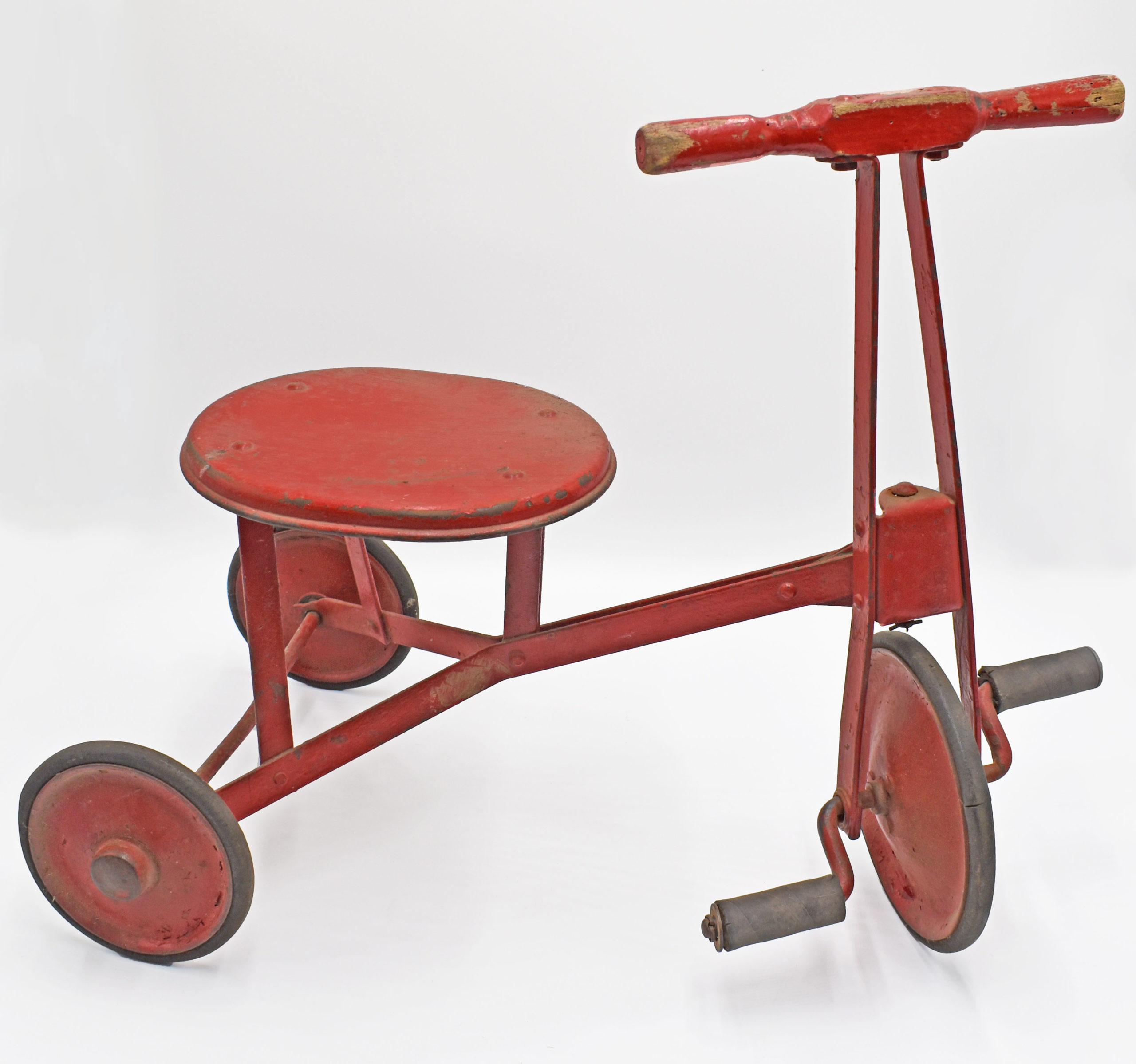
Belcher Fountain
The Belcher Fountain was created by the Britannia Ironworks in Derby, England and presented to the town of Geelong by Mayor GF Belcher at the end of his term in 1874. This drinking fountain is a testament to the Temperance Movement that advocated the restriction of alcoholic drinks. The fountain is one of the oldest heritage objects in Geelong’s Outdoor Collection.
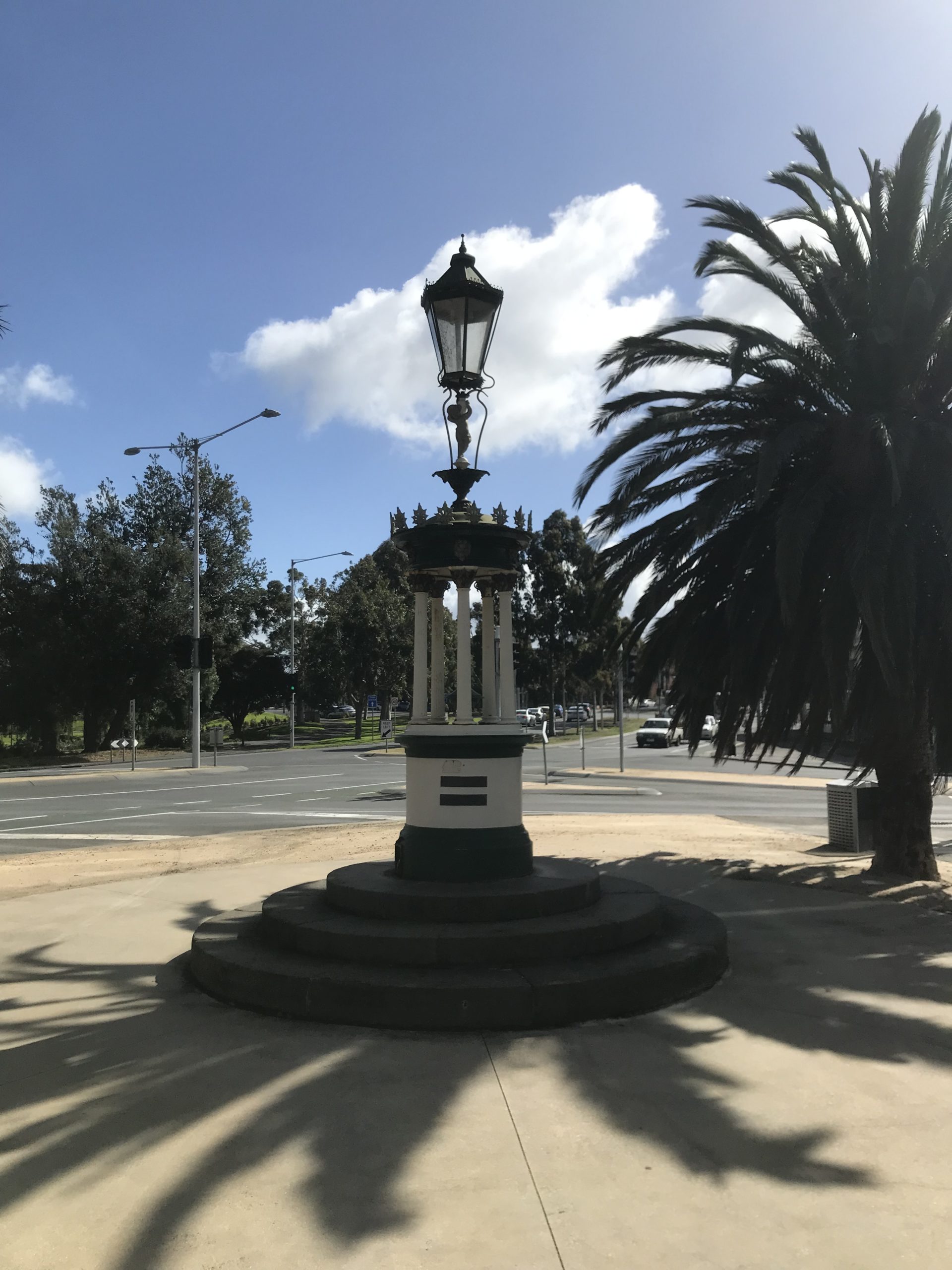
Harry Walter Wilton’s Quilt
This quilt was made by Harry Walter Hewitt Wilton (1872-1950). Harry joined the Essex Regiment and served in the British Military in India and also served in the Second Boer War. He married the seamstress Mary Elizabeth in India in 1895. Harry was injured during battle and made this quilt as part of his rehabilitation. The quilt was made using woollen army singlets. Harry and Mary moved to a farm near Orbost, Victoria, in 1914. The quilt remained in the family until 2019.
Geelong Football Club Jumper
This was the jumper of John Brown, who played 48 games for Geelong including the 1963 Grand Final in which he wore this jumper. Formed in 1859, the Geelong Football Club is the second oldest in the Australian Football League and one of the oldest clubs globally.
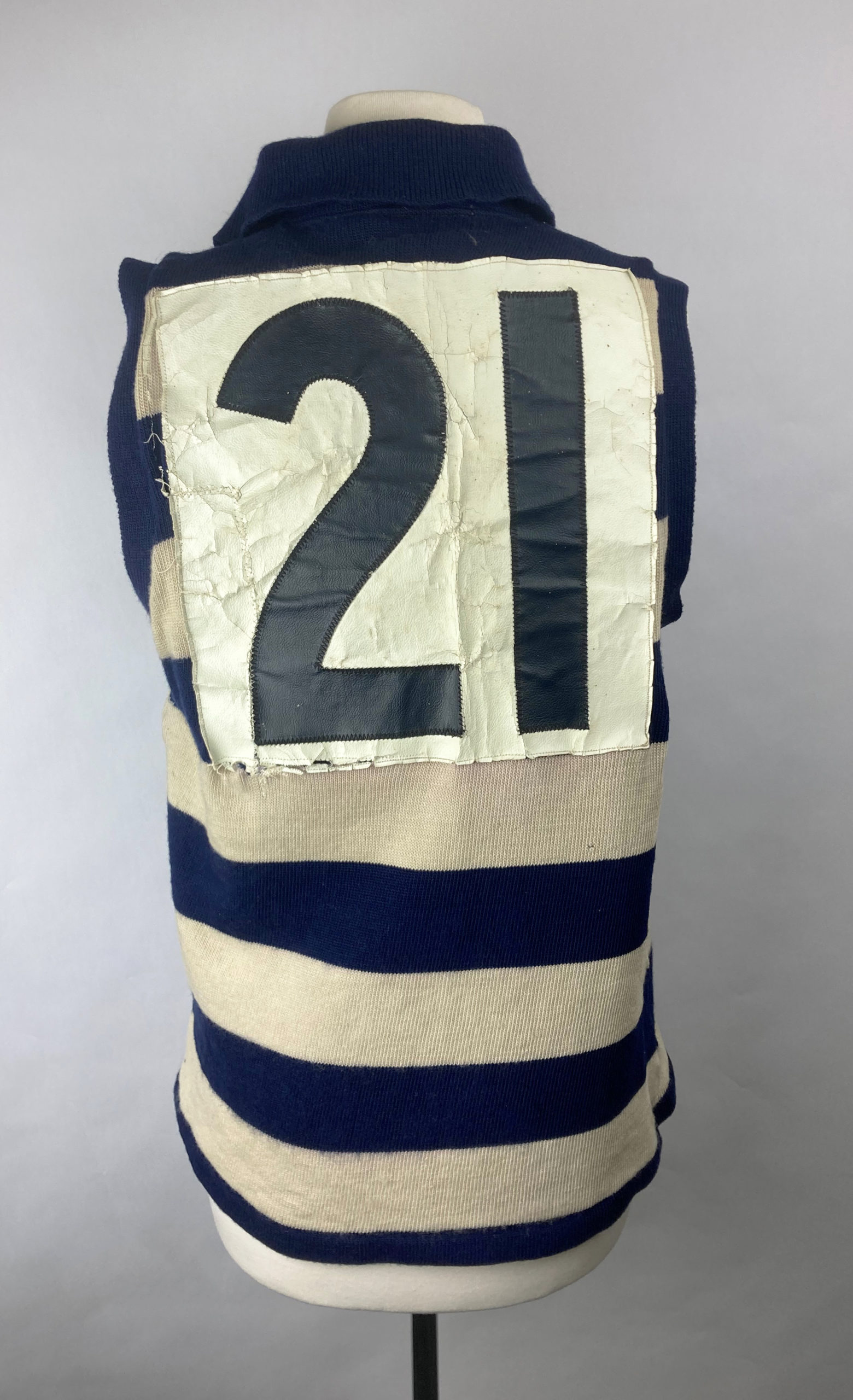
Concrete Trough for Animals
George and Annis Bills were philanthropists with a love of animals. They established a trust for the protection and alleviation of suffering to animals which furnished over 500 public horse troughs between 1924 and 1945 — three which remain within the Greater Geelong area.
Most troughs were installed in Australia; over 300 remain. Troughs were also installed in England, Ireland, North America, South Africa, Japan and Switzerland. Each trough cost £13 (just over $1000 today) to fabricate and install in the 1930s. From the 1880s to 1900s, George and his brother Henry ran successful businesses importing and selling birds, and manufacturing mattresses and sofas. George and Annis were keen supporters of the Society for the Prevention of Cruelty to Animals; George later becoming a Life Governor of the RSPCA. Annis and George built the first troughs in 1908. Annis died soon after, and George set up a trust to: ‘construct and erect and pay for horse troughs wherever they may be . . . desirable for the relief of horses and other dumb animals either in Australasia, in the British Islands or in any other part of the world’.
To honour his wife and country, each trough was to be labelled ‘Annis and George Bills Australia’. Following George’s death in 1927, the trust was administered by his sister Daisy Cook. Initially the troughs were individually designed and constructed. Then in the early 1930s Jack Phillips, a relative of the Bills, produced 250 precast concrete troughs to a standard design at his Hawthorn factory. Rocla pipes took over production in the late 1930s, which discontinued around 1945. The Bills’ Trust shifted its focus, helping to finance the RSPCA Tally Ho Animal Rest Home and the George Bills RSPCA Rescue Centre during the 1960s.
North
North, by Mark Stoner (2000) consists of seven cement objects resembling sails or fins that vary in size from 2.2 to 3.5 metres high. No two fins are positioned on the same plane and by moving within and around the sculpture the profiles change quite dramatically.
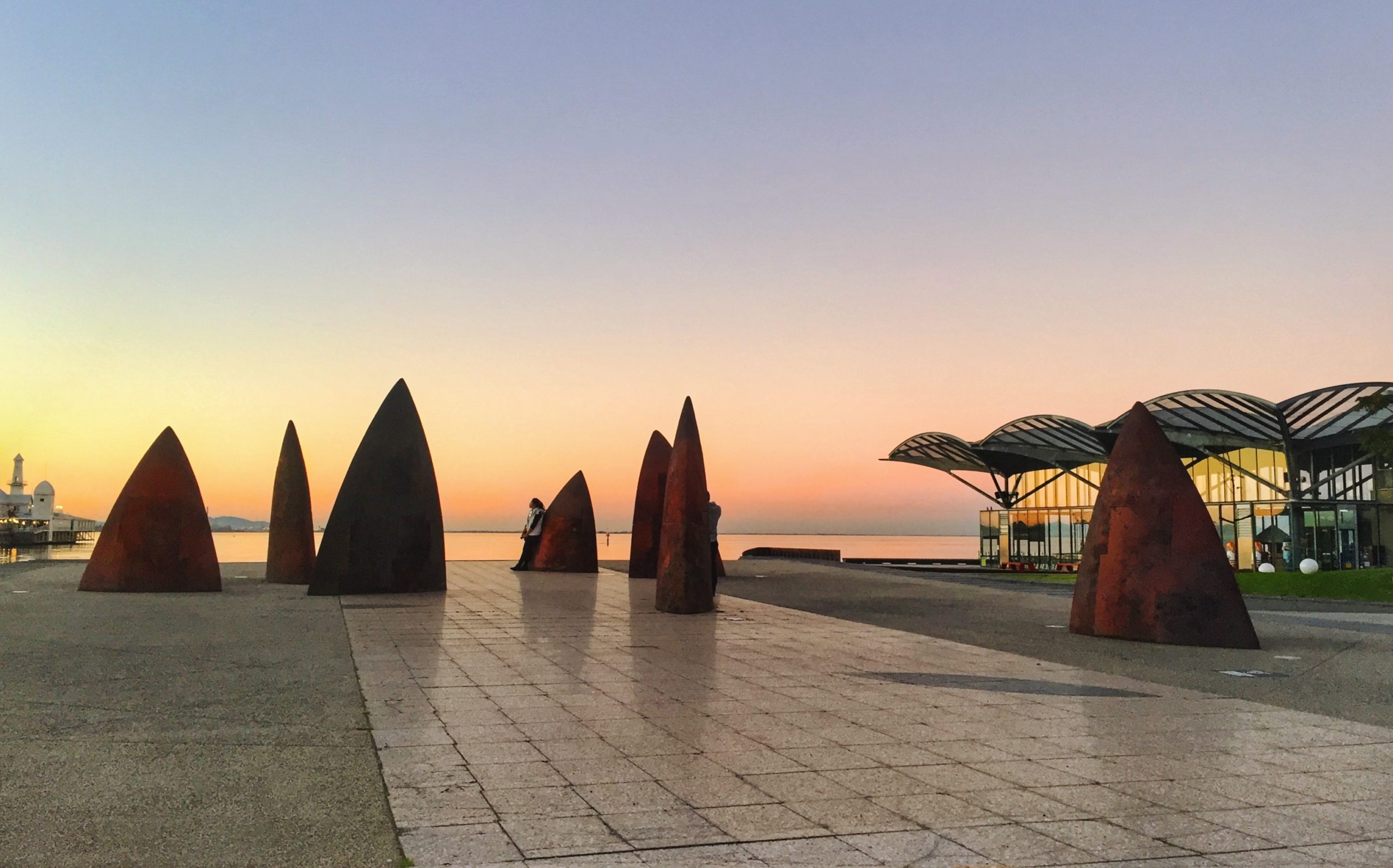
Child’s Cot Cover Insert
This wagga was made by Jean Hepner’s grandmother from used woollen garments during the Great Depression. The garments were hand stitched on to an old woollen blanket. The quilt was used by at least five of the seven children in the family. It had assorted covers that were replaced when needed. In later years, it was also used by Hepner’s grandchildren.
World War Two Wagga
This wagga was made during World War Two from disused patterned rayon patches. The wagga is filled with jute bags. The maker of the quilt is unknown. The quilt shows the persistence of wagga quilt making right through to the 1940s.
